|

|
|
AGENDA
Ordinary Council meeting
Monday, 24 February 2025
|
|
I hereby give notice that an Ordinary meeting of
Council will be held on:
|
|
Date:
|
Monday, 24 February 2025
|
|
Time:
|
9.30am
|
|
Location:
|
Bay of Plenty Regional Council Chambers
Regional House
1 Elizabeth Street
Tauranga
|
|
Please note that this
meeting will be livestreamed and the recording will be publicly available on
Tauranga City Council's website: www.tauranga.govt.nz.
|
|
Marty Grenfell
Chief Executive
|
Terms of reference – Council
Membership
|
Chairperson
|
Mayor
Mahé Drysdale
|
|
Deputy Chairperson
|
|
|
Members
|
|
|
Quorum
|
Half of the members
present, where the number of members (including vacancies) is even;
and a majority of the members present, where the number of members
(including vacancies) is odd.
|
|
Meeting frequency
|
Three weekly or as required
|
Role
·
To ensure the effective and efficient governance
of the City.
·
To enable leadership of the City including
advocacy and facilitation on behalf of the community.
·
To review and monitor the performance of the
Chief Executive.
Scope
·
Oversee the work of all committees and
subcommittees.
·
Exercise all non-delegable and non-delegated
functions and powers of the Council.
·
The powers Council is legally prohibited from
delegating include:
○ Power to make a rate.
○ Power to make a bylaw.
○ Power to borrow money, or purchase or dispose of assets, other than
in accordance with the long-term plan.
○ Power to adopt a long-term plan, annual plan, or annual report.
○ Power to appoint a chief executive.
○ Power to adopt policies required to be adopted and consulted on
under the Local Government Act 2002 in association with the long-term plan or
developed for the purpose of the local governance statement.
○ All final decisions required to be made by resolution of the
territorial authority/Council pursuant to relevant legislation (for example:
the approval of the City Plan or City Plan changes as per section 34A Resource
Management Act 1991).
·
Council has chosen not to delegate the
following:
○ Power to compulsorily acquire land under the Public Works Act 1981.
·
Make those decisions which are required by
legislation to be made by resolution of the local authority.
·
Authorise all expenditure not delegated to
officers, Committees or other subordinate decision‑making bodies of
Council.
·
Make appointments of members to the council-controlled
organisation Boards of Directors/Trustees and representatives of Council to
external organisations.
·
Undertake all statutory duties in regard to
Council-controlled organisations, including reviewing statements of intent and
receiving reporting, with the exception of the Local Government Funding Agency
where such roles are delegated to the City Delivery Committee. This also
includes Priority One reporting.
·
Consider all matters related to Local Water Done
Well.
·
Consider any matters referred from any of the
Standing or Special Committees, Joint Committees, Chief Executive or General
Managers.
·
Review and monitor the Chief Executive’s
performance.
·
Develop Long Term Plans and Annual Plans
including hearings, deliberations and adoption.
·
For clarity the Council will develop, review,
undertake hearings of and deliberations on community submissions to bylaws as
well as the adoption of the final bylaw.
Procedural matters
·
Delegation of Council powers to Council’s
committees and other subordinate decision-making bodies.
·
Adoption of Standing Orders.
·
Receipt of Joint Committee minutes.
·
Approval of Special Orders.
·
Employment of Chief Executive.
·
Other Delegations of Council’s powers,
duties and responsibilities.
Regulatory matters
Administration,
monitoring and enforcement of all regulatory matters that have not otherwise
been delegated or that are referred to Council for determination (by a
committee, subordinate decision‑making body, Chief Executive or relevant
General Manager).
1 Opening
karakia
2 Apologies
|
Ordinary Council meeting Agenda
|
24 February 2025
|
3 Public
forum
3.1 Jan
Jamieson on behalf of the Tauranga Harbour Protection Society - Te Hononga ki
Te Awanui (Memorial Park to Elizabeth Recreation Connection)
Attachments
Nil
3.2 Brian
Scantlebury - Te Hononga ki Te Awanui (Memorial Park to Elizabeth Recreation
Connection)
Attachments
Nil
|
Ordinary Council meeting Agenda
|
24 February 2025
|
10 Recommendations
from other committees
10.1 Recommendatory
Report from the Accountability, Performance & Finance Committee - Rating
Categories and Rating Policy
File
Number: A17351721
Author: Caroline
Irvin, Governance Advisor
Authoriser: Coral
Hair, Manager: Democracy and Governance Services
Purpose of the Report
1. The
purpose of this report is to bring a recommendation from the Accountability,
Performance and Finance Committee to Council for consideration. At its meeting
on 5 November 2024, the Committee passed the following resolution which
includes a recommendation to Council.
Committee Resolution APF3/24/3
Moved:
Deputy Mayor Jen Scoular
Seconded: Mayor Mahé
Drysdale
That the Accountability, Performance & Finance Committee:
(a)
Receives the report "Rating Categories and Rating Policy".
(b) Notes that consideration of “who
pays”, including for transportation, is part of the annual planning
process and Council will have the opportunity to further consider the level of
general rates, and the impact on differential ratepayers through
this process.
(c)
Recommends to Council that as part of the annual plan process, Council considers along with the draft budget in February,
options regarding the industrial category including:
(i)
Removing smaller operations from the industrial category.
(ii)
Reviewing the level of differential.
(iii)
Recombining commercial and industrial rating categories.
(d)
Recommends to Council that as part of the annual plan process, Council
considers whether to continue to move toward general rates set at a fixed
proportion of residential 65%, Commercial 15%, industrial 20% as included in
the LTP.
(e)
Recommends that Council directs staff to bring back a brief business case to
develop a rates estimator calculator on council’s property search page
for the first 3 years of the Long-Term Plan, to be ready before council’s
next Long-term Plan.
Carried
2. In accordance with the
Committee recommendations (c), (d) and (e) Council are now asked to:
· Consider,
along with the draft budget in February, options regarding the industrial
category including:
(i) Removing smaller operations from the
industrial category.
(ii) Reviewing the level of differential.
(iii) Recombining commercial and industrial rating
categories.
· As part of the annual plan process, consider whether to continue to
move toward general rates set at a fixed proportion of residential 65%,
Commercial 15%, industrial 20% as included in the LTP.
And
· Direct
staff to bring back a brief business case to develop a rates estimator
calculator on Council’s property search page for the first 3 years of the
Long-Term Plan, to be ready before Council’s next Long-term Plan.
|
Recommendations
That the Council:
(a) Receives the report
"Recommendatory Report from the Accountability, Performance &
Finance Committee - Rating Categories and Rating Policy".
(b) Adopts the recommendations
of the Accountability, Performance & Finance Committee and considers,
along with the draft budget in February, options regarding the industrial
category including:
(i)
Removing smaller operations from the industrial category.
(ii)
Reviewing the level of differential.
(iii) Recombining commercial and industrial rating
categories.
(c) Adopts the recommendations
of the Accountability, Performance & Finance Committee and as part of the
annual plan process, consider whether to continue to move toward general
rates set at a fixed proportion of residential 65%, Commercial 15%, industrial
20% as included in the LTP.
(d) Directs
staff to bring back a brief business case to develop a rates estimator
calculator on Council’s property search page for the first 3 years of
the Long-Term Plan, to be ready before Council’s next Long-term Plan.
|
Attachments
Nil
|
Ordinary Council meeting Agenda
|
24 February 2025
|
11 Business
11.1 Te Hononga ki Te Awanui (Memorial Park to Elizabeth
Recreation Connection)
File
Number: A16901783
Author: Amanda
Davies, Manager: Spaces and Places Project Outcomes
Authoriser: Barbara
Dempsey, General Manager: Community Services
Purpose of the Report
1. To seek Council direction
on whether they wish staff to complete the preliminary design for Te Hononga ki
Te Awanui (Memorial Park to Elizabeth Recreation Connection) to allow staff to
seek a legal determination on its feasibility.
|
Recommendations
That the Council:
(a) Receives the report
"Te Hononga ki Te Awanui (Memorial Park to Elizabeth Recreation
Connection)".
(b) Approves:
· Option
i – Suspends all non-committed work on the project; or
· Option
ii – Complete work required to get a legal determination on the
proposed design for the full recreation connection; or
· Option
iii – Deliver of node enhancement only; or
· Option
iv – Delivery of node enhancement and completion of work required to
get a legal determination.
(c) (If Option i or Option ii
or Option iii is approved under recommendation (b),rescinds parts (b), (c),
and (d) of resolution CO14/23/5 made at the council meeting of 21 August 2023
meeting)
|
Executive Summary
2. A
coastal connection between Memorial Park and the city centre has been formally
included in a variety of TCC strategy and policy documents since 2004.
3. In
August 2023, a paper was presented to council around the options for
progressing this work, with a resolution being made to progress Option C of the
report, which included undertaking work to improve Harbour access/connectivity,
and progressing the work required to test the legal position regarding property
riparian rights for future development work.
4. As
part of the reforecasting of budgets to deliver the current annual plan
commitments, the scope of this project has been reviewed.
5. A
reduced scope is proposed, that would see the work on the improvements for
Harbour access/connectivity being put on hold, but the work required to
undertake a legal determination regarding the property riparian rights for
future development work is progressed.
6. Any
legal determination would mean that the feasibility of the project could be
tested bringing certainty to both TCC and Landowners around the future
feasibility of the recreation connection.
7. If
the outcome of the legal determination was favourable for the construction of
the recreation connection, a full project costing (including completion of
design, consenting and construction) could be undertaken for consideration as
part of the next LTP.
Background
8. Council has formally
considered providing a coastal connection between Memorial Park with the city
centre several times over the last 20 years, commencing 2004. The primary
benefit of this connection centres around improving the connection of people
with the water/the coastal edge and providing a safer cycle route into the city
centre as an alternative to Devonport Rd.
9. Further information on
the project, including options and outcomes, was provided via Council report on
25 July 2022[1]
and 21 August 2023[2].
In August 2023, the estimated cost of delivering the connection (from Elizabeth
St to Memorial Park) was approximately $28.2m. The decisions from the 21 August
2023 meeting are below.
RESOLUTION
CO14/23/5
That
the Council:
(a)
Receives the report "Draft Long Term Plan 2024-2034 - Memorial to
Elizabeth Waterfront Recreation Connection \ Te Hononga ki Te Awanui".
(b)
Approves delivery of Option C, which is limited intervention of the city fringe
and escarpment link zones from 1st to 7th Avenue, which may include some beach
replenishment between 6th and 7th Avenues as an achievable short/medium-term
outcome, acknowledging that it does not achieve the accessible linear
connection along the shoreline but does however, improve public access at the
road ends to the harbour edge.
(c)
Approves consultancy costs of $585,000 to progress the consenting, legal,
planning and design work for short/medium-term Option C, acknowledging the
construction costs of $6M, which are currently included in the Draft Long-term
Plan 2024-2034.
(d)
Approves consultancy costs of $1.65M to progress the consenting, legal,
planning and design work for long-term Option B, including determination of the
legal position regarding property right issues. Any construction costs to be
considered as part of deliberations for the following long-term plan.
(e)
Enters into a Memorandum of Understanding with Mana Whenua.
10. Council
decided to proceed with the delivery of Option C and B above, which would
create harbour ‘access’ nodes between 1st to 7th
Avenue together with the completion of design work to obtain a determination of
the legal determination regarding property riparian right issues, to assess the
feasibility of the project long term.
11. Option
C also minimised some of the identified risks with the provision of the
recreation connection, notably those relating to riparian rights, as whilst the
project concept has been well received by the wider community, private
landowners along the harbour’s edge with riparian rights have largely
opposed it.
12. The Tauranga Harbour Protection
Society (THPS) have suggested a joint application to the High Court for a
declaratory judgement (determination) to provide certainty before proceeding
further with the any consent process. This would require completing a preliminary
design for the proposed connection, so that the impacts, if any, of the design
on harbour access and riparian rights could be accurately assessed.
13. Council resolved to making a joint
application, and completing the work required for this was approved by Council
at the 21 August 2023 meeting (see resolution CO14/23/5 (d) above). Note that
Option B referred to above is the delivery of the full recreation connection
from Memorial Park to Elizabeth Street in the city centre.
14. To date Council has completed the
Draft Concept Design for Option C, and this is being progressed to Preliminary
Concept Design (currently on hold). Landowners have provided feedback on the
Draft Concept Design and this will be reflected in the Preliminary Concept
Design. The Preliminary Concept Design can be finalised once Council has
received and considered the findings of completed geotechnical surveys and
resulting design elements and updated costings are completed.
15. Note that Stage 1 of Te Hononga ki
Te Awanui has been completed. Stage 1 included the construction of a railway
underpass next to the Harbourside Restaurant (completed) and a new section of
boardwalk joining the underpass with the southern end of The Strand. This links
the waterfront boardwalk from The Strand through to Tunks Reserve at the
eastern end of Elizabeth Street.
16. The options discussed by this
report refer to Stage 2 of Te Hononga ki Te Awanui.
17. This report presents a range of
options to Council:
i. Suspend all non-committed work on this
project, with no retention of budget for work in the future. This would result
in delivering on current contractual commitments only.
ii. The completion of work required to get a
legal determination on the proposed design for the full recreation connection
(Option B) only with no implementation of Option C, and no
retention of the associated $6.5m capex budget.
iii. Delivery of Option C, node enhancement, only (no
legal determination is sought regarding Option B).
iv. Delivery
of Option C node enhancement, and the completion of work required to get a
legal determination on the proposed design for the full recreation connection.
18. The options above are discussed in
more detail under the options analysis section.
Options analysis
Option i. – Suspend all non-committed work
19. Suspend
all non-committed work on this project, with no retention of budget for work in
the future. This would result in delivering on current contractual commitments
only.
20. Cost:
$964,000 ($564,000 actual expenditure in 2023/2024 and $400,000 for 2024/2025
to cover actual expenditure to date, and close out costs – all OPEX).
21. Key
risks: no clarity is gained regarding the feasibility of the project, and the
$964,000 spent does not deliver any outcomes.
|
Advantages
|
Disadvantages
|
|
· Council does not
commit further funds to a project which is unlikely to be delivered in full
at this time
|
· It remains
unclear as to whether the project could be feasibly delivered from a legal standpoint.
· No benefit is
derived from the $964,000 spent.
|
Option ii. – Complete work required to get a legal
determination on the proposed design for the full recreation connection
22. The
completion of work required to get a legal determination on the proposed design
for the full recreation connection only, with no development of
‘nodes’ on the coastal edge at the bottom of improved Avenue links
(First Avenue through to Seventh Avenue) and no retention of the $6.5m capex
budget for this work. This would however, determine if the project is
legally feasible for the future and provide certainty for landowners and
private landowners.
23. Cost:
$1,681,701 ($564,000 actual expenditure in 2023/2024 and $400,000 for 2024/2025
to cover actual expenditure to date, and FY2025/2026 additional $717,701
to undertake a legal determination - all OPEX ).
24. If
the outcome of the legal determination is favourable for the construction of
the recreation connection, a full project cost estimate would be undertaken for
consideration as part of a future LTP process.
25. Key
risks: Legal costs are estimated only, and dependent on length of process
additional funding for legal fees may be required.
|
Advantages
|
Disadvantages
|
|
· Provides clarity
as to whether the project is legally feasible. As this project has been
considered in various forms since 2004, but the legal viability of it has
been in question for this period, this would provide needed certainty for
both Council and private landowners.
|
· Requires additional
investment beyond the current financial year to complete preliminary design
work and legal fees.
· Given
Council’s current financial position, the project is unlikely to be
delivered within the current LTP.
· Legal costs are estimated
only, and dependent on length of process additional funding for legal
fees may be required
|
Option iii. – Delivery of node enhancement only
26. The development of
‘nodes’ on the coastal edge at the bottom of improved Avenue links
(First Avenue through to Seventh Avenue) only.
27. Cost: $964,000 opex ($564,000
actual expenditure in 2023/2024 and $400,000 for 2024/2025 to cover actual
expenditure to date – OPEX) plus $6.5M Capex (2024/25 $41,364 actual
expenditure, 2025/26 $1.5M construction costs, 2026/27 $4M construction costs,
2027/28 $1M construction costs)
28. Key risks: that the nodes are
delivered but provide minimal community benefit in isolation (without delivery
of the connection as a whole).
|
Advantages
|
Disadvantages
|
|
· Provides
additional community amenity and connection to harbour.
|
· Requires
additional investment beyond the current financial year.
· Will not resolve
the issue of the legal status of the project, which would need to be provided
if the project was to proceed in the future
|
Option iv. – Delivery of node enhancement and
completion of work required to get a legal determination
29. Delivery of node enhancement, and
the completion of work required to get a legal determination on the proposed
design for the full recreation connection. This is the current status quo
option, as approved via the LTP 2024-2034.
30. Cost: The cost for delivery of this
options would be broken into capex and opex as follows:
(a) Delivery of node enhancement
- Cost: $964,000 opex ($564,000 actual expenditure in 2023/2024 and $400,000
for 2024/2025 to cover actual expenditure to date – OPEX) plus $6.5M
Capex (2024/25 $41,364 actual expenditure, 2025/26 $1.5M construction costs,
2026/27 $4M construction costs, 2027/28 $1M construction costs
(b) Legal Determination -
$1,681,701 ($564,000 actual expenditure in 2023/2024 and $400,000 for 2024/2025
to cover actual expenditure to date, and FY2025/2026 additional $717,701
to undertake a legal determination -OPEX ).
31. Key risks: that the nodes are
delivered but the legal review of the proposed design for the connection (as a
whole) finds it not legally viable.
|
Advantages
|
Disadvantages
|
|
· Provides clarity
as to whether the project is legally feasible.
· Improves access
and amenity to those walking to and along the foreshore at mid – low
tide
· Aligns with the
wider redevelopment of Memorial Park
|
· Requires
additional investment beyond the current financial year.
· Access to the
foreshore would not be provided to all physical abilities.
· Legal costs are estimated
only, and dependent on length of process additional funding for legal
fees may be required
|
Financial considerations
32. Expenditure
to date on this iteration of the project is as follows:
· 2023/2024 -
$564,000 Opex
· 2024/2025 -
$343,000 Opex costs at the end of November. A total Opex budget is required the
current year of $400,000 is required to close out current contracts (an
additional $40,000 Opex costs have been incurred at the end of November, post
budget reforecast for FY 25. All project expenditure to date was spent in
accordance with the council resolution CO14/23/5.
33. Any
future expenditure on the project is outlined in the options above.
34.
If the outcome of the legal determination was favourable for the construction
of the recreation connection, a full project costing (including completion of
design, consenting and construction) would be undertaken for consideration as
part of the next LTP.
|
|
Option i –
Suspend Work
|
Option ii –
Legal Determination Only
|
Option iii –
Node enhancement Only
|
Option iv –
Node enhancement plus Legal Determination
|
|
OPEX
|
|
|
|
|
|
2023/24
|
564,000
|
564,000
|
564,000
|
564,000
|
|
2024/25
|
400,000
|
400,000
|
400,000
|
400,000
|
|
2025/26
|
|
717,701
|
|
717,701
|
|
TOTAL
|
964,000
|
1,681,701
|
964,000
|
1,681,701
|
|
|
|
|
|
|
|
CAPEX
|
|
|
|
|
|
2023/24
|
|
|
|
|
|
2024/25
|
41,364
|
41,364
|
41,364
|
41,364
|
|
2025/26
|
|
|
1,500,000
|
1,500,000
|
|
2026/27
|
|
|
4,000,000
|
4,000,000
|
|
2027/28
|
|
|
1,000,000
|
1,000,000
|
|
TOTAL
|
41,364
|
41,364
|
6,541,364
|
6,541,364
|
Statutory Context
35. Council
allocated funds to this project via the LTP 2024-2034. This report revisits
this decision and seeks confirmation of funding for the completion of work
required to get a legal determination on the proposed design for the full
recreation connection.
STRATEGIC ALIGNMENT
36. This contributes to the promotion
or achievement of the following strategic community outcome(s):
|
Contributes
|
|
We are an inclusive city
|
ü
|
|
We value, protect and enhance the environment
|
☐
|
|
We are a well-planned city
|
☐
|
|
We can move around our city easily
|
ü
|
|
We are a city that supports business and education
|
☐
|
Legal Implications / Risks
37. Sixteen
properties along the coastal connection route have riparian rights.
38. The Tauranga Harbour Protection
Society (THPS) have suggested a joint application to the High Court for a
declaratory judgement to provide certainty around riparian rights before
proceeding further with the any consent process. This would require completing
a preliminary design for the proposed connection, so that the impacts, if any,
of the design on harbour access and riparian rights could be accurately
assessed.
39. Council
has agreed to making a joint application, and completing the work required for
this was approved by Council at the 21 August 2023 meeting (see resolution
CO14/23/5 (d) above). Note that Option B referred to above is the delivery of
the full recreation connection from Memorial Park to Elizabeth Street in the
city centre.
40. It
should be noted that any legal process does carry some risk around the duration
and process involved could impact project costs.
TE AO MĀORI APPROACH
41. Modification
of Te Awanui is generally opposed by iwi and hapu. In this case, the project is
supported because of its restorative and public access focus.
42. The
coastal connection was gifted the name or ingoa “Te Hononga ki Te
Awanui” by mana whenua representatives on 10 May 2022. In te reo
Māori, the kupu or word Hononga holds the meaning of union, connection,
relationship or bond. Te Awanui is the traditional name for the Tauranga
Harbour. In gifting the name, representatives said “the essence of the
journey from Taiparirua to Mareanui, the Matapihi Railway Bridge and the
Waterfront is the connection with the harbour”.
43. The
ingoa Te Awanui in the project name is also a reference to the Te Awanui
Waka, and the mana whenua aspiration to develop a Whare Waka and relocate the
Te Awanui Waka to the waterfront.
44. It
is important for mana whenua to continue to be closely involved in the project
as the design and consenting process proceeds. A Memorandum of Understanding
has been developed to ensure that expectations are clearly understood and met.
CLIMATE IMPACT
45. Te
Hononga ki Te Awanui Recreation Connection directly supports the Climate
Investment and Action plan as it supports Tauranga Residents to use a variety
of public transport, walking, biking, and micro-mobility transport modes.
Consultation / Engagement
46. Consultation
on the concept of a connection between Memorial Park and the city centre has
occurred a number of times over the years, since the project was first proposed
in 2004.
47. As
a generalisation, the project is well supported by the wider community but
opposed by private landowners along the harbour’s edge.
48. Submitters
to the LTP 2024-2034 noted the long-standing plans to develop a walkway between
Memorial Park and the city centre. They contended that construction of this
path will bring more visitors into the city centre through the provision of an
off-street walking and cycling pathway. Envirohub also noted that construction
of a pathway will increase access to Tauranga’s coastal and marine
environment aligning with Council objectives of connecting people to nature.
49. Some
submitters to the LTP 2024-2034 suggested that Council should redirect proposed
funding for the stadium to enable this project.
Significance
50. The
Local Government Act 2002 requires an assessment of the significance of
matters, issues, proposals and decisions in this report against Council’s
Significance and Engagement Policy. Council acknowledges that in some
instances a matter, issue, proposal or decision may have a high degree of
importance to individuals, groups, or agencies affected by the report.
51. In
making this assessment, consideration has been given to the likely impact, and
likely consequences for:
(a) the current and future
social, economic, environmental, or cultural well-being of the district or
region
(b) any
persons who are likely to be particularly affected by, or interested in, the decision.
(c) the
capacity of the local authority to perform its role, and the financial and
other costs of doing so.
52. In
accordance with the considerations above, criteria and thresholds in the
policy, it is considered that the decision is of medium significance.
ENGAGEMENT
53. Taking
into consideration the above assessment, that the decision is of medium significance,
officers are of the opinion that the following consultation/engagement is
suggested/required under the Local Government Act:
(a) Continue to work with Mana
Whenua in accordance with the Memorandum of Understanding that is in place
(b) Individual and group
engagement continue to take place with all affected property owners
Next Steps
54. The
below next steps are based on the current options contained within this report,
and subject to approval of council of the relevant option.
55. Close
out the existing work programme, which included undertaking work to improve
Harbour access/connectivity that the from 1st to 7th
Avenue, and progressing the work required to test the legal position regarding
property riparian rights for future development work (if option i
approved),
56. Progress the completion of the
preliminary design and engagement for the full recreation connection required
for the legal determination (if option ii approved).
57. Progress design and engagement work
on the development of the node enhancements, and close out work on the full
recreation connection and legal determination (if option iii approved).
58. Progress design and engagement work
on the node enhancement and to progress the legal determination for the full
recreation connection (if option iv approved)
Attachments
Nil
|
Ordinary
Council meeting Agenda
|
24
February 2025
|
11.2 2025/26 User Fees and
Charges: Policy Alignment and Changes
File
Number: A16895674
Author: Kathryn
Sharplin, Manager: Finance
Frazer Smith,
Manager: Strategic Finance & Growth
Sarah Holmes,
Corporate Planner
Jane Barnett, Policy
Analyst
Authoriser: Paul
Davidson, Chief Financial Officer
Purpose of the Report
1. This report presents the
draft 2025/26 User Fees and Charges schedule for Council’s consideration
and amendment prior to final approval for public consultation in March.
2. It outlines the scope of
fee adjustments permitted under the Revenue and Financing Policy and highlights
key changes based on inflationary adjustments, cost recovery needs, and
legislative requirements.
3. The report also
recommends the revocation of the Funding Depreciation and Use of Depreciation
Reserves Policy 2009, as its provisions have been incorporated into the Revenue
and Financing Policy 2024 and are no longer required as a standalone document.
|
Recommendations
That the Council:
(a) Receives the report
"2025/26 User Fees and Charges: Policy Alignment and Changes".
(b) Revokes the Funding
Depreciation and Use of Deprecation Reserves Policy 2009.
(c) Agrees the Draft User Fees
and Charges schedule forms the basis of the schedule to be adopted at the 3
March 2025 Council meeting, subject to any updates agreed through reports to
3 March Council meeting or changes agreed by Council at this meeting.
|
Executive Summary
4. Each year, council
reviews its user fees and charges to ensure they remain appropriate, align with
cost recovery principles, and reflect changes in service delivery costs. The
proposed 2025/26 User Fees and Charges Schedule has been developed based on:
· Inflationary
adjustments and cost recovery considerations
· Benchmarking
with other councils
· Changes
required due to legislative updates or operational adjustments.
5. Additionally, this
report recommends revoking the Funding Depreciation and Use of Depreciation
Reserves Policy 2009, as its principles have been fully integrated into the
Revenue and Financing Policy 2024. The revocation is considered an
administrative update with low significance.
6. Following
council’s consideration of this report, any required adjustments will be
incorporated into the final draft User Fees and Charges Schedule for public
consultation alongside the 2025/26 Annual Plan. The consultation period will
run from 28 March – 28 April 2025, with hearings scheduled for May 2025
and final adoption in June 2025.
Background
7. Council’s user
fees and charges are updated each year. Updates reflect changing circumstances,
Consumer Price Index (CPI) adjustments, new or removed fee requirements, or
benchmarking with other councils.
8. The draft user fees and
charges reflect the outcome of this review process and provides some certainty
for the public on what they can expect to be charged for our services.
Statutory Context
9. User fees and charges
are set under various legislation, with different requirements for consultation
and public notification.
STRATEGIC ALIGNMENT
10. User fees and charges align with
all of council’s community outcomes, and the principles set out in
council’s Revenue and Financing Policy.
Options Analysis
USER FEES AND CHARGES
11. A preliminary schedule of user fees
and charges is included in Attachment 1, along with reason for changes
outlined in Attachment 2 (the Statement of Proposal summary). This
reflects the annual process undertaken to review fees and charges, applying
inflation and including changes identified by the business.
12. A number of items will be
considered on 3 March:
(a) Airport carparking fees and
charges will be considered further at the Council meeting on 3 March.
(b) The water supply activity is
funded primarily by volumetric charging with a small portion of fixed rate
charging. These charges are set under the Rating Act but included for
information in the fees and charges schedule. They have not yet been
updated in the schedule attached. Water cost per meter and fixed charge
proposals will be confirmed in the report to 3 March council meeting.
13. The intention in reviewing charges
and introducing new charges where appropriate is to reflect the cost to council
of provision of these services. User fees and charges are proposed to
cover the costs of services where it is efficient to identify and charge those
who benefit directly from a service. The analysis underlying the use of
fees and charges is covered in the Funding Needs Analysis in the 2024-34
Long-term Plan.
14. Attachment 4 to this report
contains an Analysis of User Fee Sufficiency by Activity. This summary
shows in red those activities that are not sufficient to meet the requirements
of the revenue and financing policy and include marine facilities and property
management. Two other activities Animal Services and Building Services
are currently in deficit, but increasing revenue over time.
15. Changes to the draft 2025/26 user
fees and charges schedule as a result of this report can be incorporated into
the schedule following the meeting. Confirmation of the changes can be
presented as a late item at the council meeting of 3 March 2025, or approved by
delegation prior to the adoption of the consultation document on 24 March 2025.
FUNDING DEPRECIATION
POLICY 2009
16. During a recent policy stocktake,
it was identified that council’s Funding Depreciation and Use of
Deprecation Reserves Policy 2009 (Attachment 3) is no longer needed.
This policy was developed as a supporting document to the Revenue and Financing
Policy 2009.
17. Considering that the Revenue and
Financing Policy has been through numerous reviews since then, staff consider
that all matters within the 2009 policy have either been superseded by or are
now included in the Revenue and Financing Policy 2024.
18. It’s recommended that the
Funding Depreciation and Use of Deprecation Reserves Policy 2009 be revoked.
Table 1 compares content in the 2009 policy with the current RFP.
19. This decision is considered to be
an administrative change with low significance.
Table 1: Comparison of content – 2009 policy vs
2024 policy
|
Content
|
Funding Depreciation Policy 2009
|
Revenue and Financing Policy 2024
|
|
Definition
of Depreciation Reserves
|
Definition section
the accumulated funds
retained by each activity from the depreciation, which is funded each
financial year, less any outgoings to pay for capital renewal of assets or
debt repayment.
Background
section
Within each of
Council’s activities, revenue is raised to fund the depreciation
expense, and the money is transferred to a depreciation reserve for that
activity. These reserves are used to fund the replacement of existing assets
at the end of their useful lives. When an asset is replaced (that is, it is
not a new asset), it is described as renewal capital expenditure. New capital
is almost always funded by loans, but there are many instances where an asset
purchase is a mixture of renewal and new capital expenditure.
|
Under depreciation
heading
the accumulated funds
retained by each activity from the depreciation on all Council’s fixed
assets (excluding land) Within each of Council’s activities, revenue is
raised to fund the depreciation expense, and the money is transferred to a depreciation
reserve for that activity. Renewals are funded through this reserve and
activity debt is regularly retired based on a set % of the activity debt.
|
|
Depreciation
- an operating expense
|
Under deprecation
heading in background section
Depreciation is
calculated on all Council’s fixed assets excluding land. Depreciation
is an operating expense recorded in Council’s financial statements
|
Under types of
expenditure section and operating expenditure section
Operating expenditure
(Opex): is the money spent on the ongoing day to day activities and services
of the Council. This includes contributions to the wear and tear on assets
used (depreciation), interest charges on borrowing for capital projects and
corporate overheads.
|
|
Balanced
budget requirement
|
Under depreciation
heading in background section
Council raises revenue
(from rates, user charges, or other sources) to fund its operating expenses
including depreciation, as required under the Local Government Act (S.100).
|
Under operating
expenditure section
Balanced budget –
In accordance with section 100 of the LGA, Council will set each year’s
projected operating revenues at a sufficient level to meet the year’s
projected OPEX, except in limited situations where Council considers it
prudent not to do so.
|
Financial Considerations
20. Overall, the use of fees and
charges to fund activities can reduce the reliance on rates to cover the costs
of services. While some activities continue to set charges to maintain
sufficient revenue to cover the costs of services, others such as Historic
Village and Marine Facilities have increased reliance on rates over time.
User fees are currently 17% of operating revenue while rates make up 78%.
Legal Implications / Risks
21. The proposed changes to user fees
and charges must comply with the relevant statutory requirements under the
Local Government Act 2002 (LGA) and other applicable legislation governing
specific services (e.g., Resource Management Act 1991, Building Act 2004, and
Health Act 1956).
22. Key risks associated with the
proposed user fee changes include:
(a) Potential public concern
regarding increased fees, which will be mitigated through public consultation
alongside the 2025/26 Annual Plan.
(b) Revenue shortfalls if fees do
not adequately recover costs, requiring ongoing monitoring and potential
adjustments in future reviews.
(c) Legal challenges if fees are
perceived as inconsistent with statutory requirements, highlighting the
importance of ensuring all changes align with council’s Revenue and
Financing Policy and relevant legislation.
23. The revocation of the Funding
Depreciation and Use of Depreciation Reserves Policy 2009 does not introduce
any legal risk, as its provisions are now fully incorporated into the Revenue
and Financing Policy 2024. The revocation is considered an administrative
update and does not affect council’s financial management practices.
Significance
24. The Local Government Act 2002
requires an assessment of the significance of matters, issues, proposals and
decisions in this report against Council’s Significance and Engagement
Policy. Council acknowledges that in some instances a matter, issue, proposal
or decision may have a high degree of importance to individuals, groups, or
agencies affected by the report.
25. In making this assessment,
consideration has been given to the likely impact, and likely consequences for:
(a) the current
and future social, economic, environmental, or cultural well-being of the
district or region
(b) any persons who are likely to be
particularly affected by, or interested in, the issue.
(c) the capacity of the local authority
to perform its role, and the financial and other costs of doing so.
26. In accordance with the
considerations above, criteria and thresholds in the policy, it is considered
that the issue is of medium significance. Some of the proposed changes to user
fees and charges will have varying impacts certain individuals and groups, the
users of our services.
27. Subsequent decisions as a result of
this report may be of higher significance.
ENGAGEMENT
28. Consultation on the full user fees
and charges schedule is proposed to be completed alongside the 2025/26 Annual
Plan, with the public consultation period being 28 March – 28 April 2025.
Next Steps
29. Incorporation of changes to the
user fees and charges as a result of council feedback and direction.
30. Council review of updated user fees
and charges schedule on 3 March 2025 (if desired).
31. Adoption of draft 2025/26 user fees
and charges schedule for public consultation on 24 March 2025.
32. Public consultation period –
28 March – 28 April 2025, followed by hearings in May 2025.
33. Adoption of the final 2025/26 User
Fees and Charges is proposed for June, and these would come into force on 1
July 2025.
Attachments
1. Draft
2025/26 User Fees and Charges - Tracked Changes - A17468068 (Separate
Attachments 1) 
2. Draft
2025/26 User Fees and Charges - Statement of Proposal - A16879282 ⇩ 
3. Funding
Depreciation and Use of Depreciation Reserves - A6029732 ⇩ 
4. Analysis of User Fee
Revenue Sufficiency by Activity - A17520635 ⇩ 
|
Ordinary
Council meeting Agenda
|
24
February 2025
|




|
Ordinary
Council meeting Agenda
|
24
February 2025
|




|
Ordinary
Council meeting Agenda
|
24
February 2025
|


|
Ordinary
Council meeting Agenda
|
24
February 2025
|
11.3 Rating Policy Review
2025/2026 Annual Plan
File
Number: A17410245
Author: Jim
Taylor, Manager: Rating Policy and Revenue
Kathryn Sharplin,
Manager: Finance
Authoriser: Paul
Davidson, Chief Financial Officer
Purpose of the Report
1. The purpose of this report
is to confirm changes to Council’s rating policy to be included in the
2025/2026 Annual Plan consultation.
|
Recommendations
That the Council:
(a) Receives the report
"Rating Policy Review 2025/2026 Annual Plan".
(b) Changes the definition of Industrial
rating category to exclude any rating unit with a land area less than 250m2,
(or exclusive use area less than 250m2 for cross lease or unit titles),
which will be classified in the commercial rating category.
(c) Continues with the
Long-term Plan decision to move to a fixed proportion of the general rates
for each rating category and change the proportions for the residential
rating category to 66%, the Commercial rating category to 15% and the
industrial rating category to 19% by the 2027/28 rating year.
|
Executive Summary
2. At the Council meeting
of 5 November 2024, Council recommended reconsideration of decisions made as
part of the 2024-34 Long-Term Plan (LTP), which established an industrial
rating category, and the establishment of targeted proportions of rates that
would be contributed to by each of residential, commercial and industrial
rating categories.
3. This report considers
the following:
· removing
smaller operations (under 250m2) from the industrial category.
· reviewing
the level of differential.
· Considering
recombining commercial and industrial rating categories.
· The
proportions of rates to be paid by each of the three rating categories.
4. This report recommends
changes to the definition of industrial category to remove smaller operations,
and making a small change to the proportions of rates to be paid by each
category that maintains the current intentions regarding the existing differentials.
5. Changes that are agreed
by Council will be included as part of the 2025/2026 Annual Plan.
Background
6. Through the 2024-34
Long-Term Plan (LTP), the Financial Strategy and Revenue and Financing Policy
were developed, which underpinned the funding and financing of the investments
and services provided and planned for the city. As part of the LTP process,
the commercial rating category was further considered with respect to its
impact on the costs of the city, particularly the impacts on transportation
costs including safety and environmental impacts.
7. Recognising these
impacts, industrial properties were separated from the commercial category and
set at a higher differential of 2.6 times, an allocation of 20% of the general
rates.
8. In November 2024, Report
9.2 to the Accountability, Performance & Risk Committee entitled Rating
Categories and Rating Policy, discussed options for addressing Council concerns
regarding the coverage of the Industrial rating category. The Committee
requested a report back on the following matters which have now been redirected
for Council consideration:
(a) Options regarding the
industrial category including.
i. Removing smaller operations from the industrial
category.
ii. Reviewing the level of differential.
iii. Recombining
commercial and industrial rating categories.
(b) As part of the annual plan
process, consider whether to continue to move toward general rates set at a
fixed proportion of residential 65%, Commercial 15%, industrial 20% as included
in the Long-Term Plan.
9. These matters are
considered below.
Moving small industrial rating
units to the commercial rating category
10. In November
Council had considered a range of options for defining which properties would
apply to the industrial and commercial categories to enable certain smaller
uses of industrial premises to not necessarily be caught within that category.
11. Council’s current definition
for the general rating categories is based on (a) the use to which the land is
put and aligns with the land use designation in the District Valuation
Roll. The Industrial Rating Category definition includes rating units
with a primary land use beginning with 3- Transport, 6 – Utility services
or 7 - Industrial services.
12. This existing categorisation is
developed during the current rating valuation process. Using a separate
local process which involved inspecting each rating unit to assess the use
would be costly to implement, difficult to administer and would be likely to
involve a more complex and subjective decision-making process.
13. Removing smaller businesses from
the current industrial categorisation is an alternative option. This
could be achieved by using the existing valuation processes and categorisation
but introducing logic within Council’s own SAP system to divert
qualifying smaller industrial properties to the commercial category for the
purpose of applying the differential. It could apply a logical limit on
land area (or exclusive use area) to properties equal to or greater than 250m2
land area for the Industrial rating category. Smaller areas would default
to the commercial category for the differential application. This
option would require some additional programming in the new rates module in
SAP. However, it would be simple to administer and simple for ratepayers, and
council staff, to understand.
Financial
Impact of removing smaller rating units from Industrial Category
14. If the 682 smaller industrial use
rating units (landuse grp 7), with a land area less than 250 m2 (or
exclusive use area less than 250m2 for cross lease or unit titles) were
included in the commercial rating category, the reduction in rates to these
rating units would be $119,000 because they would be at a lower rating
differential of 2.1 times rather than 2.6 times.
15. Assuming the fixed proportion of
rates for industrial continuing to apply at 20%, the lower number of Industrial
ratepayers means rates paid by the remaining Industrial ratepayers would
increase around $450,000 (a rates increase for the median industrial ratepayer
of 20.2% in 2025/26). This would equate to a differential of 2.82 times.
The residential sector share would reduce by $300,000.
16. This redistribution of rating
burden to the remaining industrial category was not the intended consequence of
the proposal to move smaller ratepayers to the commercial ratepayer.
17. Options for mitigating the impact
on the remaining industrial rating units are discussed in the section below.
Reviewing the Level of
Differential
18. Allocation of the general rates is
a section 101(3)(b) matter for council to decide, after considering “the
overall impact of any allocation of liability for revenue needs on the current
and future social, economic, environmental, and cultural well-being of the
community”.
19. Tauranga City Councils commercial
differential of 2.1:1 is the lowest differential in the New Zealand
metro’s that we benchmark with. This is shown in table 1. below and for
TCC was a Council decision arising from a review of the impacts of commercial
and industrial activities.
20. As well as setting a differential,
Council chose that future differentials would be based on a set proportion of
the general rate to be paid by each of the rating categories.I n the 2024-2034
Long Term Plan, Council resolved to apportion the general rates at residential
65%, commercial 15% and Industrial 20% by the 2027-2028 rating year.
21. This apportionment is close to the
average apportionment of metro councils for residential and commercial (including
Industrial) rating categories which is 34% commercial 66%
residential. The summary by Metro Council is shown in the table below.
22. Table 1: Summary of
differential, portion of general rates and average rates
|
|
Differential
|
General rates for commercial/
Industrial categories (%)
|
Total Rates in 2024/25 estimate
average residential $
|
Uniform Annual General Charge ($)
|
|
Tauranga
|
2.1/2.6
|
33% (LTP move to 35%)
|
5,055
|
298
|
|
Auckland
|
2.64
|
31%
|
5,091
|
567
|
|
Hamilton
|
2.9765
|
34%
|
4,276
|
749
|
|
Christchurch
|
2.22
|
34%
|
4,394
|
177
|
|
Dunedin
|
2.47
|
31%
|
$4,159
|
0
|
|
Wellington
|
3.66
|
40%
|
6,371
|
0
|
|
Porirua
|
3.1
|
N/A
|
N/A
|
425
|
|
Hutt City
|
3.525
|
40%
|
N/A
|
0
|
23. There is no published source on
comparative rates data for recent years. However, column 4 above is based
on informal information shared between metro council officers in April 2024 when
councils were deciding on the 2024/2025 rates (updated where final
information is available). It is not published information from those
councils.
The
rates are for the “average” residential ratepayer. Tauranga City
Council’s average residential property is around the 70% percentile zone
and is different from our published median residential ratepayer where 50% of
properties pay more and 50% pay less.
Reviewing
the percentage allocation of general rates for each rating category
24. As discussed in paragraphs 14 and
15 above, moving the small industrial rating units into the commercial rating
category has consequences for the remaining Industrial rating units, if the
allocation remains at 20% they will end up paying a larger share. This can be
mitigated by reducing the industrial rating category to 19% from 20%.
25. Moving the small industrial rating
units to commercial increases the commercial rates collection to a 14.1% share
of general rates, if the differential remains at 2.1. Under the LTP decision to
move the commercial category gradually toward 15% they would have been moved to
a differential of 2.23 times and a proportion of general rate of 13.8%.
26. Council could choose to set the
Industrial rating category at 19% and continue to move the commercial rating
category toward 15% over time. This would result in a combined Industrial
/commercial allocation of 34%, which is consistent with the average metro
allocation.
Recombining the commercial and
industrial rating categories.
27. Council could choose to recombine
the commercial and industrial categories. Given the set proportion of
general rates by the combined commercial and industrial categories at 34% of
general rates there would be a significant redistribution impact within these
categories with industrial ratepayers paying less and commercial ratepayers
paying more.
28. Recombining the commercial and
industrial categories in the 2025/2026 rating year would result in a
significant increase for the commercial sector. The median commercial ratepayer
increase would be 28.6% or $74.01 per week.
Summary of Analysis
29. In summary Council has choices in
the annual plan regarding rating structure including:
(a) whether or not to proceed
toward the agreed proportions of rates paid by different categories with the
following choices:
i. proceed with the resolution made by
Council in the LTP to move the commercial rating category up from 13.3% to 15%
by 2027/2028, or not (with the first step being a move for 2025/26 to 13.8%.
ii. maintain the level of contribution of
industrial category (20%) or reduce to 19%.
(b) Recombine the Commercial and
Industrial Rating Categories and set a new combined differential at an
allocation of for example 34%.
30. The impact for the medium
residential, medium commercial and medium industrial rating units are shown in
Table 2 below based on a draft 12.5% rates increase and an indicative 10%
option. Note that the budget increase below shows 12.5%
inclusive of water however the table shows rates excluding water.
Including water will reduce the median rates in the table.

31. If Council continues with
the LTP decisions (status quo columns), continuing to move the allocation of
the commercial rating category to 15% by 2027/2028 the median residential rates
increase would be 11.7%, median commercial 18.0% and median industrial 14.4%.
The smaller industrial rating units would continue to be categorised in the
Industrial rating category. (note that while overall rates are at 12.5% this
analysis excludes the water rate components which are below the other rates
increases)
32. Assuming
the commercial differential is not less than the current 2.1, if council
redefined the Industrial rating category to exclude rating units under 250m2
and maintained the industrial category allocation at the 2024/25 level of 19%[3], the median
residential rates increase would be 12.5%, median commercial 13.6% and median
industrial 15.4%. This option would mean that the eventual allocation split
would be residential 66%, commercial/industrial 34% which is the average split
in other metro councils.
33. If Council decided to maintain the
2024/2025 general rates differentials (without changing the definition of
the Industrial rating category) the median residential rates increase would
be 12.6%, median commercial 13.7% and median industrial 13.8%.
34. If council recombined the
commercial and industrial rating categories the median residential rates
increase would be 11.4%, median commercial 28.6% and median industrial 9.0%.
35. Recombining the commercial and
industrial categories in the 2025/2026 rating year would result in a
significant increase for the commercial sector. The median commercial ratepayer
increase would be 28.6% or $74.01 per week. Alternatively, this option could be
reconsidered as part of the next LTP, after the commercial differential is
fully phased in so that the impacts on commercial and industrial would be less
pronounced.
36. If Council decides to reduce the
kerbside waste by $20 as part of rates reduction options to be considered on 3
March this would reduce the median residential rates by approximately 0.2%.
37. Council can also choose to remove
any activity or part of activity, including Transportation, into a targeted
rate calculated on capital value and set the proportions of the general rates
plus the new targeted rate to be the same as the options above. Setting a
targeted rates instead of a general rate provides increased transparency to
some extent while somewhat restricting benchmarking and the flexibility to make
choices with those funds. These options have not been modelled as part of this
report.
Statutory Context
38. The decisions in this paper on
rating policy will become part of the 2025-2026 Annual Plan.
STRATEGIC ALIGNMENT
39. This contributes to the promotion
or achievement of the following strategic community outcome(s):
|
Contributes
|
|
We are an inclusive city
|
ü
|
|
We value, protect and enhance the environment
|
ü
|
|
We are a well-planned city
|
ü
|
|
We can move around our city easily
|
ü
|
|
We are a city that supports business and education
|
ü
|
40. Fair and equitable funding of
council’s investment in services and infrastructure through a
proportional allocation of rates liability on the whole community will
contribute to all of the above outcomes.
Options Analysis
Options (MOVING SMALL INDUSTRIAL
RATING UNITS TO THE COMMERCIAL RATING CATEGORY)
Option
1 - Council does not change the definition of Industrial, aligns with the
land use code in the District Valuation Roll. (Status Quo)
Option
2 - Council changes the definition of Industrial to exclude any rating unit
with a land area less than 250m2 (or exclusive use are for cross lease and
unit titles), which will be classified as commercial rating category.
Options Analysis (MOVING SMALL
INDUSTRIAL RATING UNITS TO THE COMMERCIAL RATING CATEGORY)
Option 1 - Council does not changes the definition
of Industrial, aligns with the land use code in the District Valuation Roll.
(Status Quo)
|
Advantages
|
Disadvantages
|
|
·
Provides clarity to the rating treatment and is consistent with
council’s valuation service provider designation of use in the District
Valuation Roll (DVR).
·
Simple to administer. Council’s new SAP will automatically assign,
reducing human error and creating efficiencies.
|
·
Does not respond to council’s concerns around small to medium
Industrial units, including private storage, and those ratepayers will be
charged the higher industrial rating category general rate.
|
|
Key risks
|
|
|
Recommended?
|
No (Section 101(3)(b)
decision)
|
Option 2 – Council changes the definition of
Industrial to exclude any rating unit with a land area less than 250m2 (or
exclusive use are for cross lease and unit titles), which will be
classified as commercial rating category.
|
Advantages
|
Disadvantages
|
|
· Reduces
rates liability for smaller industrial rating units, including those used for
private storage, which would have a lower general rate differential.
· Addresses
Council’s concerns that the new Industrial rating category should not
include smaller industrial rating units.
|
· Changes
to inclusion within industrial category could put higher apportionment on
remaining industrial users.
· Other
industrial rating units, for example vacant industrial land waiting for
infrastructure delivery, may feel that they should also be recategorized.
|
|
Key risks
|
|
|
Recommended?
|
Yes (Section 101(3)(b)
decision)
|
Options (ALLOCATION OF GENERAL
RATES)
Option
1 –Council to continue with the Long-term
Plan decision to move to a fixed proportion of the general rates for each
rating category and change the proportions for the residential rating category
to 65%, the Commercial rating category to 15% and the industrial rating
category to 20% by the 2027/28 rating year (Status Quo).
Option
2 – Council to continue with the Long-term Plan decision to move to a
fixed proportion of the general rates for each rating category and change the
proportions for the residential rating category to 66%, the Commercial rating
category to 15% and the industrial rating category to 19% by the 2027/28 rating
year.
Option
3 – Council proposes to set the differential for each rating
category, consulted with the community in the 2025/2026 Annual Plan.
Option
4 – Council proposes to recombine the commercial and industrial
rating units into a single rating category, consulted with the community in the
2025/2026 Annual Plan.
Options Analysis (ALLOCATION OF
GENERAL RATES)
Option 1 - Council to continue with the Long-term
Plan decision to move to a fixed proportion of the general rates for each
rating category and change the proportions for the residential rating category
to 65%, the Commercial rating category to 15% and the industrial rating
category to 20% by the 2027/28 rating year (Status Quo).
|
Advantages
|
Disadvantages
|
|
· Recognises
the increasing volumes of heavy vehicle to Industrial related businesses in
the city from journeys originating or finishing outside the city’s
boundary.
· Recognises
the social and environmental impacts such as congestion, safety, and
pollution on the city of heavy vehicles and industrial activity.
· Provides
certainty and mitigates future valuation swings between sectors and rating
categories.
· Does
not require annual reviews.
|
· Industrial
rating units may think that they are paying more than is equitable and fair.
· Increases
for the commercial sector phased in over three years.
· Local
hospitality sector and Tauranga CDB retail struggling due to construction and
economic downturn (partly mitigated by reduced rating valuations in those
areas for some commercial properties).
|
|
Key risks
|
|
|
Recommended?
|
No (Section 101(3)(b)
decision)
|
Option 2 - Council to continue with the Long-term
Plan decision to move to a fixed proportion of the general rates for each
rating category and change the proportions for the residential rating category
to 66%, the Commercial rating category to 15% and the industrial rating
category to 19% by the 2027/28 rating year.
|
Advantages
|
Disadvantages
|
|
· Recognises
the increasing volumes of heavy vehicle to Industrial related businesses in
the city from journeys originating or finishing outside the city’s
boundary.
· Recognises
the social and environmental impacts such as congestion, safety, and
pollution on the city of heavy vehicles and industrial activity.
· Provides
certainty and mitigates future valuation swings between sectors and rating
categories.
· Does
not require annual reviews.
· Moderates
a redefined (reduced) Industrial Rating Category and brings TCC general rate
allocation into line with other NZ metros (34% commercial/ Industrial)
|
· Industrial
rating units may think that they are paying more than is equitable and fair.
· Increases
for the commercial sector phased in over three years.
· Local
hospitality sector and Tauranga CDB retail struggling due to construction and
economic downturn (partly mitigated by reduced rating valuations in those
areas for some commercial properties, and by an increased number of rating
units in the commercial rating category).
|
|
Key risks
|
|
|
Recommended?
|
Yes (Section 101(3)(b)
decision)
|
Option 3 - Council
proposes to set the differential for each rating category, consulted with the
community in the 2025/2026 Annual Plan.
|
Advantages
|
Disadvantages
|
|
· Council
can consider localised factors in the short term and set the differentials at
each annual plan or long-term plan.
|
· Changing
the proportions frequently creates uncertainty over the long term,
particularly at each triennial revaluation.
· May
increase the rates liability on one of more sectors and
rating categories.
· Would
not mitigate future valuation swings for rating categories.
· Residential
ratepayers may pay more as a proportion than other similar growth New Zealand
metros who set the allocation at a fixed percent.
|
|
Key risks
|
|
|
Recommended?
|
No (Section 101(3)(b) decision)
|
Option 4 - Council
proposes to recombine the commercial and industrial rating units into a single
rating category, consulted with the community in the 2025/2026 Annual Plan.
|
Advantages
|
Disadvantages
|
|
· Is
simple to administer and understand.
· Easier
to benchmark with other NZ metropolitan cities.
|
· Large
increase the rates liability on the commercial rating category (can be
mitigated by phasing in over a period of years)
· Does
not recognise the relative impact on each sector or rating category on
council’s activities and services.
|
|
Key risks
|
|
|
Recommended?
|
No – potential to
review at next LTP (Section 101(3)(b) decision)
|
Financial Considerations
41. Changing the definition of rating
category or allocation of the general rates will not impact council’s
finances directly as they change the allocation of rates liability over the
whole community. If some ratepayers pay less others would pay a greater share
of the total rates requirement set by Council.
Legal Implications / Risks
42. Council should follow due process,
particularly the chronological order in section 101 Financial management of the
Local Government Act (2002), when setting rating policy.
TE AO MĀORI APPROACH
43. Fair and equitable allocation of
rates ensures that the Industrial sector and other heavy vehicle users contribute
to the costs of a safe transportation network. This aligns to the concept of
Manaakitanga which is best practice and a strong duty of care and safety for
our people.
CLIMATE IMPACT
44. While Transportation Activity, in
particular road traffic, is a key contributor to negative environmental
impacts, the rating policy changes are unlikely to change any behaviour of
heavy vehicle traffic to, or from, Industrial rating units. The Port of Tauranga
is New Zealand’s only deep water port and is unlikely to move from the
centre of Tauranga.
Consultation / Engagement
45. Changes to rating Policy or the
Revenue and Financing Policy will be consulted with the whole community as part
of the 2025-2026 Annual Plan.
Significance
46. The Local Government Act 2002
requires an assessment of the significance of matters, issues, proposals, and
decisions in this report against Council’s Significance and Engagement
Policy. Council acknowledges that in some instances a matter, issue,
proposal, or decision may have a high degree of importance to individuals,
groups, or agencies affected by the report.
47. In making this assessment,
consideration has been given to the likely impact, and likely consequences for:
(a) the current
and future social, economic, environmental, or cultural well-being of the
district or region
(b) any persons who are likely to be
particularly affected by, or interested in, the decision.
(c) the capacity of the local authority
to perform its role, and the financial and other costs of doing so.
48. In accordance with the
considerations above, criteria and thresholds in the policy, it is considered
that the decision is of high significance.
ENGAGEMENT
49. Taking into consideration the above
assessment, that the decision is of high significance, officers are of the
opinion that the following consultation/engagement is suggested/required under
the Local Government Act 2002.
50. Any proposed changes to rating
category definitions or general rate allocations will be consulted with the
community as part of the 2025/2026 Annual Plan.
Next Steps
51. Decisions will be included in the
2025-2026 Annual Plan consultation and/or supporting documents. In the 10 March
report on the draft Annual Plan, with final adjustments, the calculation will
be based on rates budget movements across all general and targeted rates
Attachments
1. Funding
Impact on rates for rating categories under different rating policy options -
A17515906 ⇩ 
|
Ordinary
Council meeting Agenda
|
24
February 2025
|

|
Ordinary
Council meeting Agenda
|
24
February 2025
|
11.4 Draft
Annual Plan 2025/26 - Decision Making
File
Number: A17099631
Author: Josh
Logan, Team Leader: Corporate Planning
Kathryn Sharplin,
Manager: Finance
Tracey Hughes,
Financial Insights & Reporting Manager
Susan Braid, Finance
Lead Projects Assurance
Authoriser: Paul
Davidson, Chief Financial Officer
Purpose of the Report
1. To
seek direction/approval of the Annual Plan 2025/26 draft baseline budget and
provide an update on the development of the annual plan.
|
Recommendations
That the Council:
(a) Receives the report
"Draft Annual Plan 2025/26 - Decision Making".
(b) Confirms
the 2025/26 capital programme as agreed in December with the following
adjustments which reduce the total programme to $506m as detailed in
Attachment 1:
(i) Deferral of $6.8m of
expenditure on Turret Road to later year
(ii) Bring forward $1.5m of
Taurikura Drive upgrade
(iii) Other minor timing adjustments
(c) Approves
an additional operational grant of $338k to Bay Venues Limited to continue
operation of Memorial Park Indoor Sports Centre in 2025/26, noting this has
been included in the baseline budget.
(d) Approves
the baseline budget that achieves a maximum rates increase after growth of
12.5%, based on activity budgets as set out in Attachment 2 with further
budget adjustments to be considered by Council on 3 March 2025.
(e) Notes the revised net debt at year end June 2026 is $1.65b, which is consistent with the Long Term Plan.
|
Executive Summary
2. In
accordance with the Local Government Act 2002, Council is required to produce
and adopt an annual plan by 30 June 2025.
3. This
report provides the draft high-level financials for the 2025/26 Annual Plan
following updates since the Long-Term Plan (LTP) and organisational reset
adjustments to sit at 12.5% rates increase overall after growth. Further
initiatives are proposed to be considered by Council at its 3 March meeting to
bring the overall rates increase below 12.5%.
4. Council
currently has a financial strategy rates limit of 12%. The removal of the
Infrastructure Funding and Financing (IFF) levy impacted this strategy limit as
previously this was outside the limit. Hence 12.5% whilst outside the
limit remains less than the total amount of rates plus levy which as in the
Long Term Plan. Any amount exceeding the rating limit will need to be
noted in the final Annual Plan.
5. The capital programme draft budgets were agreed by Council
on December 10, 2024, and there have been minor adjustments to the draft
programme outlined in this report which bring the draft capital programme to
$506m. A comparison of project budgets for 2026 and total project costs in LTP
is provided as Attachment 1.
6. The
Whole of Council budget, broken down by activity is presented in Attachment 2
along with commentary on key deliverables, and activity issues and outlook.
Background
7. Following the
reforecasting of capital budgets for 2024/25 by Council on 29 October 2024, a
further report was presented to Council on 12 November 2024 outlining an
approach and suggested capital project categorisation for the 2025/26 Annual
Plan. Subsequently a Council workshop has been held on 4 December to consider
the prioritised capital programme, key financials and borrowing covenants.
8. On
9 December, staff presented a paper titled “2025/26
Annual Plan Key Financial Update, Draft Capital Programme and LGFA Bespoke
Borrowing Covenant Option” for
Council’s consideration. Council resolved that it:
(a) Receives the report "Annual Plan Key Financial
Update, Draft Capital Programme and LGFA Bespoke Borrowing Covenant
Option".
(b) Directs staff to develop the draft 2025/26 Annual
Plan for consideration in February 2025 with options to ensure that:
(i)
The total rates increase does not overall exceed 12.5% net of growth.
(ii)
The total rates increase does not overall exceed 10% net of growth
(iii)
Depreciation is fully funded except for roading depreciation, where the funded
depreciation should reflect only the TCC share of renewals.
(iv)
Operational costs proposed to be loan funded are separately reported for
specific council approval.
(v)
The capital programme as prioritised in Attachment 1 forms the basis for the
draft budget subject to any changes to projects or levels of service agreed by
Council prior to adoption for consultation in March 2025.
(c) Agrees that Council should apply to Local
Government Funding Agency for a bespoke covenant up to a limit of 350% debt to
revenue ratio from June 2025, with a draft application to be considered by
Council at its meeting on 10 February 2025.
Events
since December 2024
Changes to capital expenditure
budgets
9. The
draft capital budget for the annual plan was agreed by Council on 10 December
2024. There have been changes to timing of projects that have reduced the draft
capital budget from $515m to $506m, including:
· Deferral of $6.8m from draft FY26 budget related to Turret
Road, Welcome Bay, Fifteenth Avenue programme due to delays in NZTA business
case review.
· Bring forward of $1.5m from FY26 to FY25 to progress
construction of the Taurikura Drive upgrade (to coordinate with the opening of
the next phase of Tauranga Crossing).
· Other minor timing adjustments such as Mount Maunganui
Holiday Park Master Plan and Awaiti Place Stormwater Upgrade.
10. Attachment 1 provides detail of the
revised capital programme for the 2025/26 Annual Plan. Because inflation is
applied to future years’ budgets, when a project is deferred the total
cost of the project will be increased by that inflation impact.
Attachment 1 shows the revised annual project budgets for multi-year projects
that have been rephased to later years compared to the project budget in the
LTP and therefore have slightly higher total project budgets.
Proposed Changes to Operational Expenditure
11. The baseline operational budget
results in an overall rate increase of 12.5%. This level equates to the
increase in year 2 of the LTP after adding back the proposed new Infrastructure
Funding and Financing levy (IFF) which had been proposed for that year and is
now funded within TCC directly through rates.
12. To remain within the maximum 12.5%
rate increase, Council has had to offset significant cost increases from the
LTP budget for 2026, of $29m that have occurred post LTP including:
(a) Council’s direction to
fund (through rates) all depreciation other than the portion of transport
renewals covered by NZTA $15.6m increase in rates.
(b) Additional rates funded
depreciation from Transportation assets and spaces and places activity assets
$10m.
(c) Additional levy from the
water regulator (Taumata Arowai) $0.9m.
(d) The reduction in growth
assumption from 1.5% to 0.25% noting the whole of council rates increase is
shown after growth.
13. Activity managers have updated
their budgets along with reset savings targets required to maintain the
baseline budget within a 12.5% increase. The increase in city operations to
cover more external contracts shows as an increase in employee costs offset by
a reduction in other operating costs.
14. Savings have been achieved to
reduce budgets to the 12.5% level through organisational changes and
efficiencies without impacting on levels of service.
15. An area of additional level of
service has been identified for which Council approval is sought, which is
grant funding for Bay Venues associated with opening the new Cameron Road
courts facility (Haumaru). In the draft numbers presented in December 2024, Bay
Venues were intending to utilise their existing operational budget from
QEYC/Memorial Hall to fund the running costs of the new Cameron Road courts. As the timeline delivery of the Memorial Park Aquatic
Centre will be pushed out and options are now being revisited, QEYC/Memorial
Hall is able to remain open until at least June 2026). If both venues
remain in operation an additional operational grant of $338k is sought by Bay
Venues to cover these costs.
16. There are further opportunities to
reduce costs which may take some time to implement or have an impact on the
level of service provided to the community or on other councils and community
groups. These will be considered on 3 March 2025 before finalising the
draft budget annual plan.
17. The whole of council and by
activity budget is compared against year 2 LTP budgets and 2025 budgets in the
attachments.
18. The
revised debt level at year end June 2026 is $1.65b, which is consistent with
the LTP.
FInancial Summary
19. The draft
Whole of Council Operating Budget is summarised in Table 1 below:

Statutory Context
20. In
accordance with the Local Government Act 2002 (LGA), Council is required to
produce and adopt an annual plan, by 30 June 2025. The purpose is to identify
variations from the financial statements of the second year of the current
Long-term Plan.
21. Council
must consult on changes that are significantly or materially different from the
adopted LTP. The Rates increase limit in the LTP is 12 percent per annum and
the limit on borrowing is the LGFA current borrowing limit (calculated
including Bay Venues revenue) of 280%.
STRATEGIC ALIGNMENT
22. This contributes to the promotion
or achievement of the following strategic community outcomes:
|
Contributes
|
|
We are an inclusive city
|
ü
|
|
We value, protect and enhance the environment
|
ü
|
|
We are a well-planned city
|
ü
|
|
We can move around our city easily
|
ü
|
|
We are a city that supports business and education
|
ü
|
The
draft annual plan budget provides the resourcing to address each of the
outcomes listed above.
wOptions Analysis
23. Council
has the option to accept the proposed budget and implications for rates and
debt or to request further work to be undertaken on the draft budgets.
24. The
extent of further work may affect timeframes for adoption and consultation of
the draft annual plan.
Financial Considerations
25. The draft
budgets are consistent with the Long-term Plan. The levels of capital
expenditure along with the operational budgets proposed are financially
sustainable and continue to deliver on agreed levels of service. The rating
structure decided in an earlier report of council along with decisions on user
fees will affect how the budgets are paid for and by which ratepayers and users
of council services.
Legal Implications / Risks
26. In
accordance with the Local Government Act 2002, council must consult with the
community if the annual plan includes significant or material differences from
the content of the Long-term Plan for the financial year to which the proposed
annual plan relates.
Consultation / Engagement
27. Under the
proposed approach, consultation on the annual plan will occur from 28 March to
28 April 2025 alongside consultation on the options for Local Waters Done Well,
the Draft Development Contributions Policy (DC Policy) and draft Schedule of
User Fees and Charges.
28. The DC
Policy and Schedule User Fees and Charges form part of the annual plan. The
draft documents have been presented as separate reports on this agenda.
Significance
29. The Local Government Act 2002
requires an assessment of the significance of matters, issues, proposals and
decisions in this report against Council’s Significance and Engagement
Policy. Council acknowledges that in some instances a matter, issue,
proposal or decision may have a high degree of importance to individuals,
groups, or agencies affected by the report.
30. In making this assessment,
consideration has been given to the likely impact, and likely consequences for:
(a) the current
and future social, economic, environmental, or cultural well-being of the
district or region
(b) any persons who are likely to be
particularly affected by, or interested in, the proposal.
(c) the capacity of the local authority
to perform its role, and the financial and other costs of doing so.
31. In accordance with the
considerations above, criteria and thresholds in the policy, it is considered
that the proposal is of high significance.
ENGAGEMENT
32. Taking into consideration the above
assessment, that the proposal is of high significance, officers are of the
opinion that the following consultation/engagement is suggested/required under
the Local Government Act 2002.
Next Steps
33. Following Council’s decisions
relating to this report, staff will prepare the following documentation for
approval and adoption by Council on 24 March 2025:
a) Draft Annual Plan including the financial
supporting information.
b) Consultation document for the Annual Plan.
c) Statement of proposal for the User Fees and
Charges.
d) Statement of proposal for the Development
Contributions policy.
Attachments
1. Attachment
1 - Capital Budget Information for Draft 26 Annual Plan (as at February 2025)
(A17517754) - A17519951 ⇩ 
2. Attachment
2a Whole of Council Annual Plan Operating Budgets Feb 2025 - A17519935 ⇩ 
3. Attachment 2b Feb
2025 Annual Plan Draft Activity Budgets - A17519919 ⇩ 
|
Ordinary
Council meeting Agenda
|
24
February 2025
|
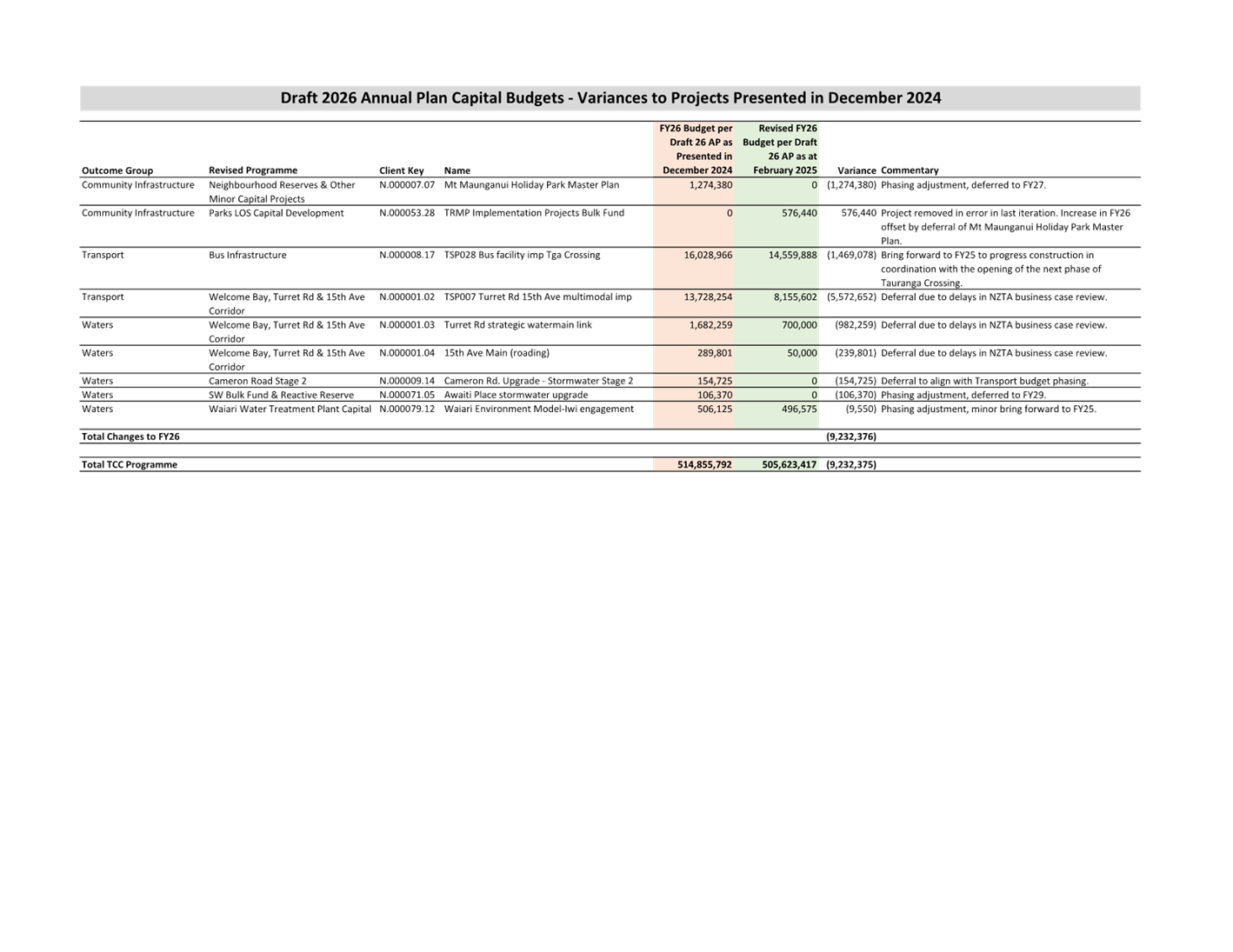
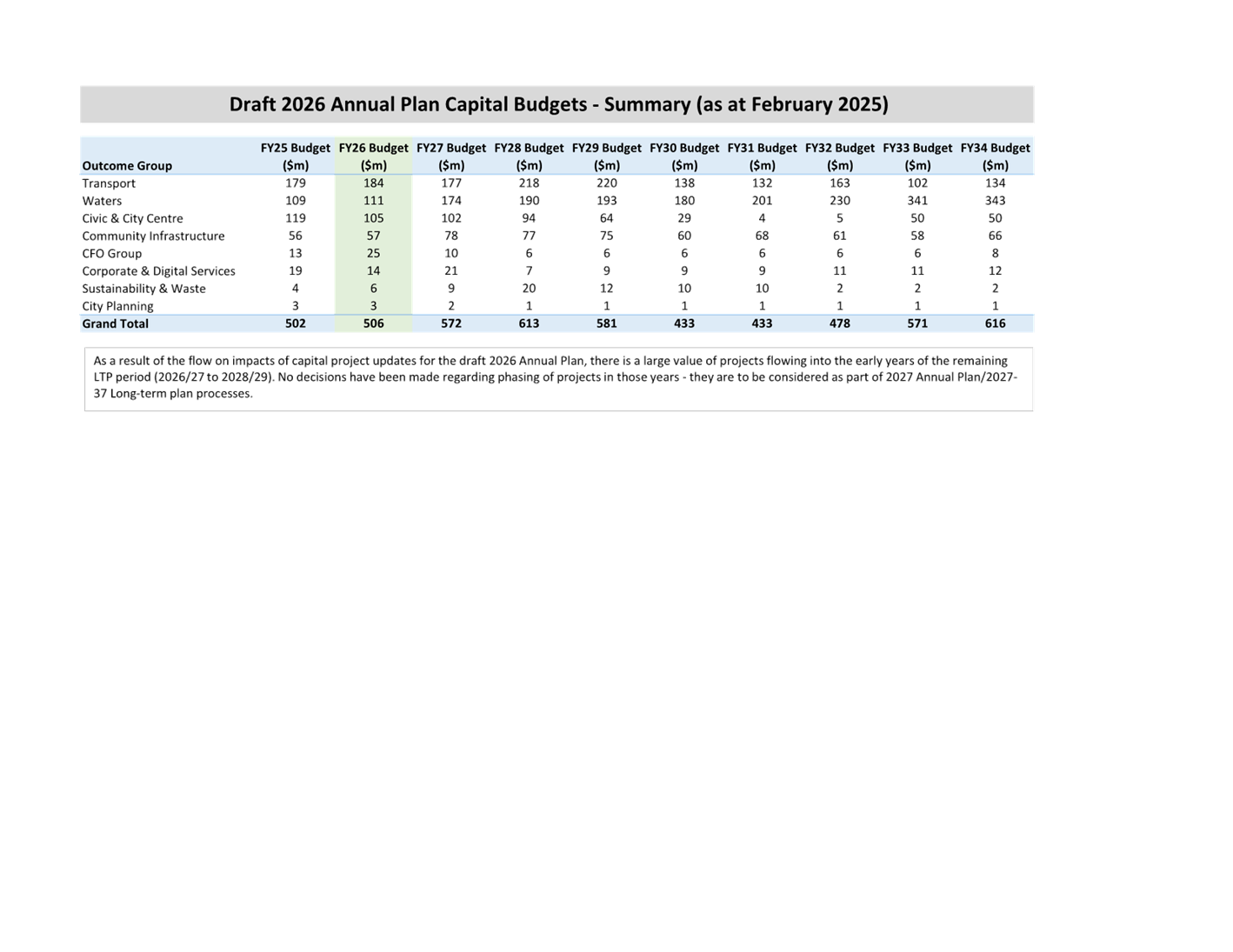
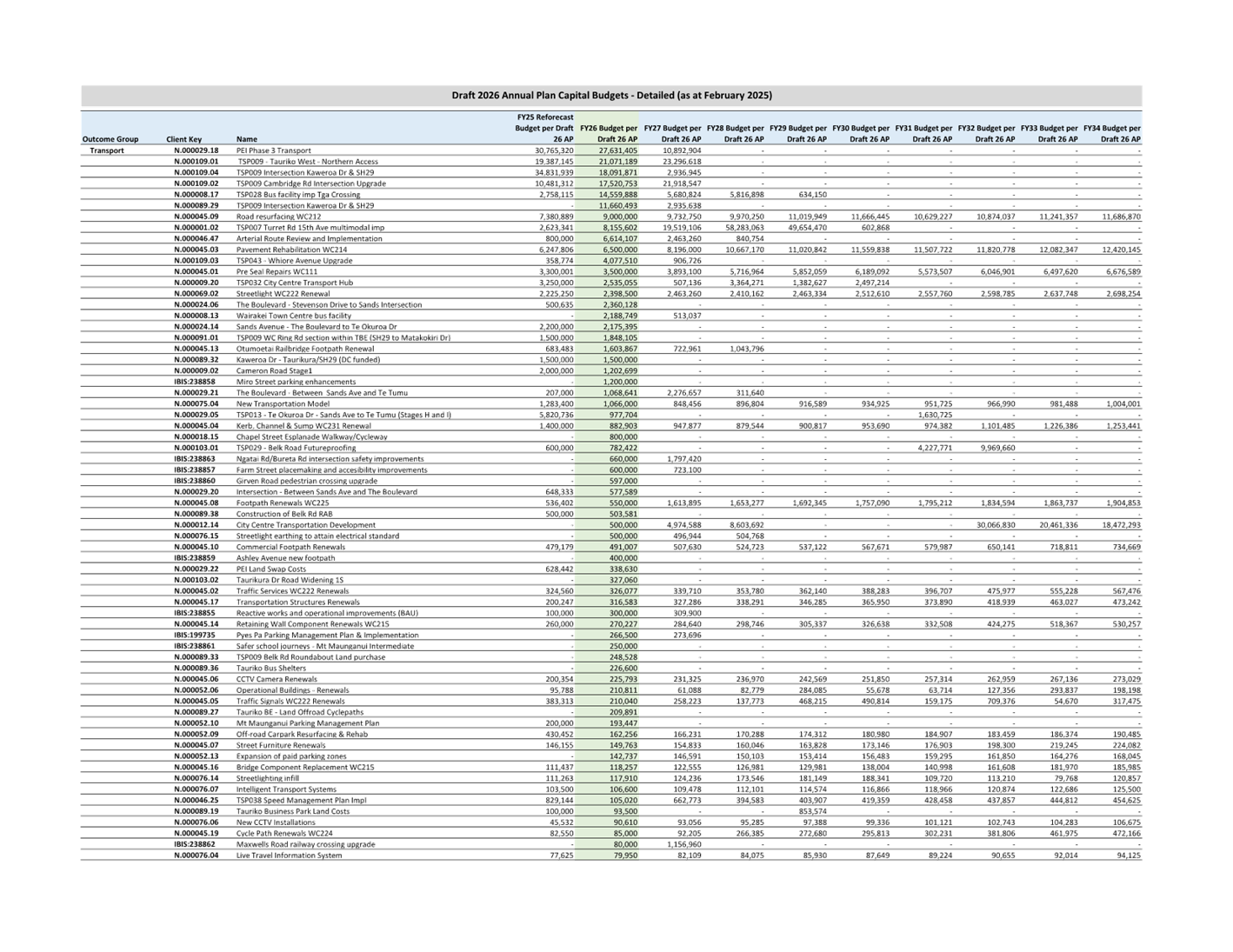
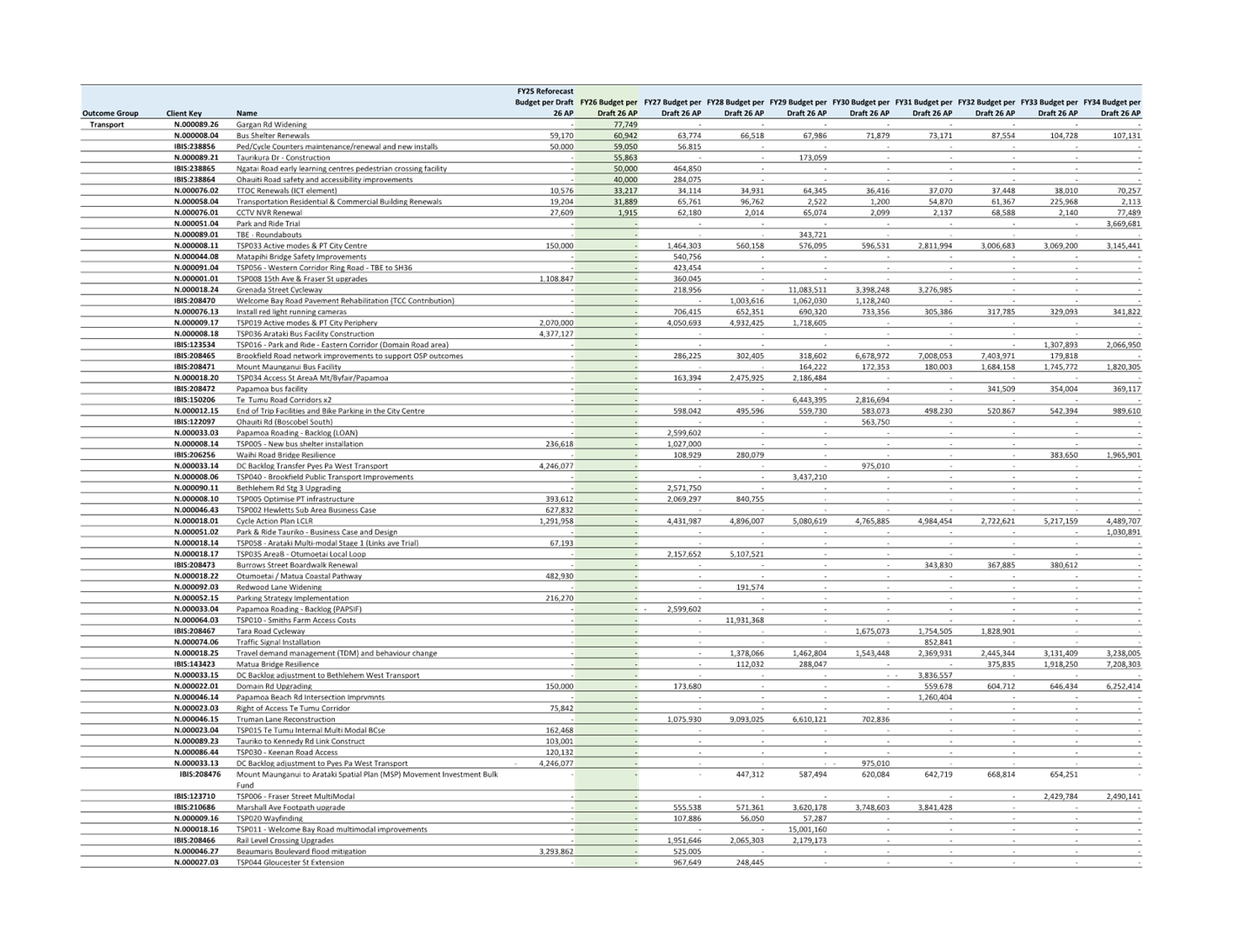

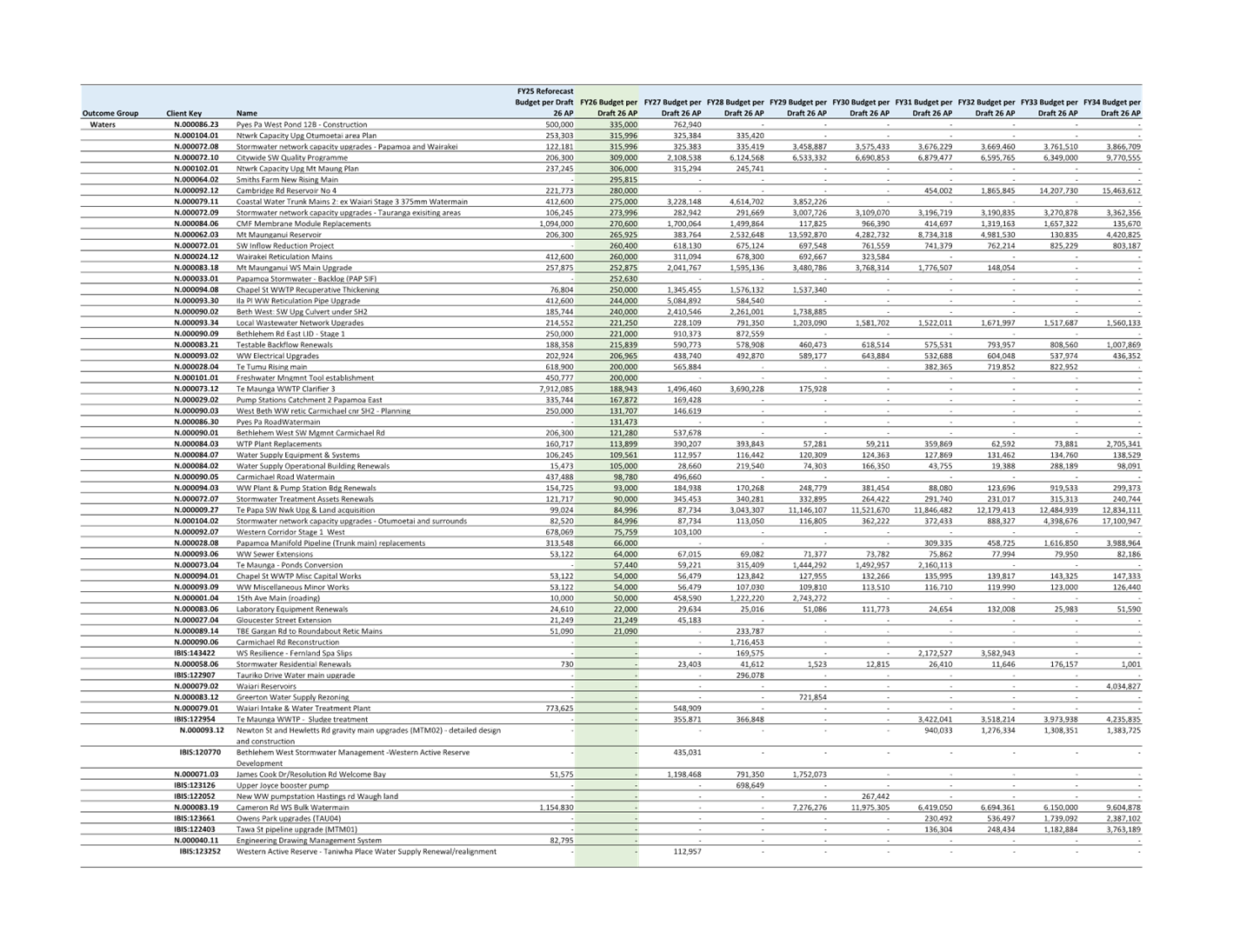
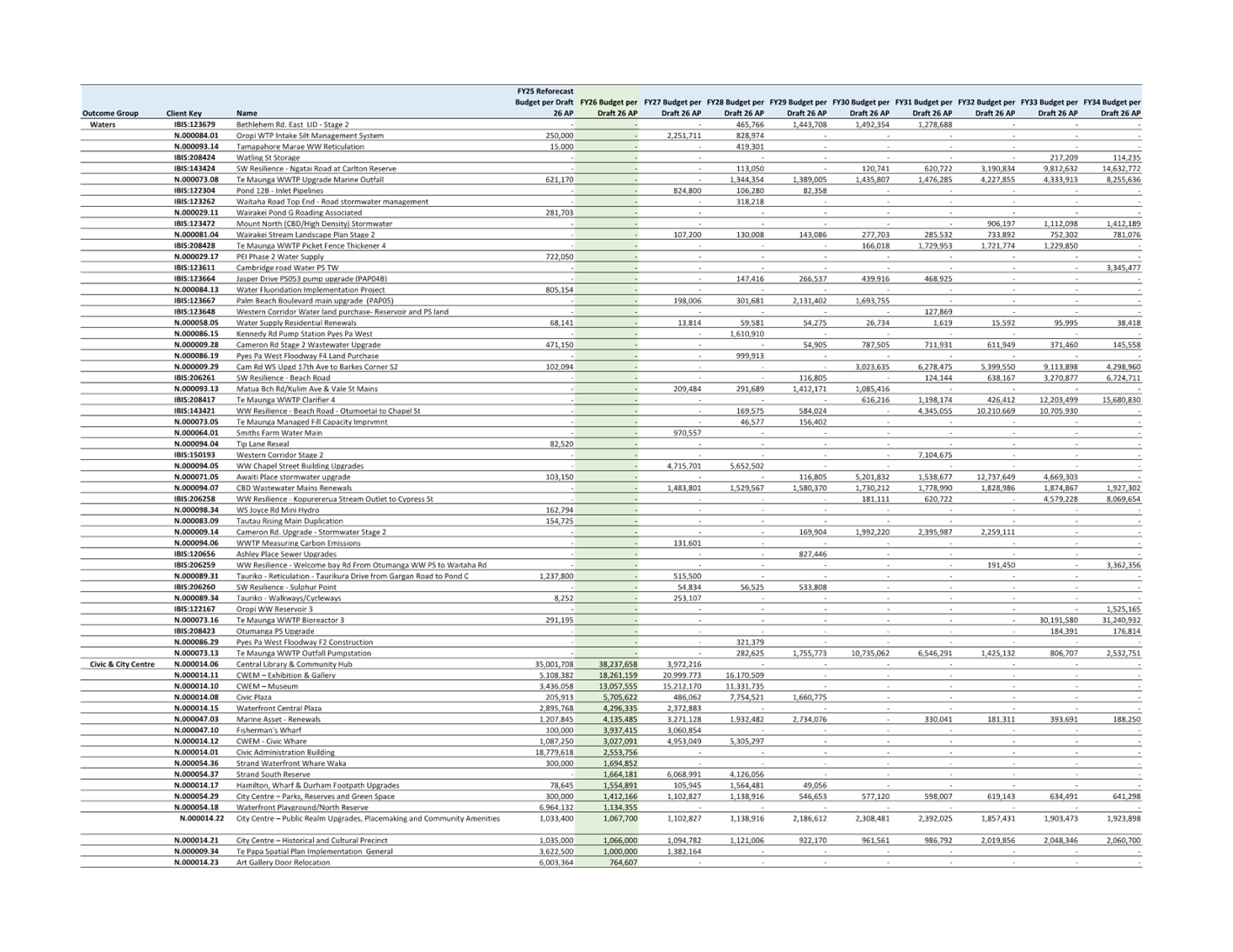


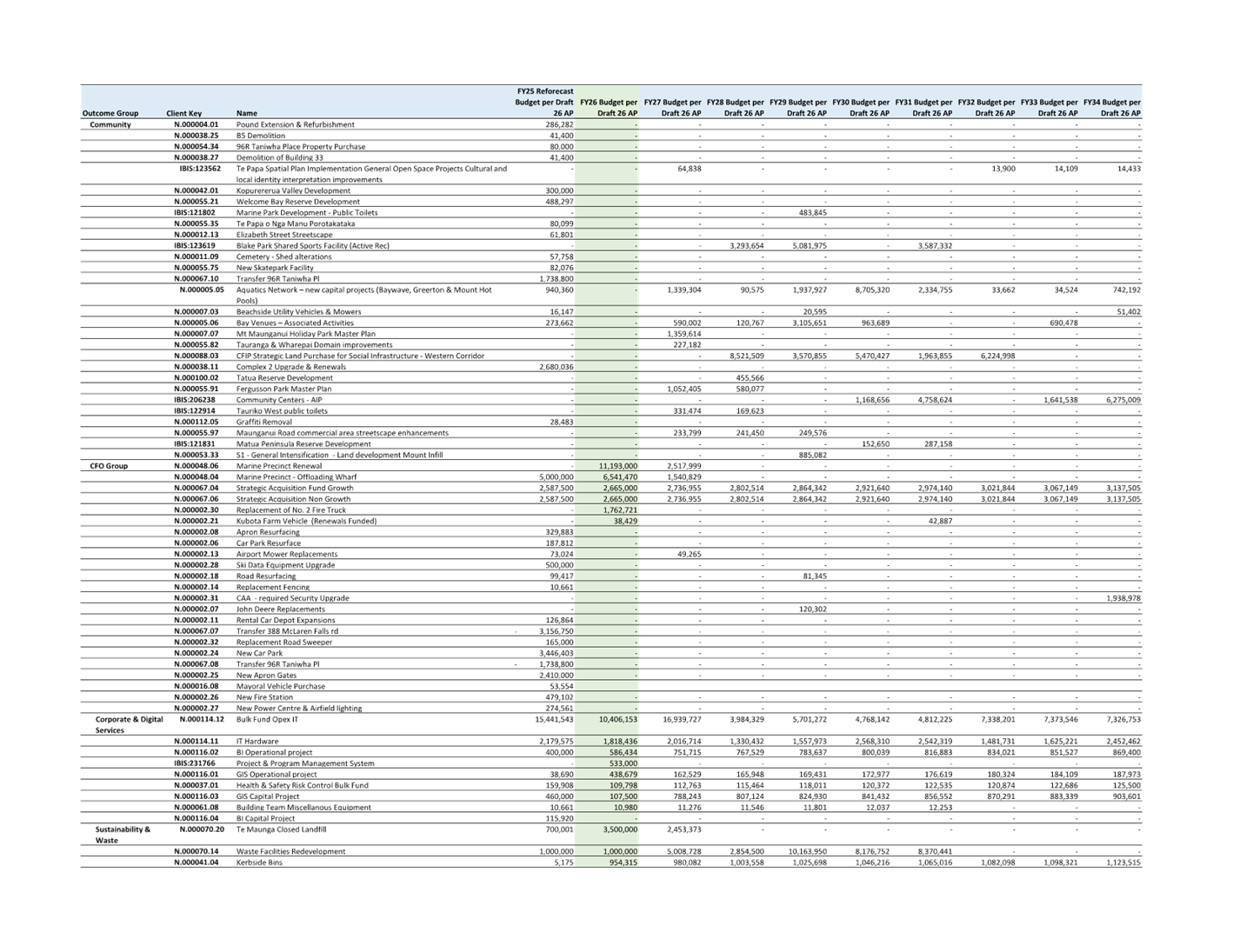

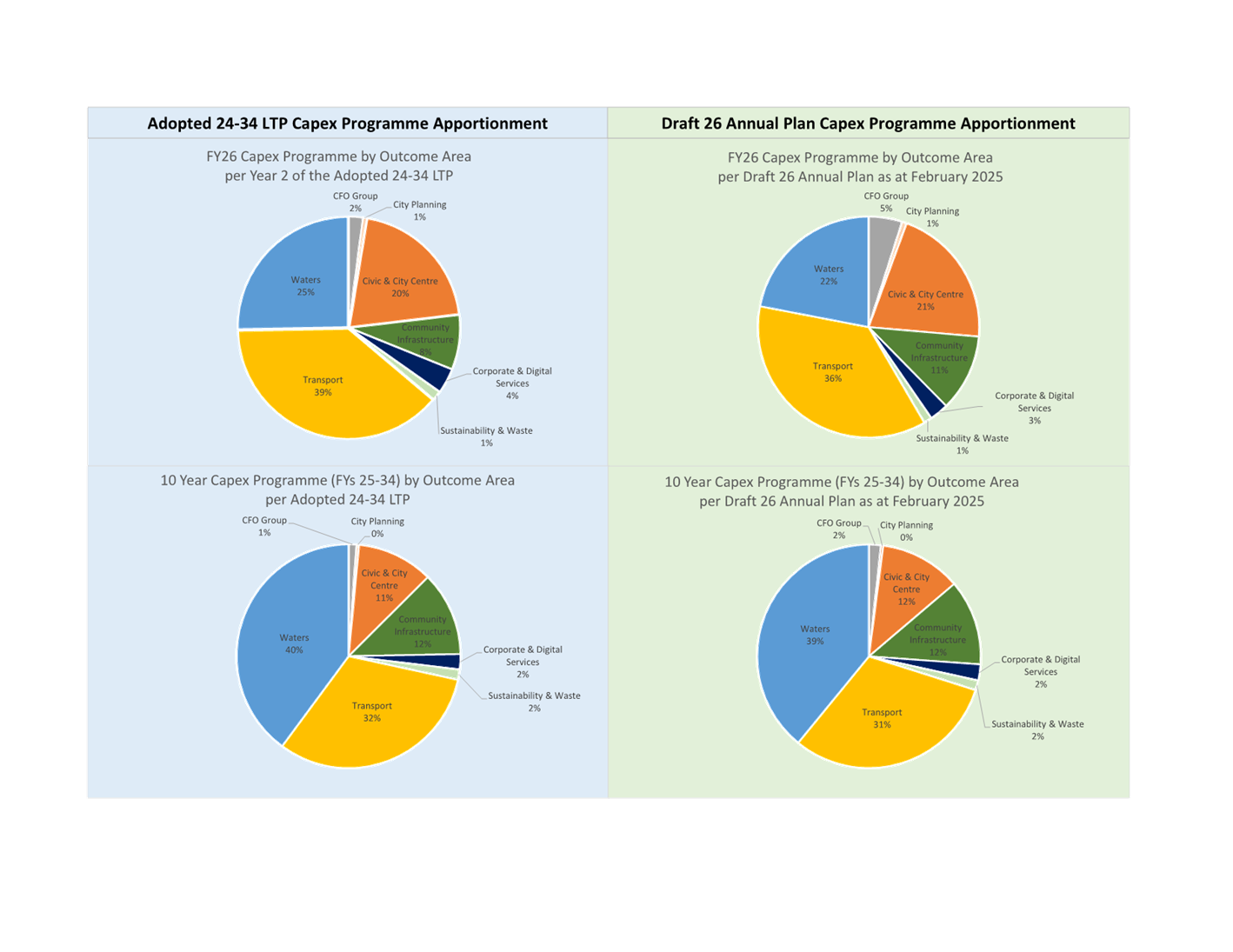
|
Ordinary
Council meeting Agenda
|
24
February 2025
|

|
Ordinary
Council meeting Agenda
|
24
February 2025
|
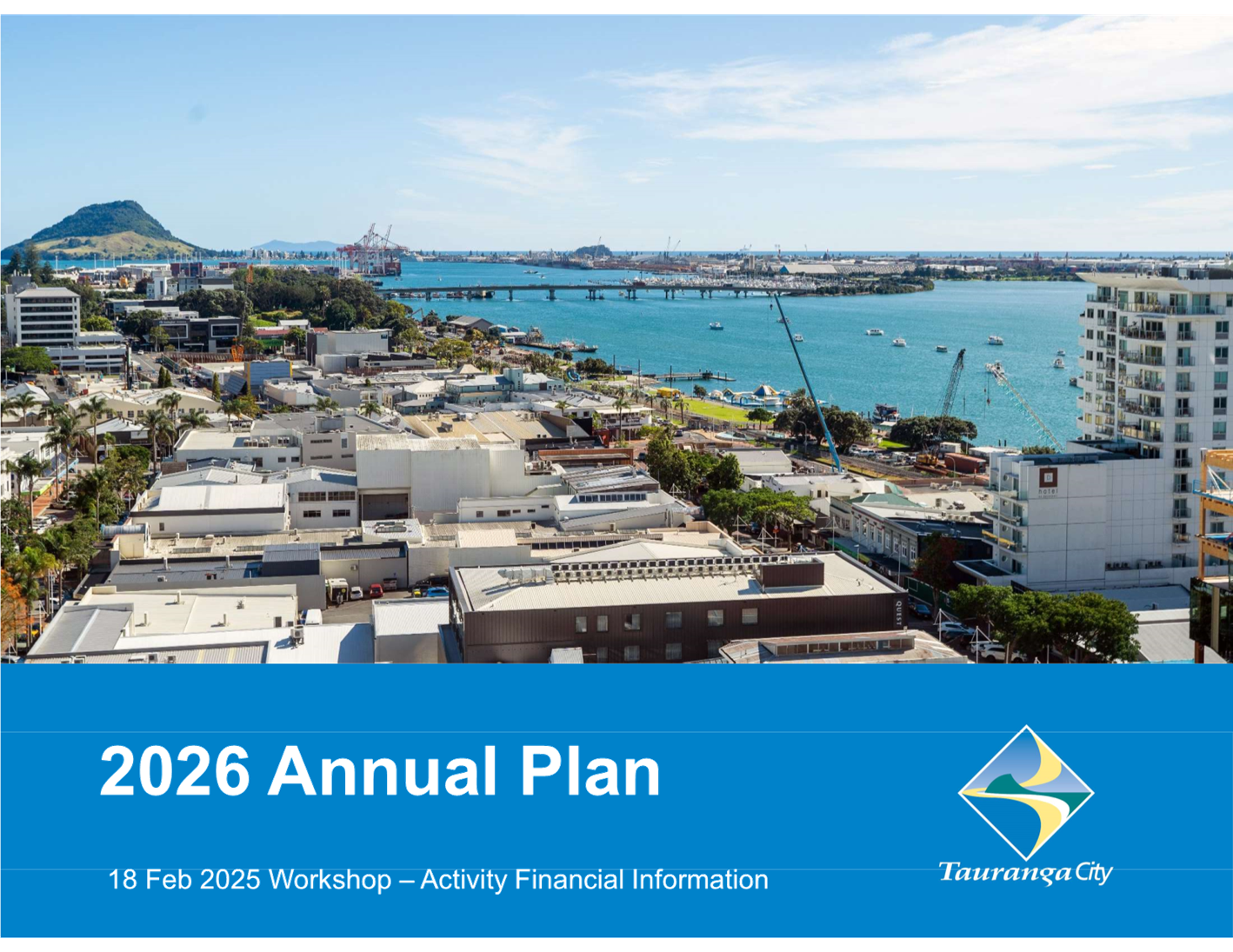

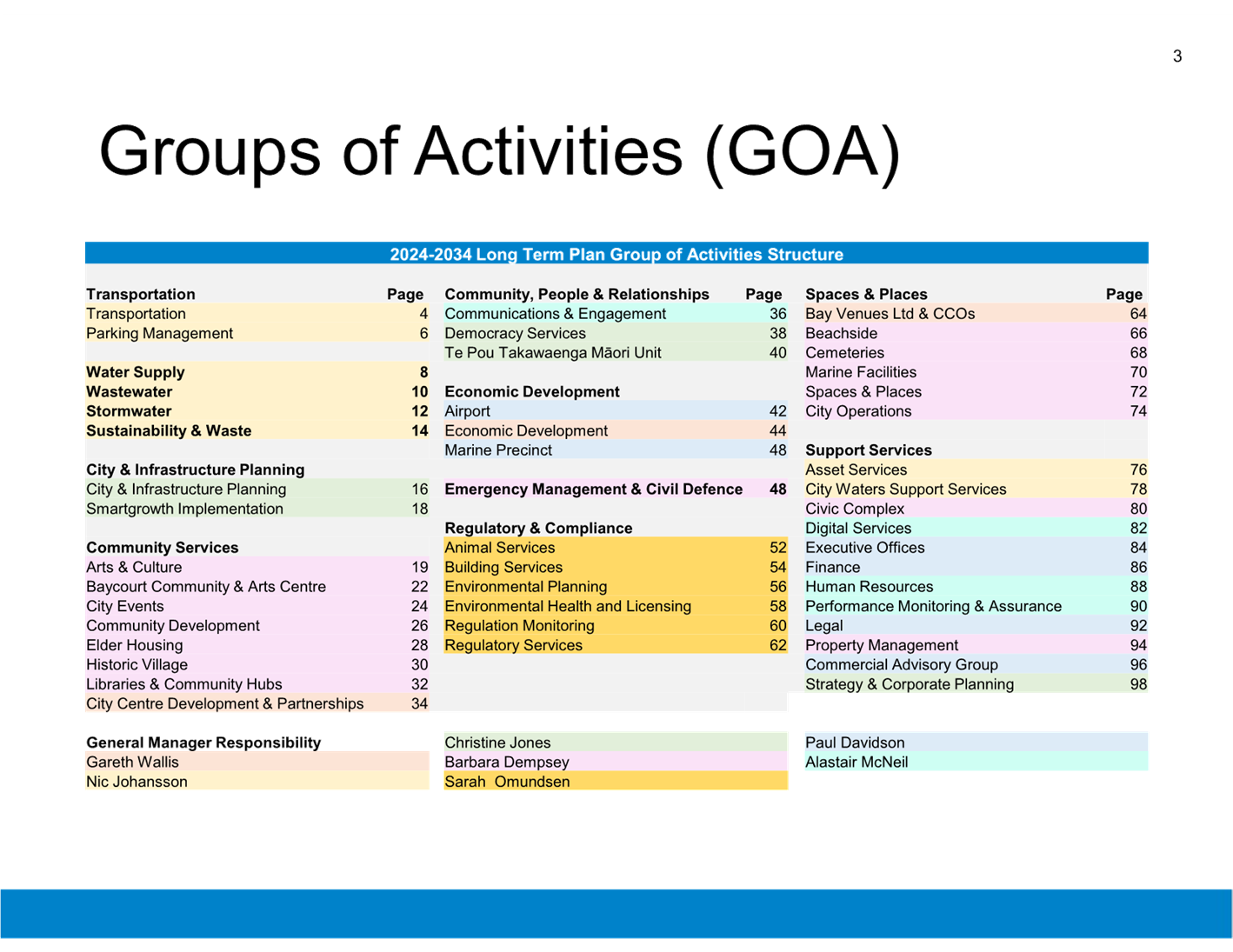
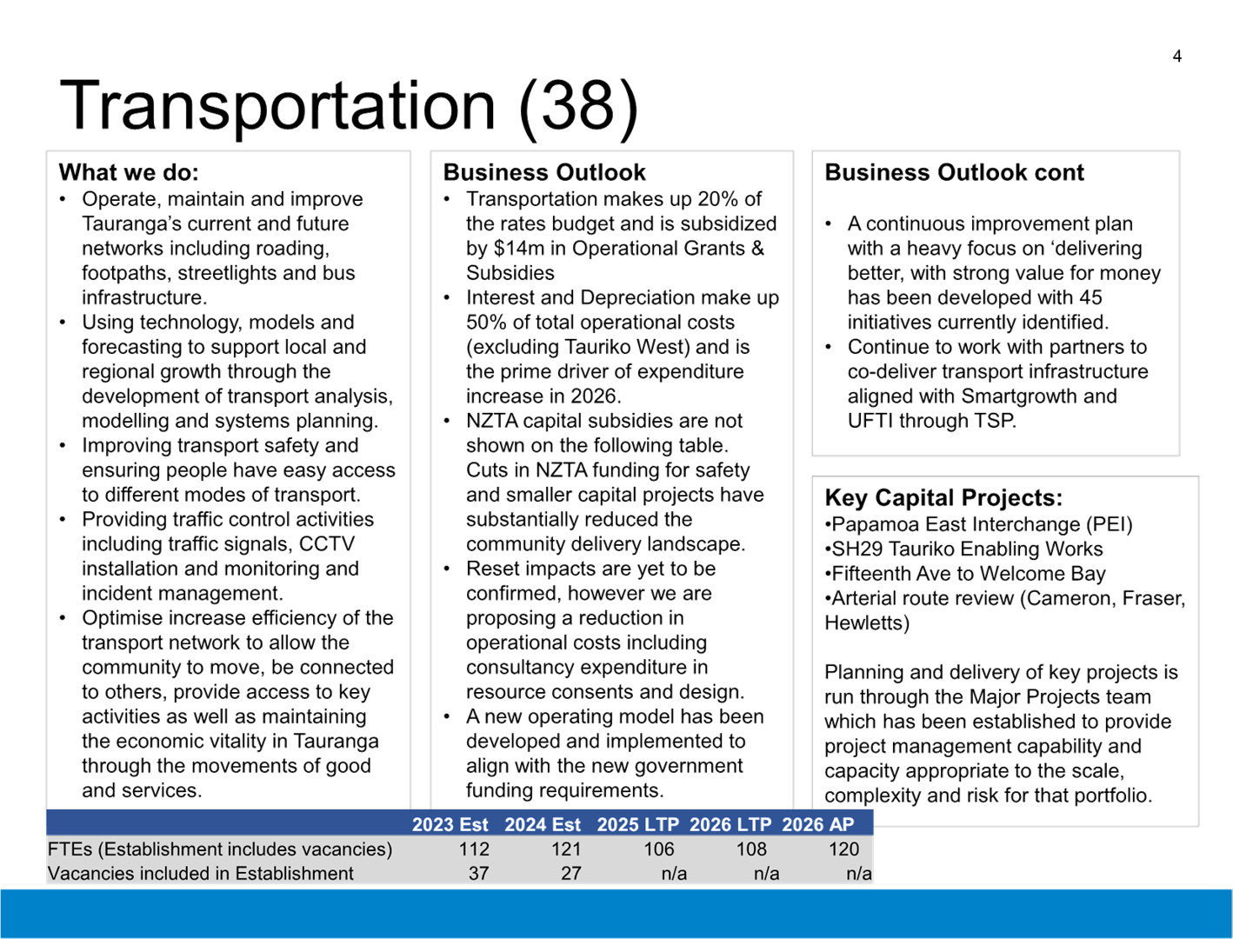
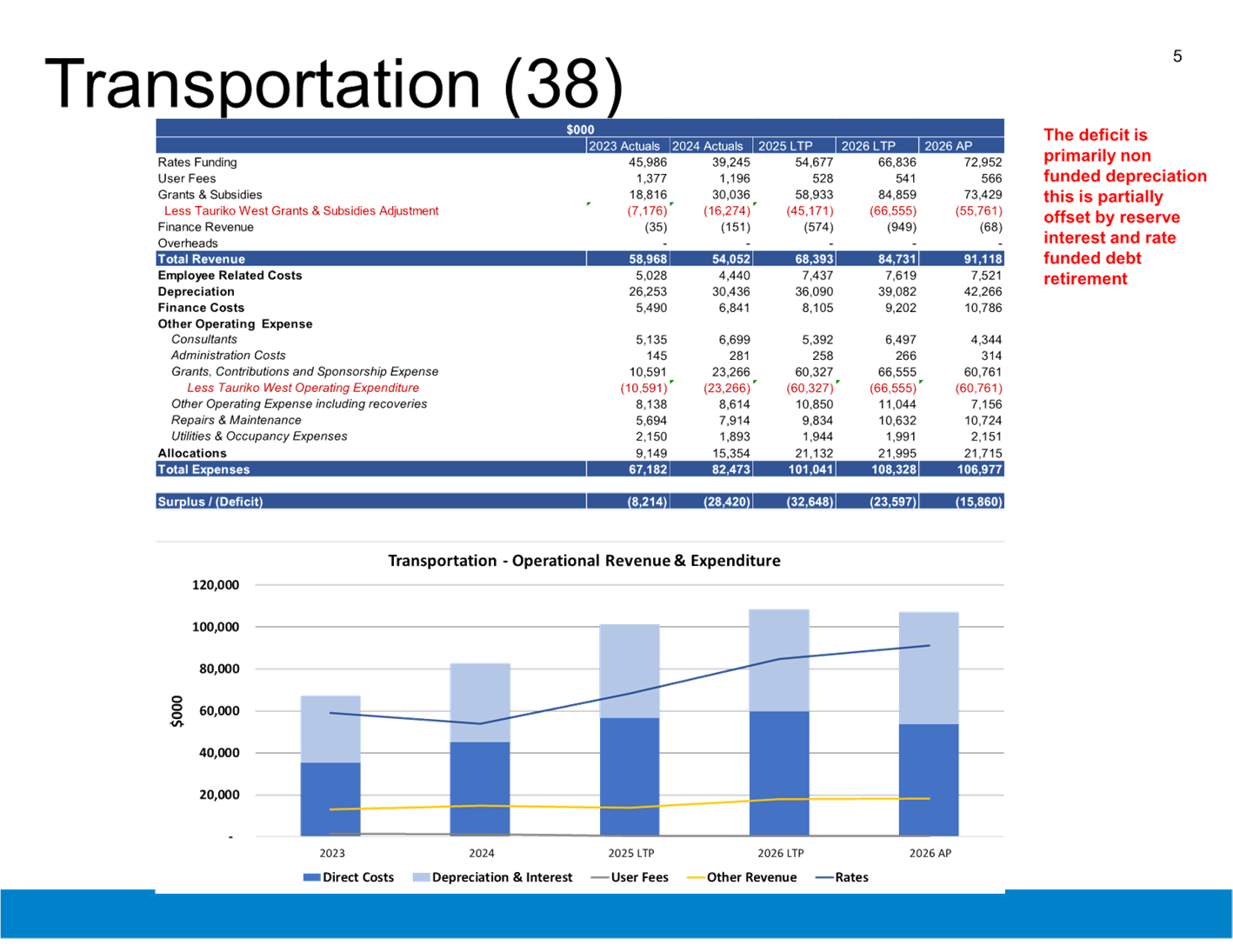
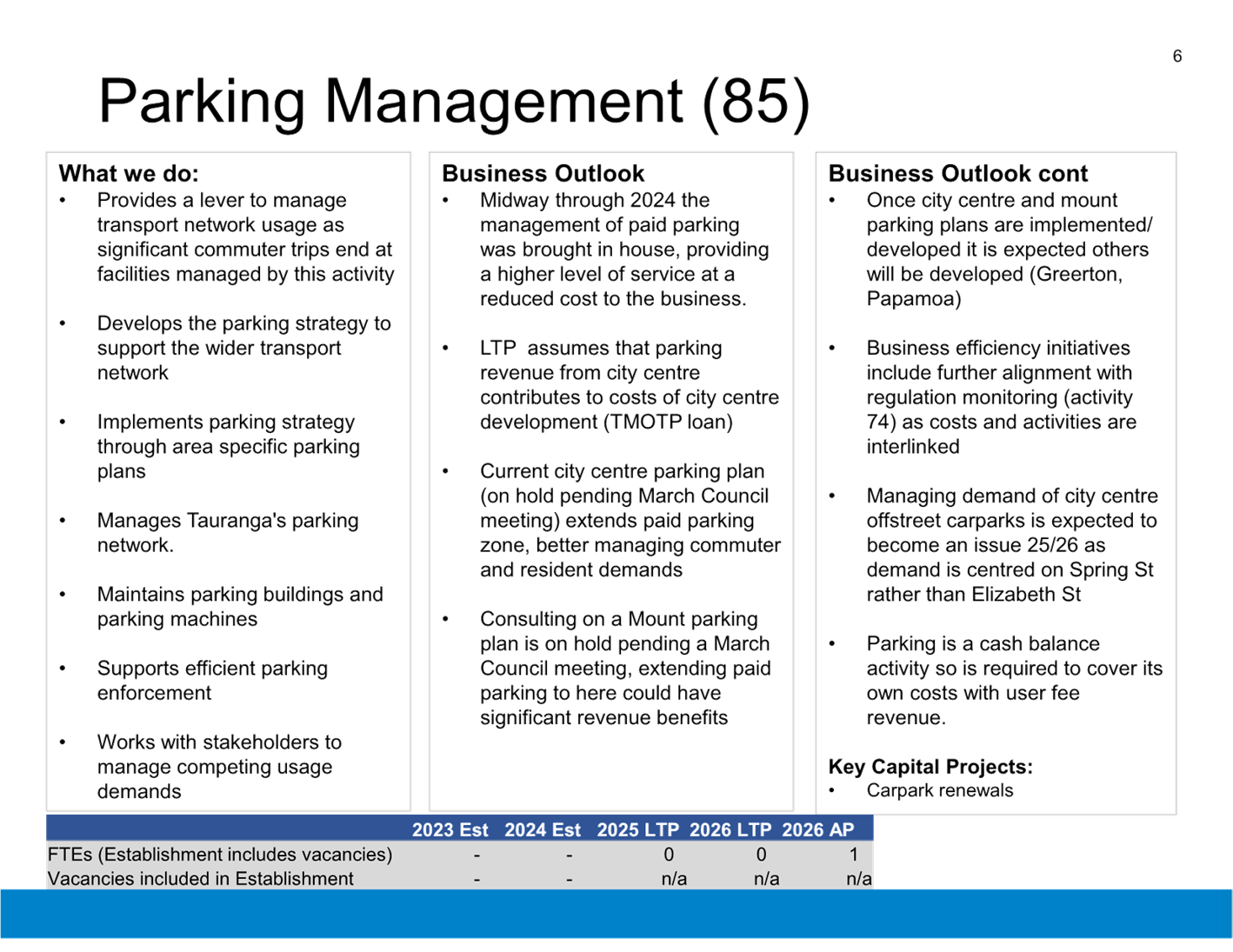
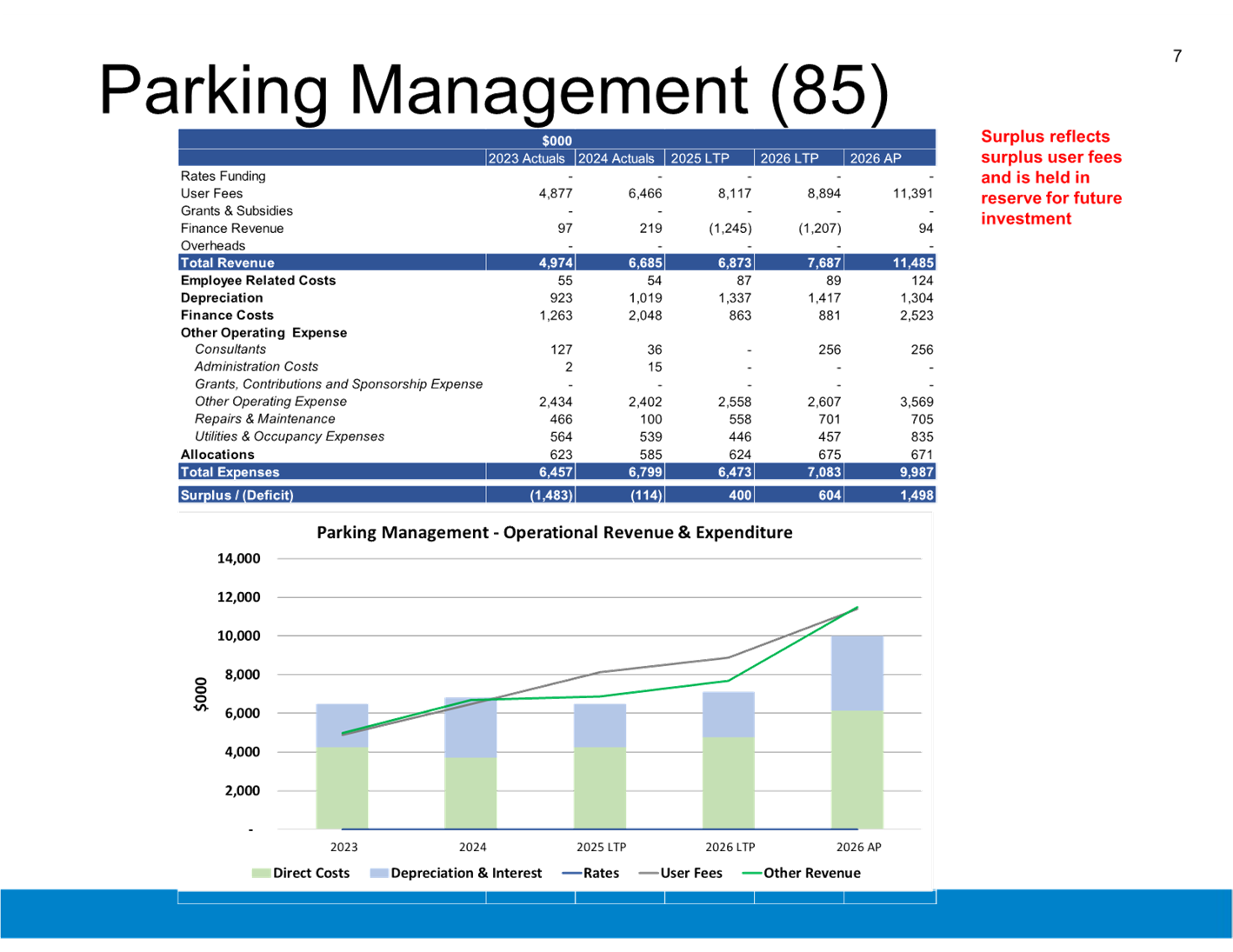
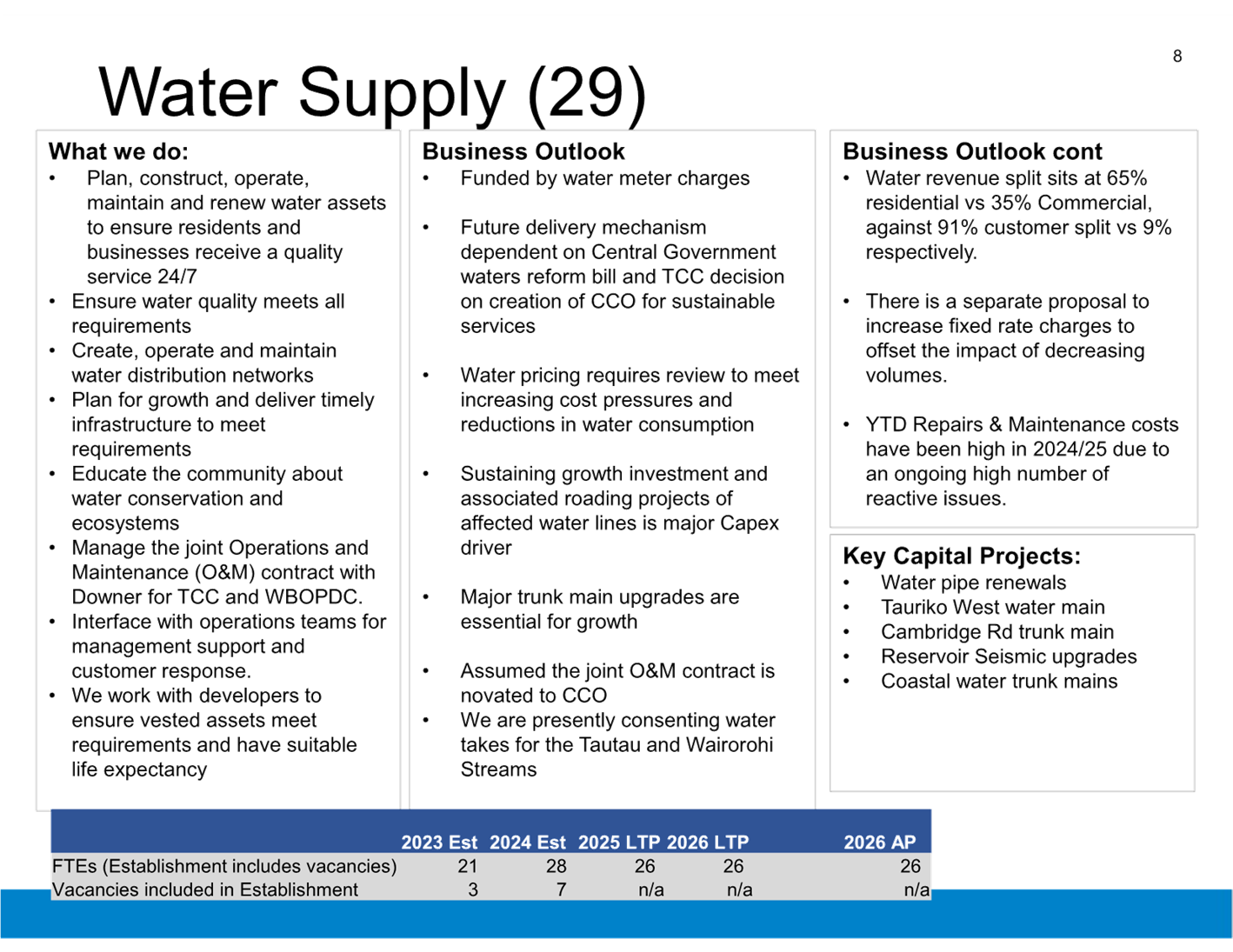
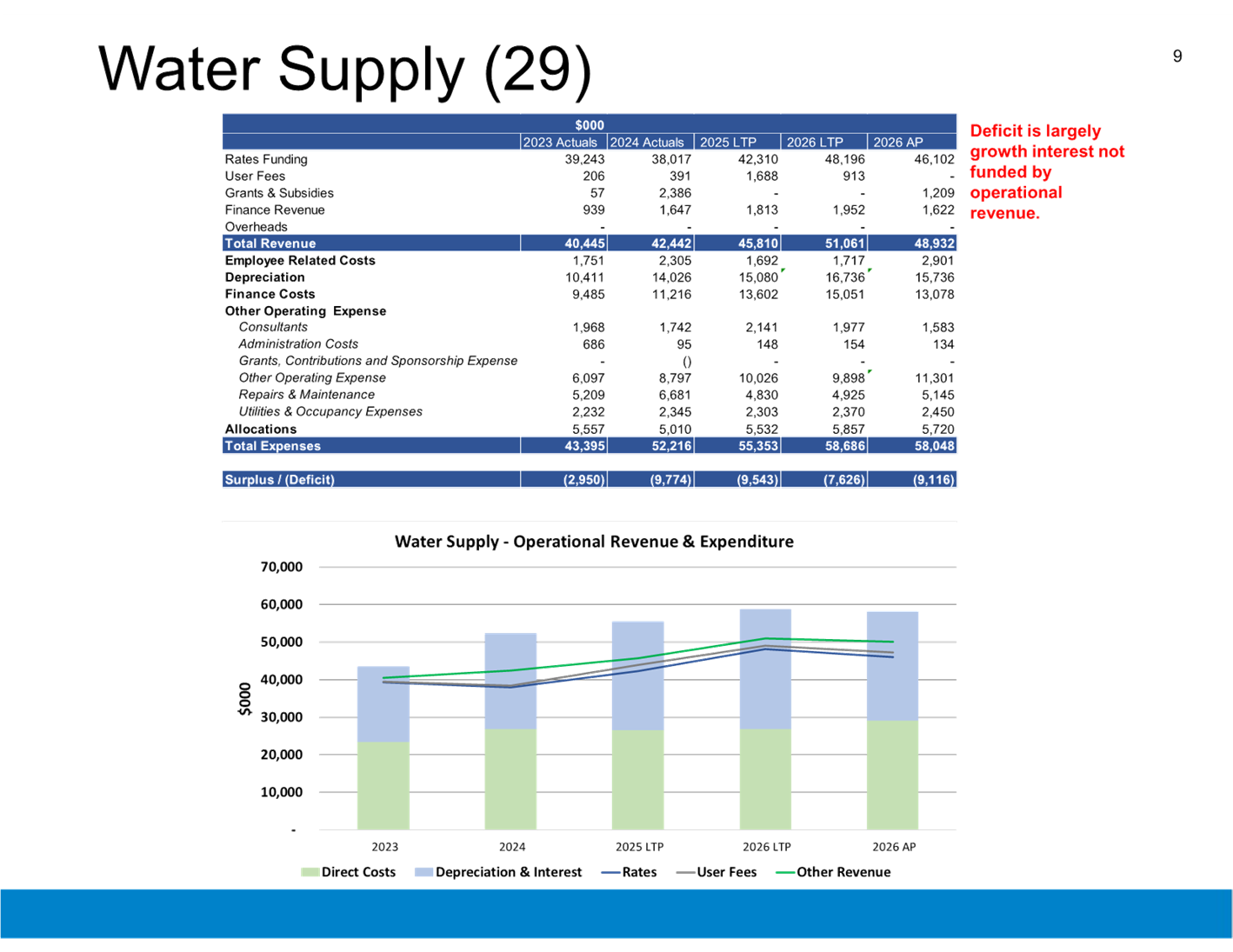
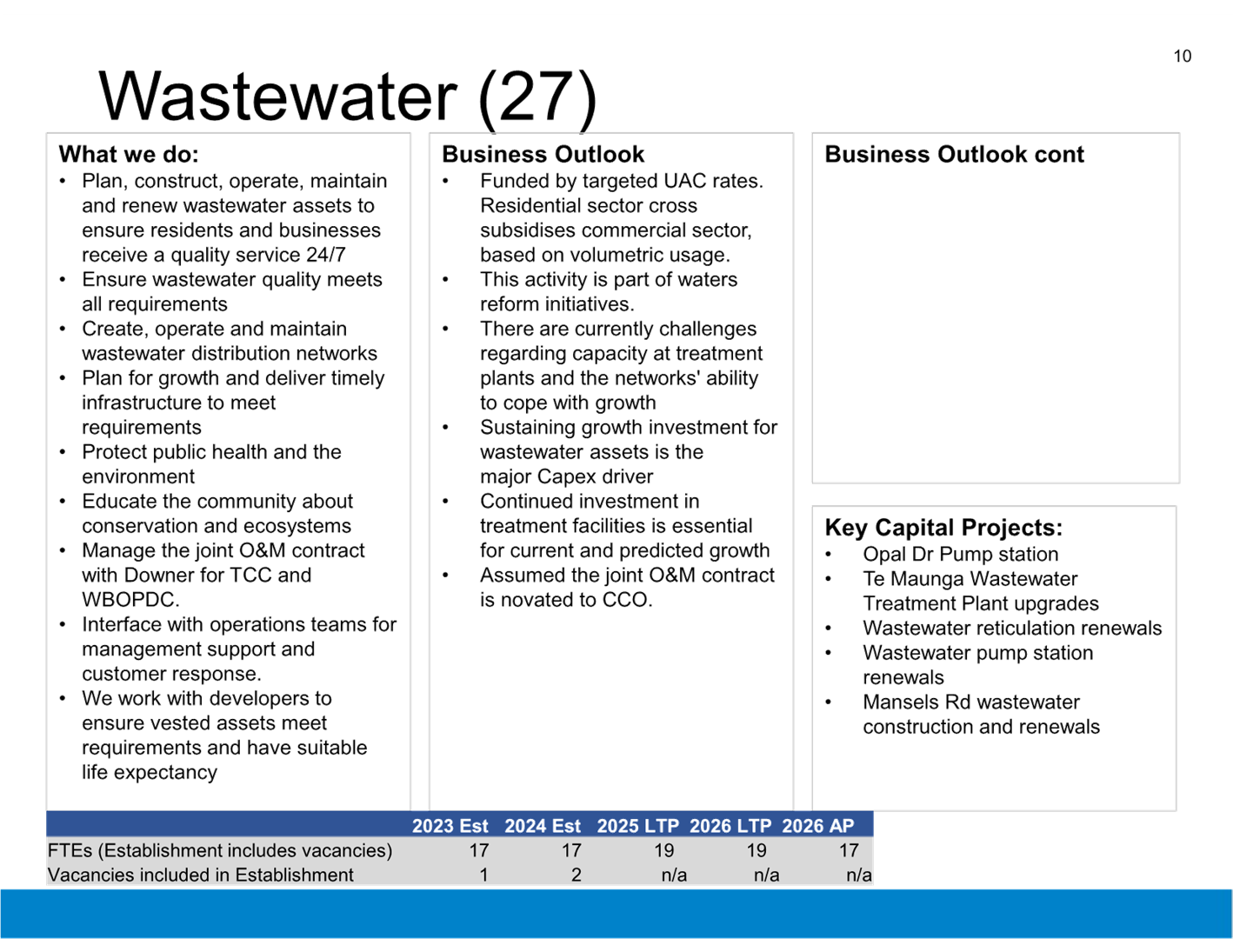
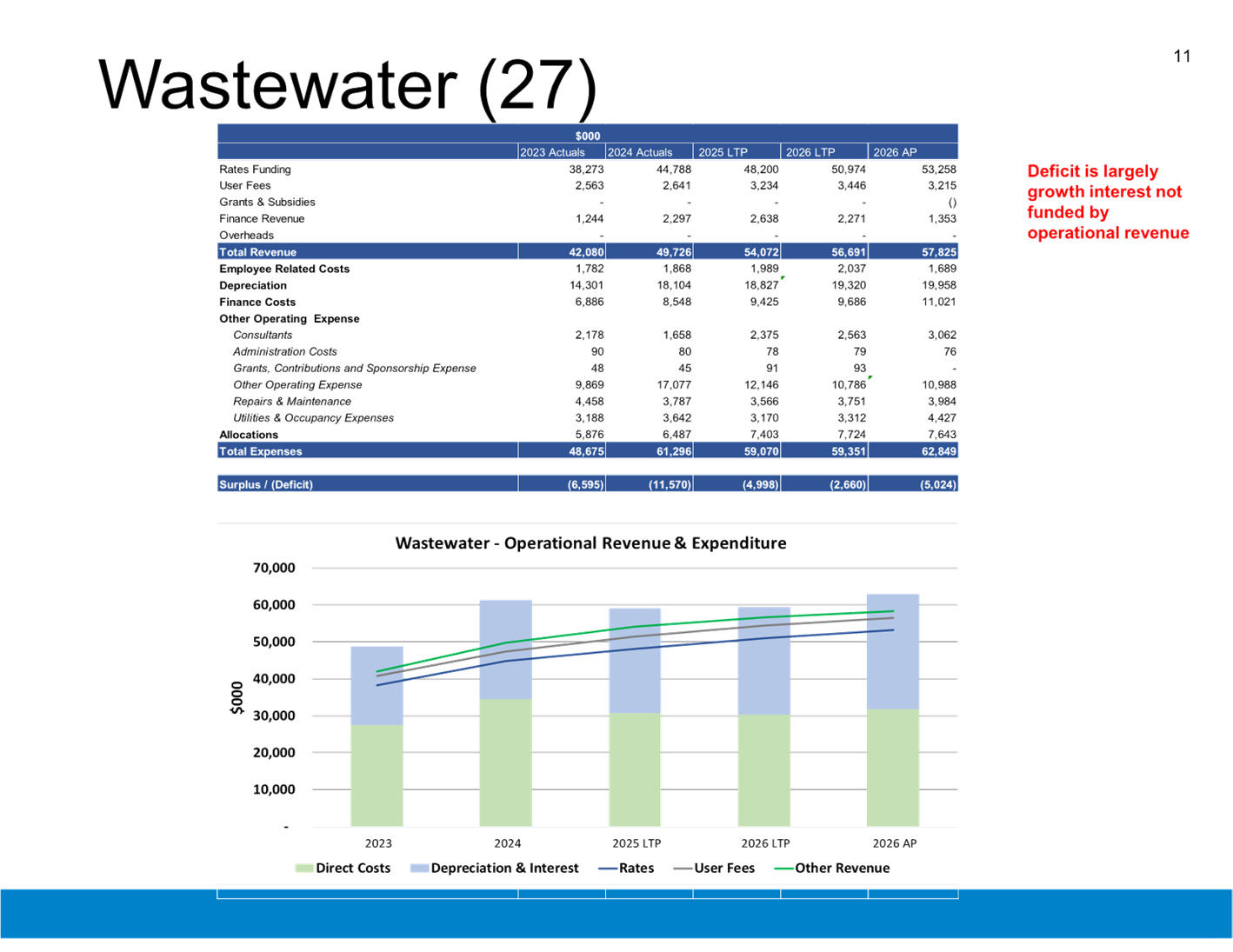
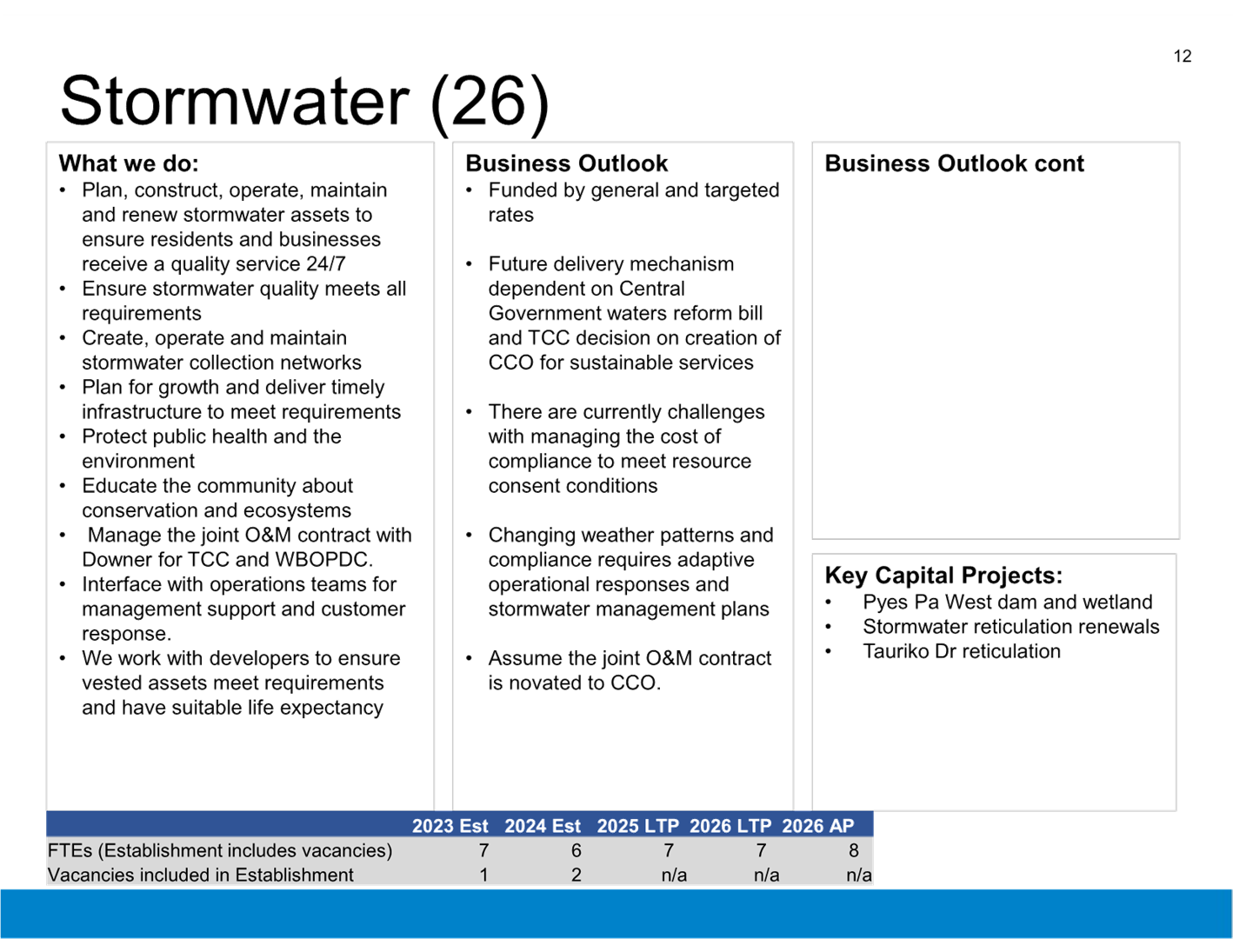
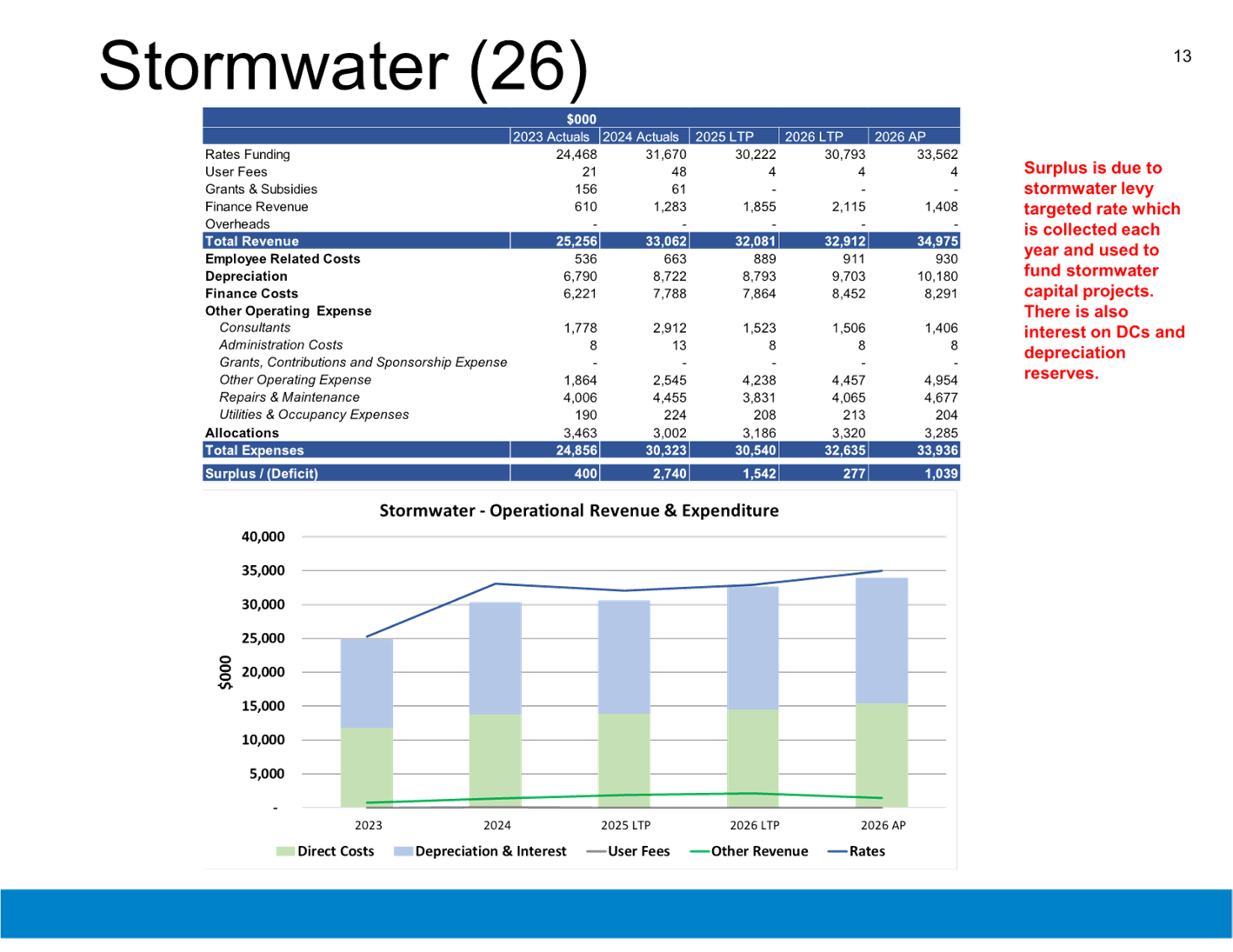
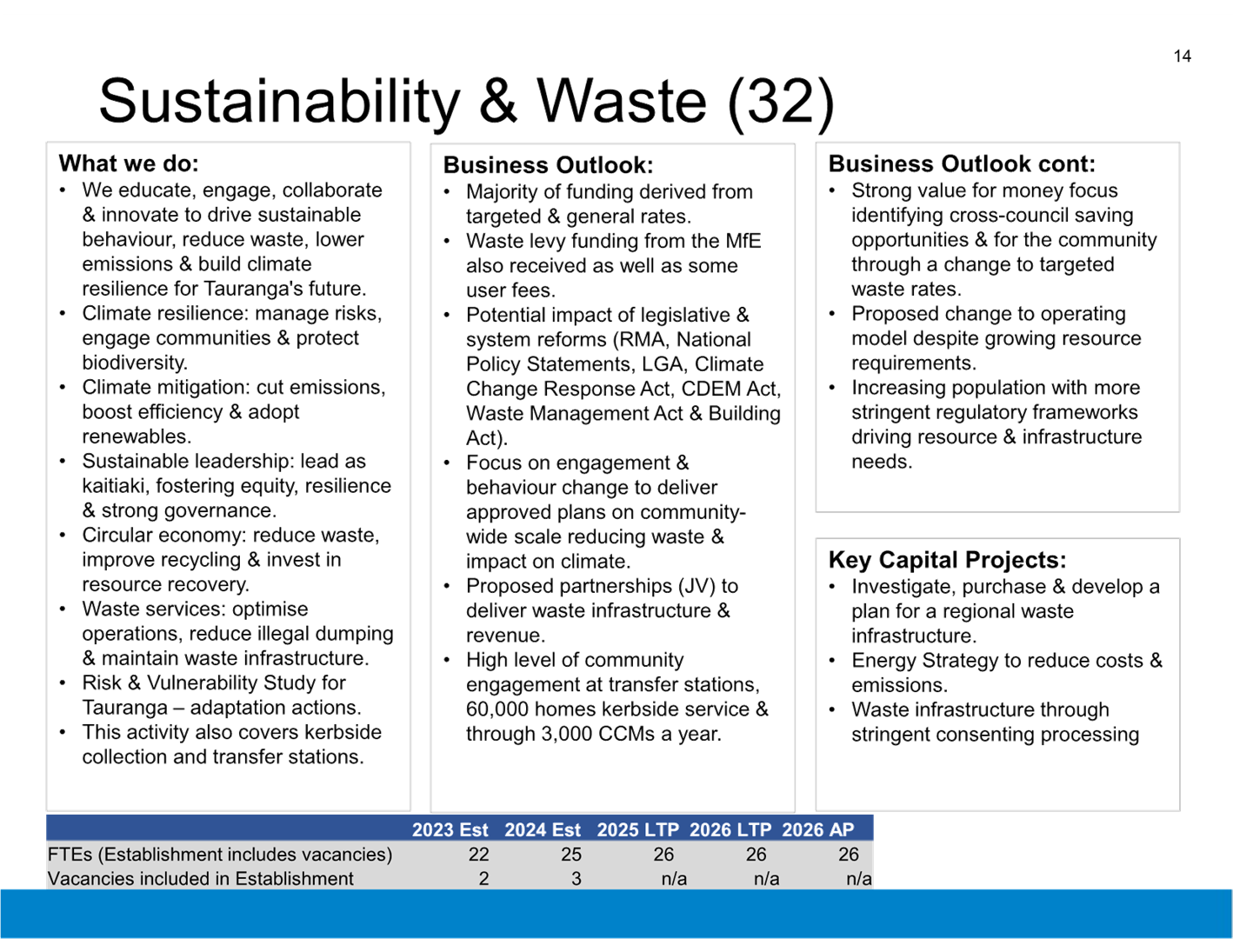
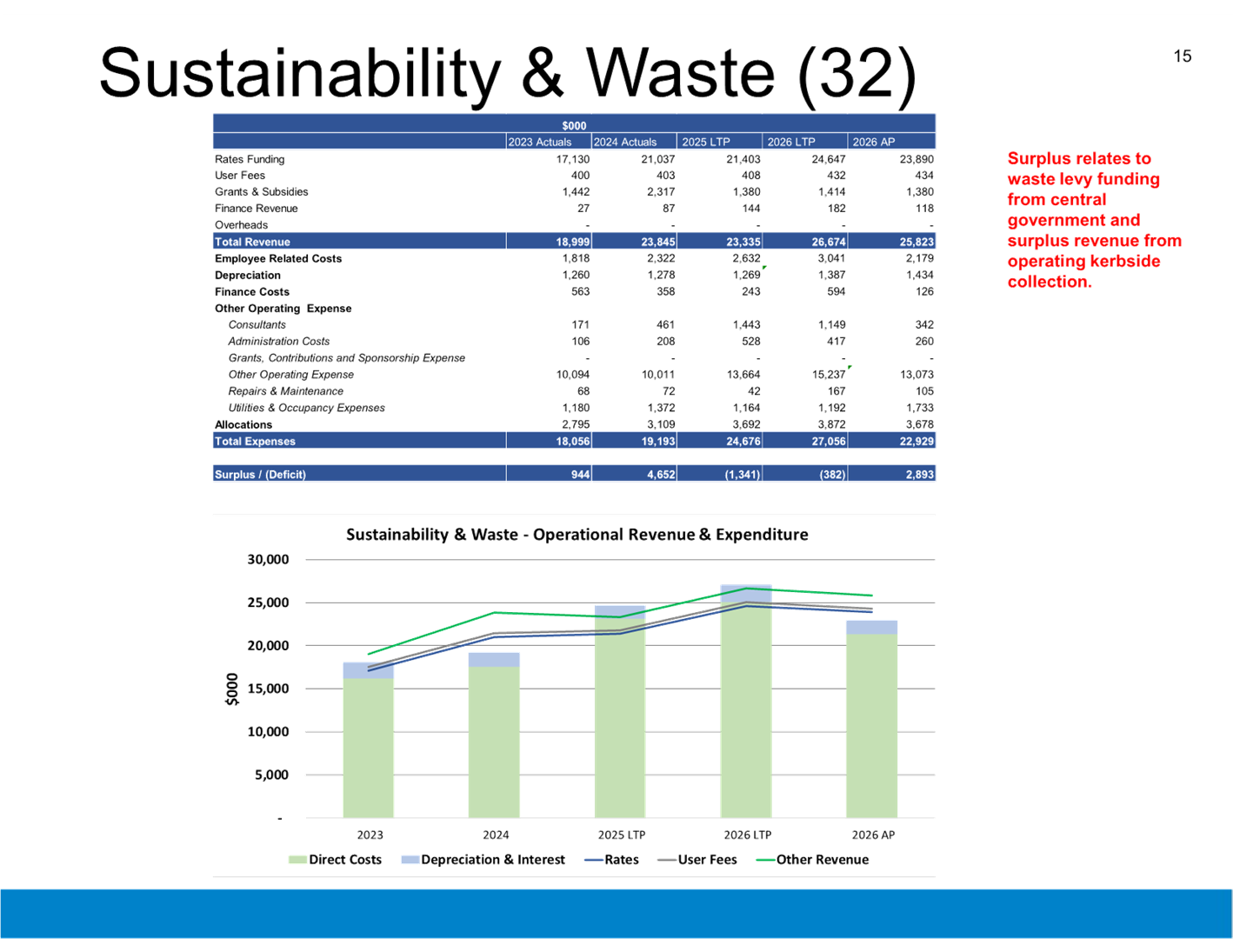
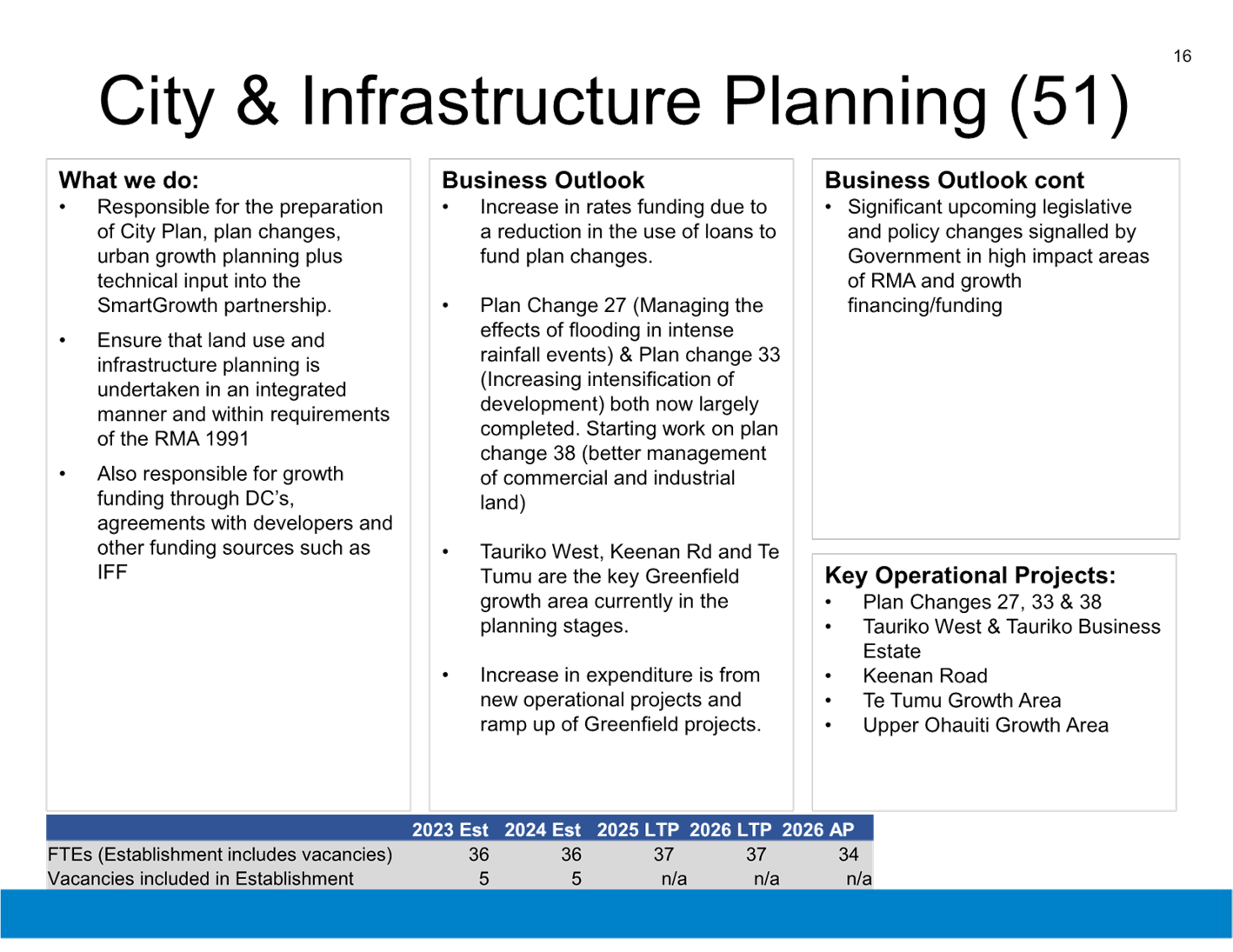

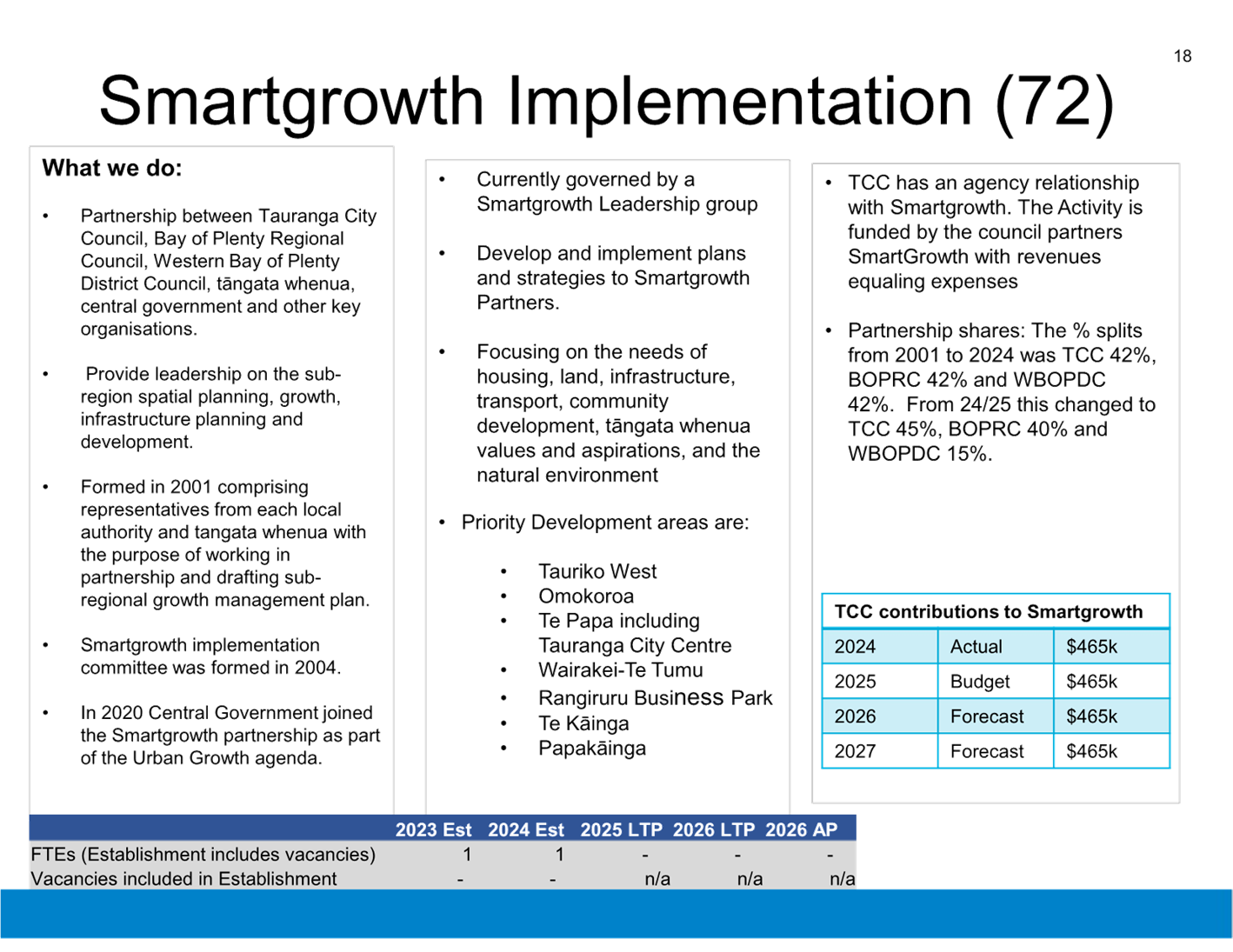
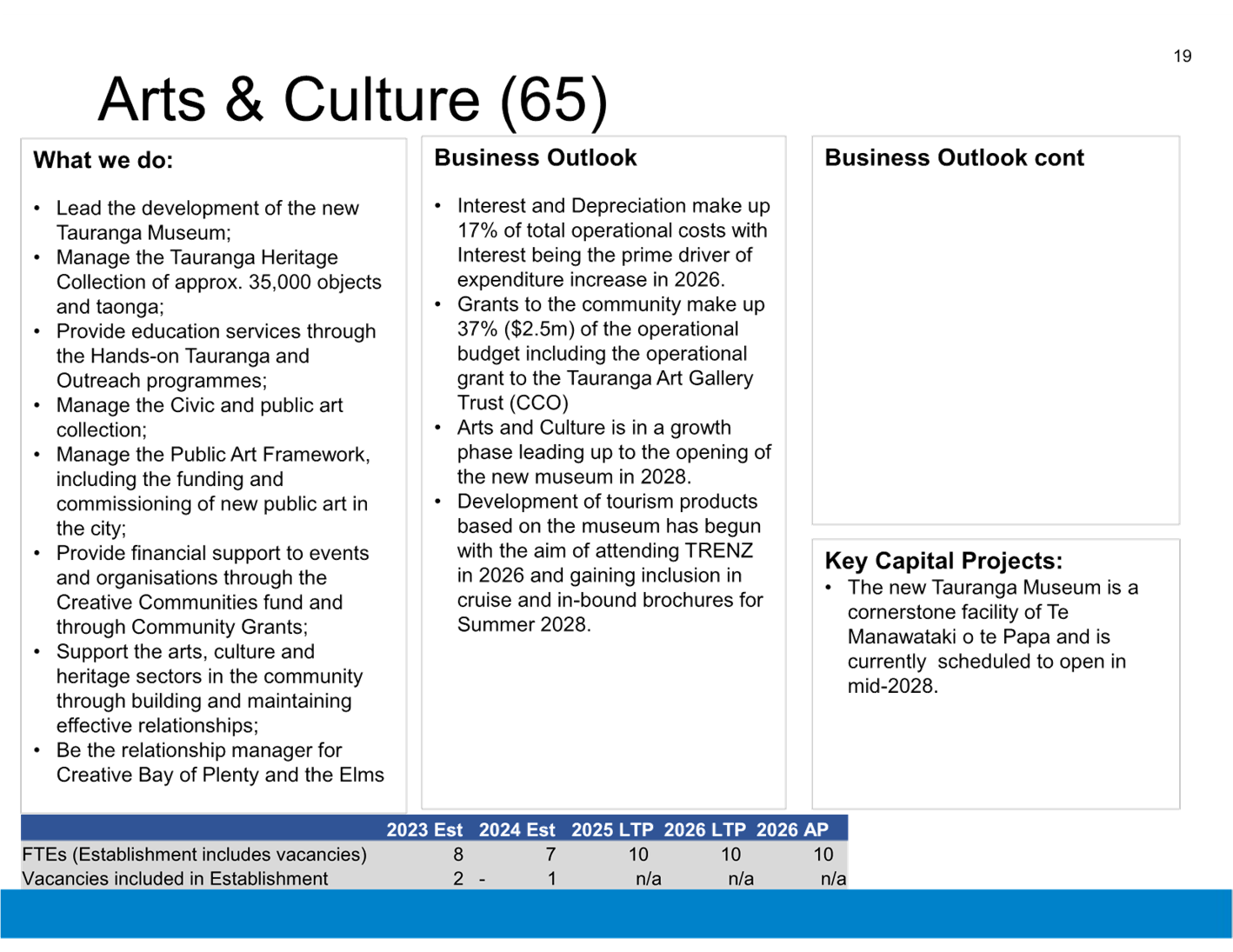
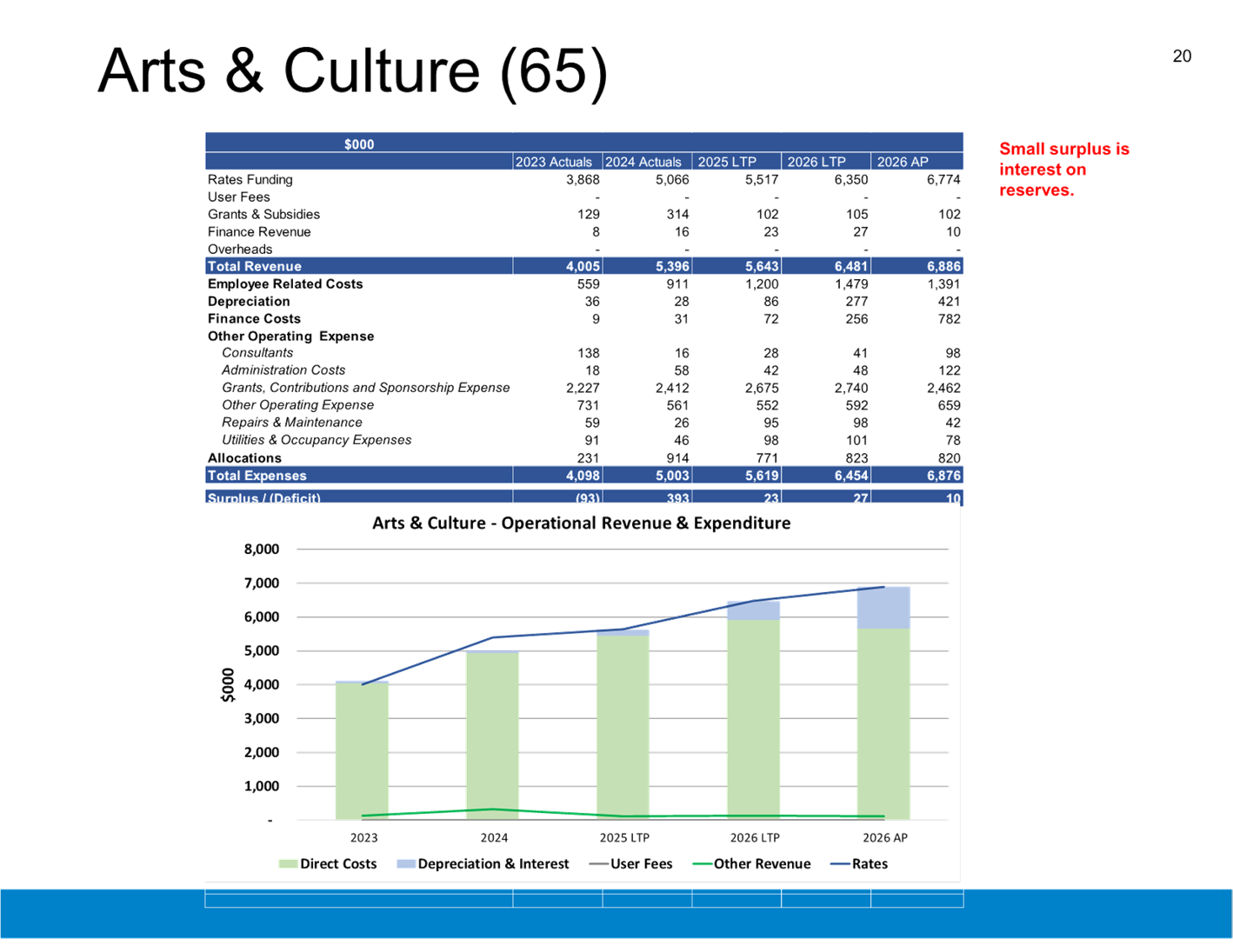

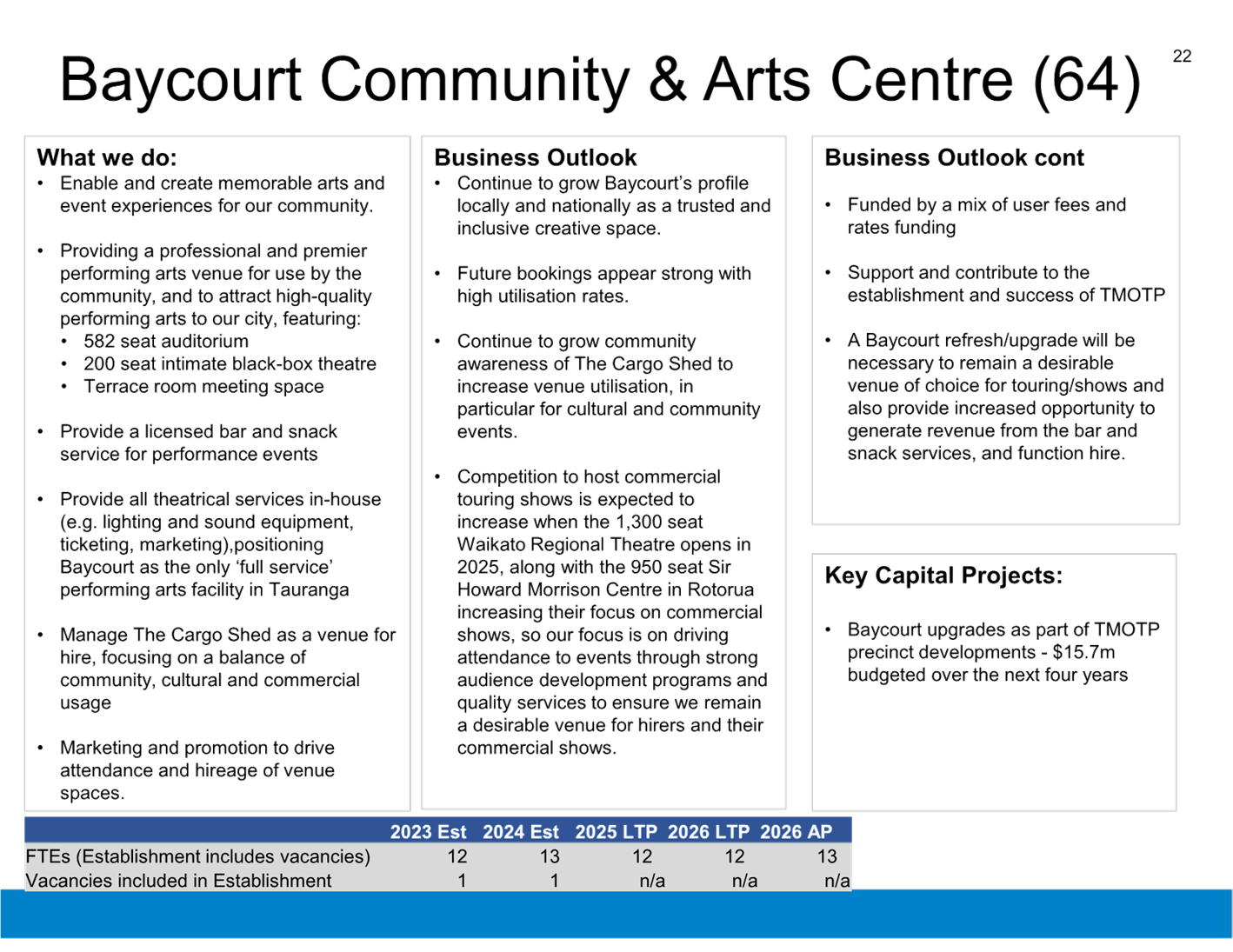
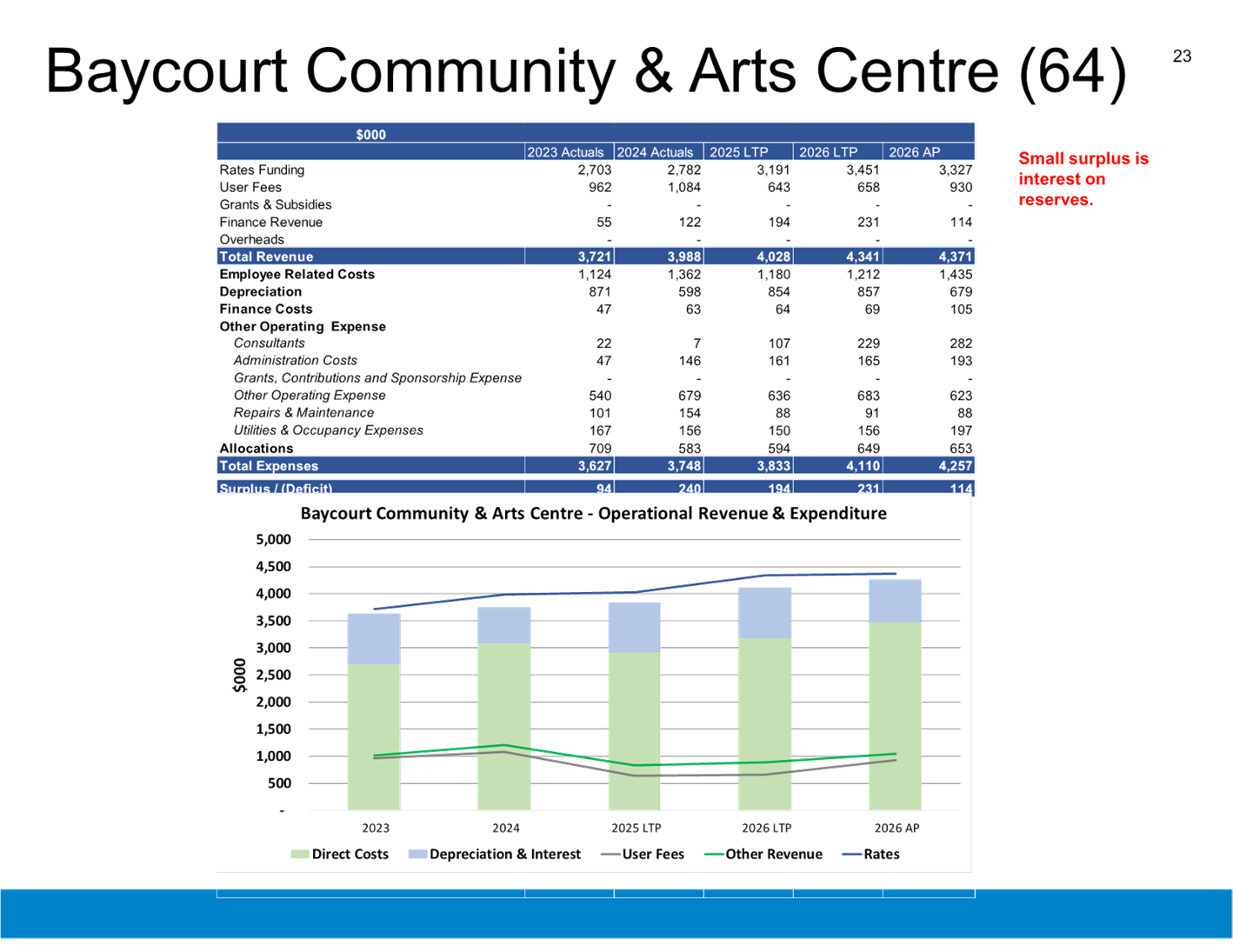
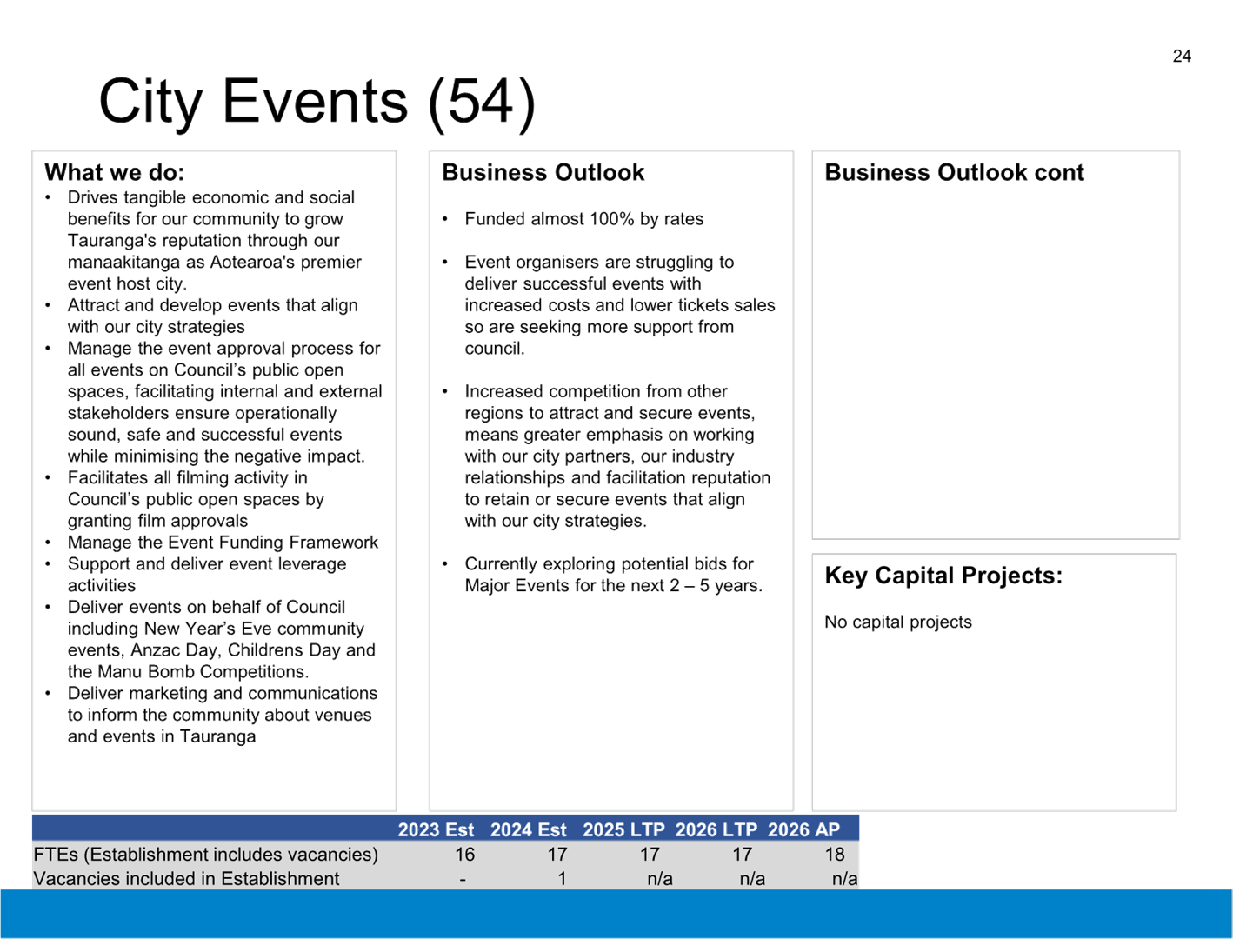
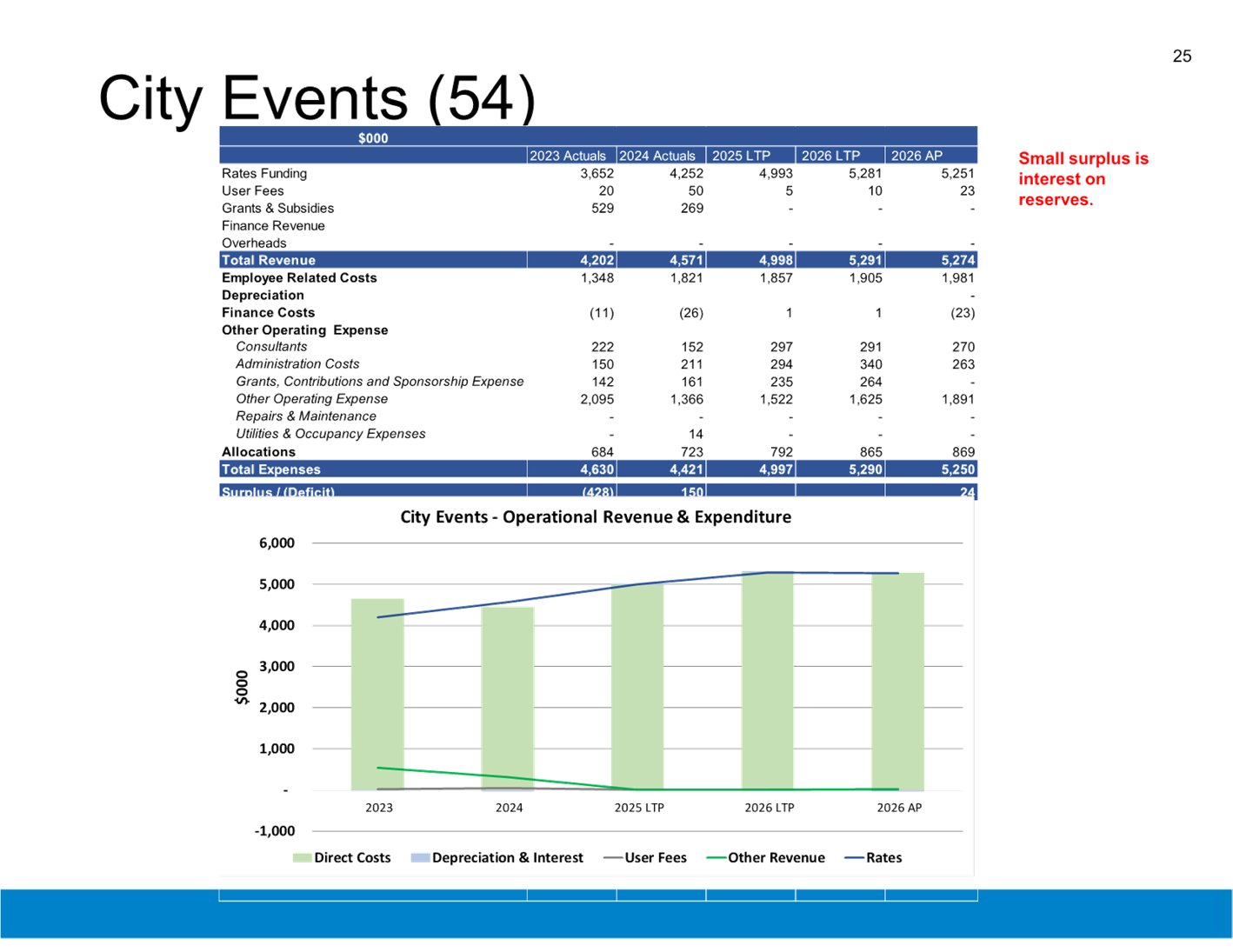
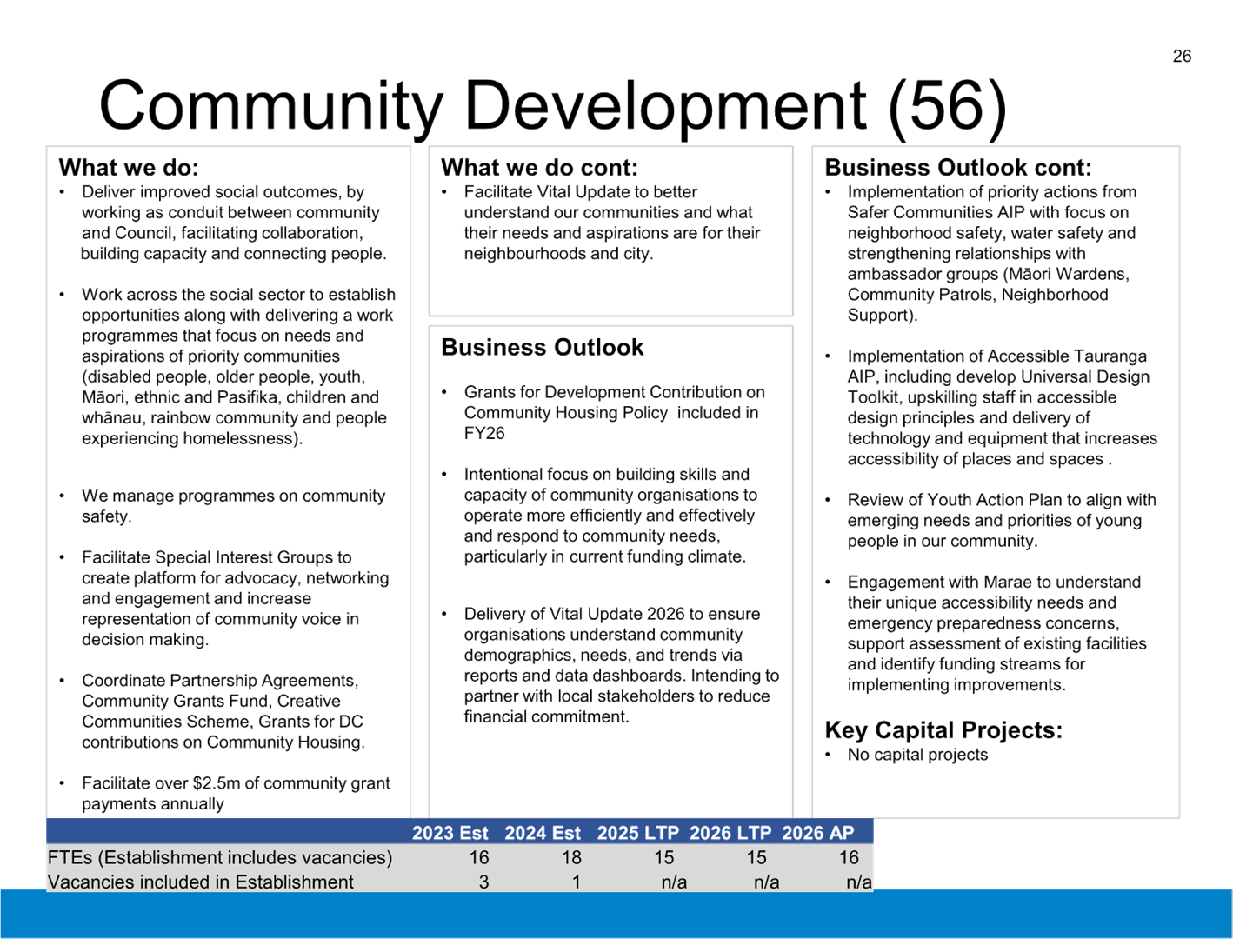
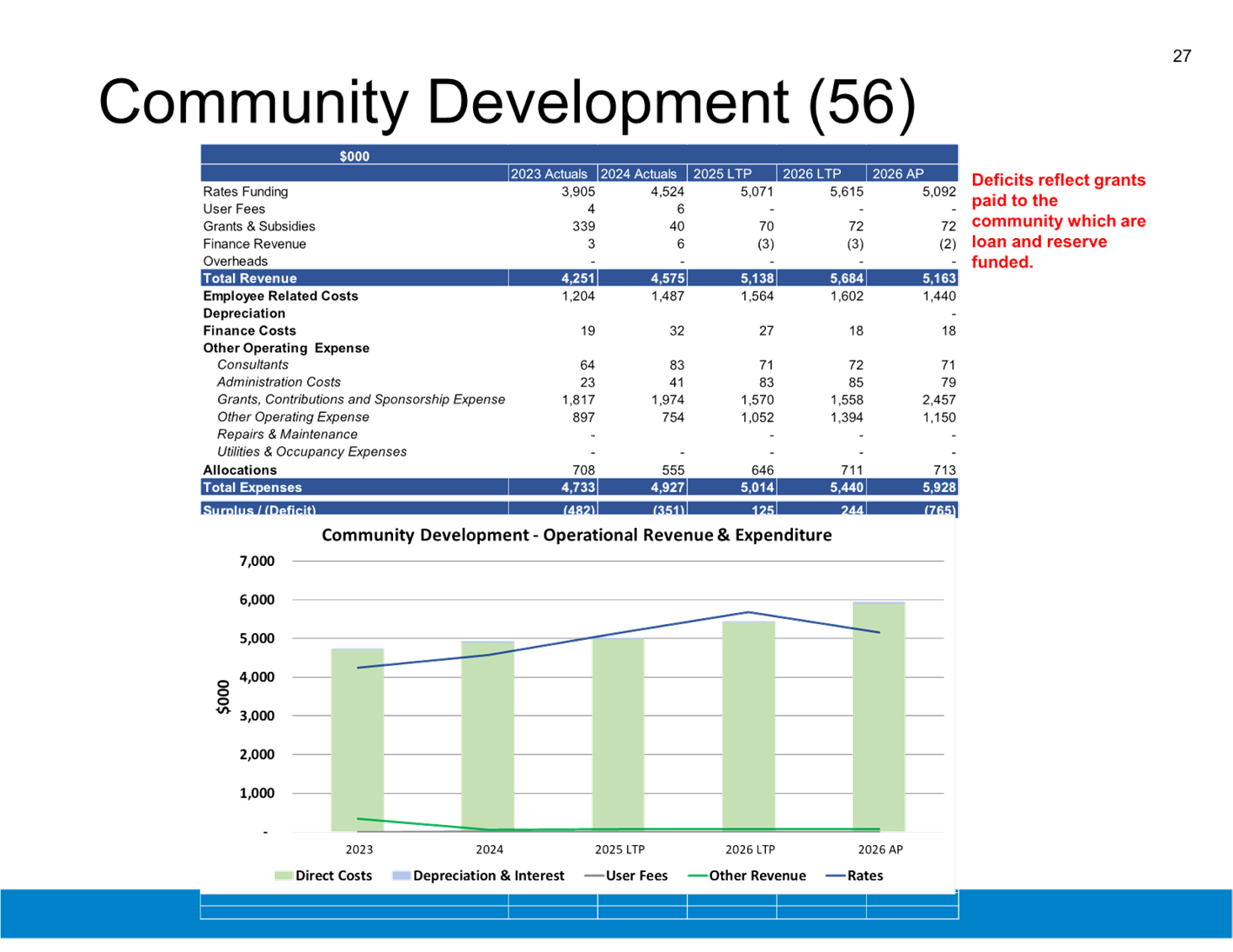
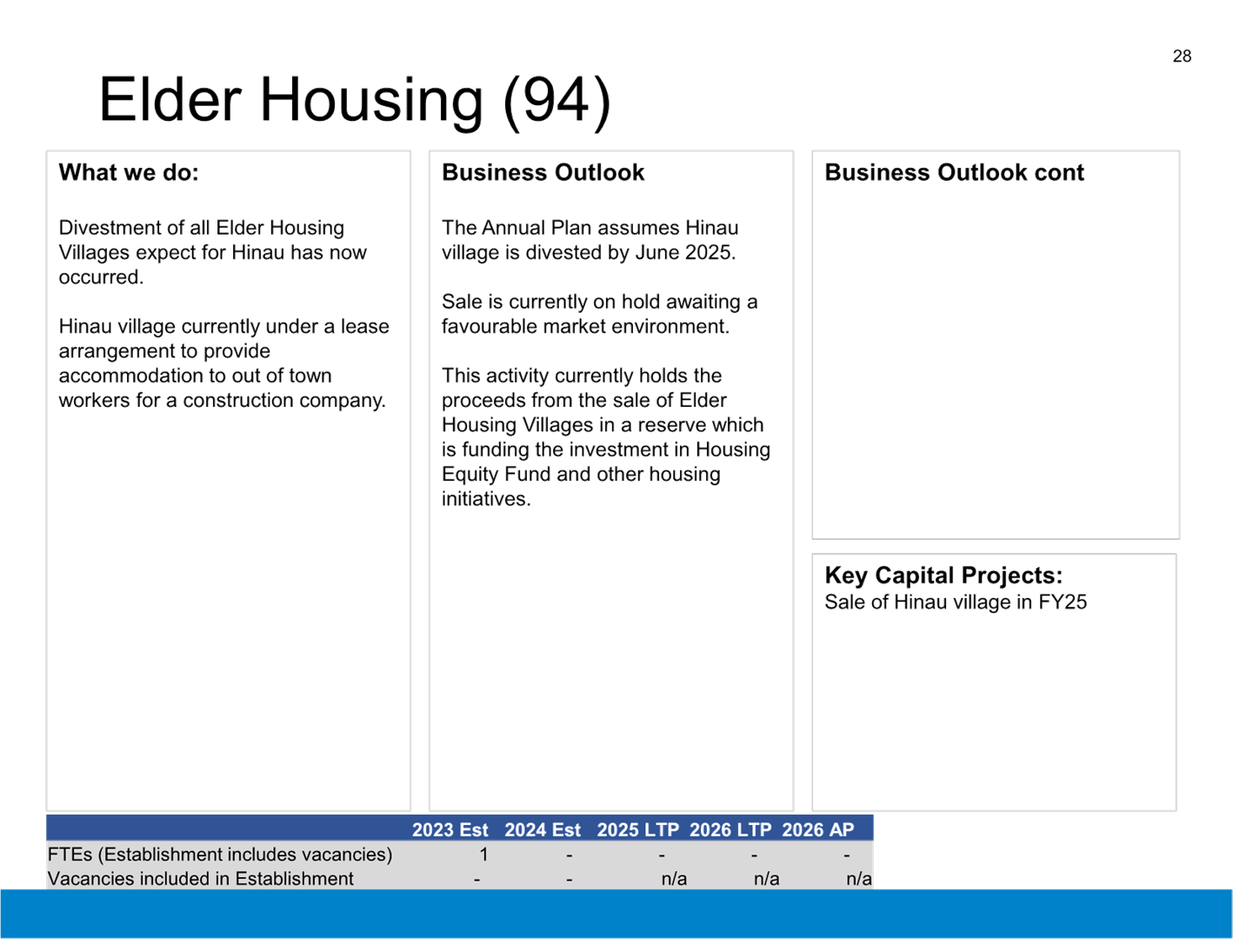

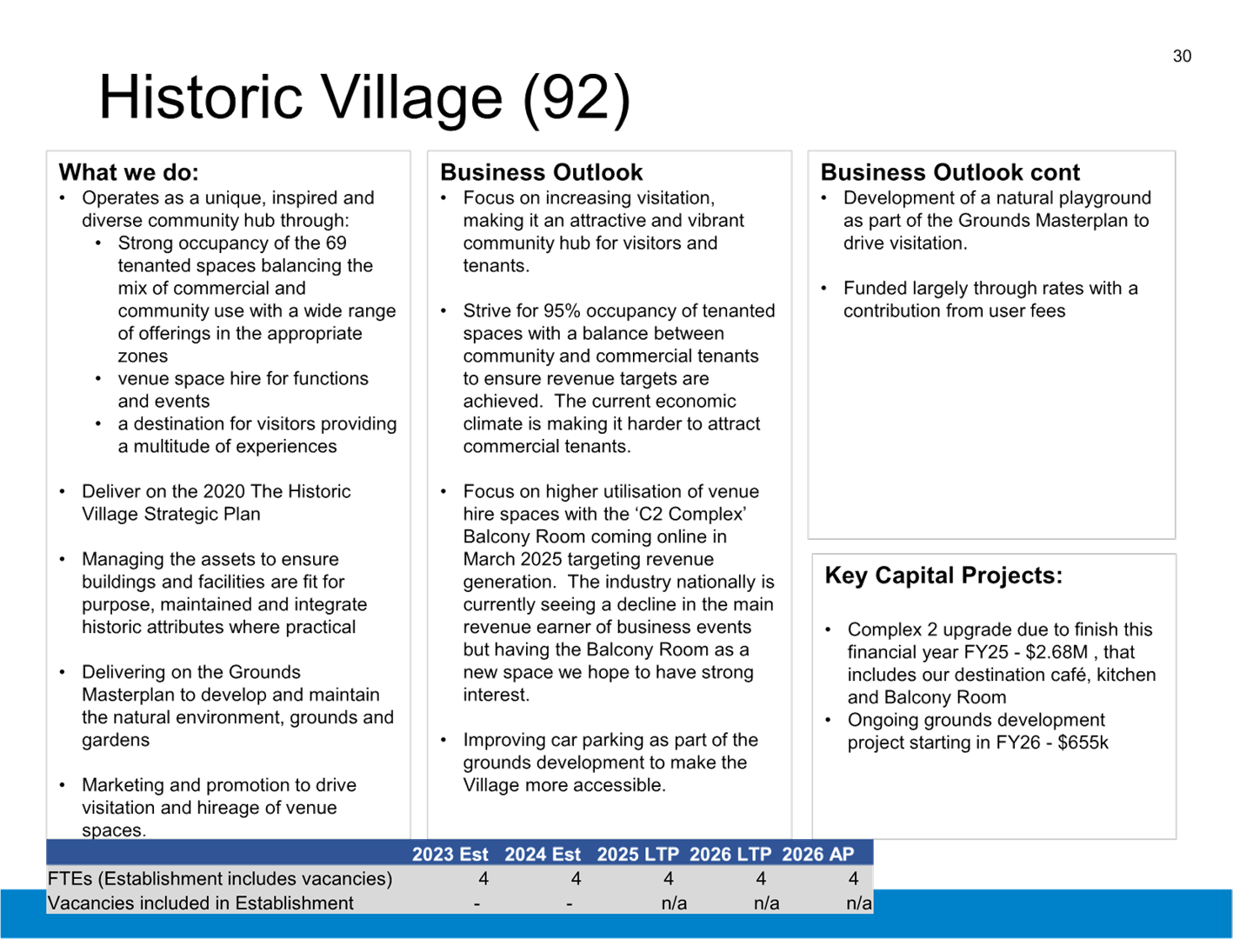
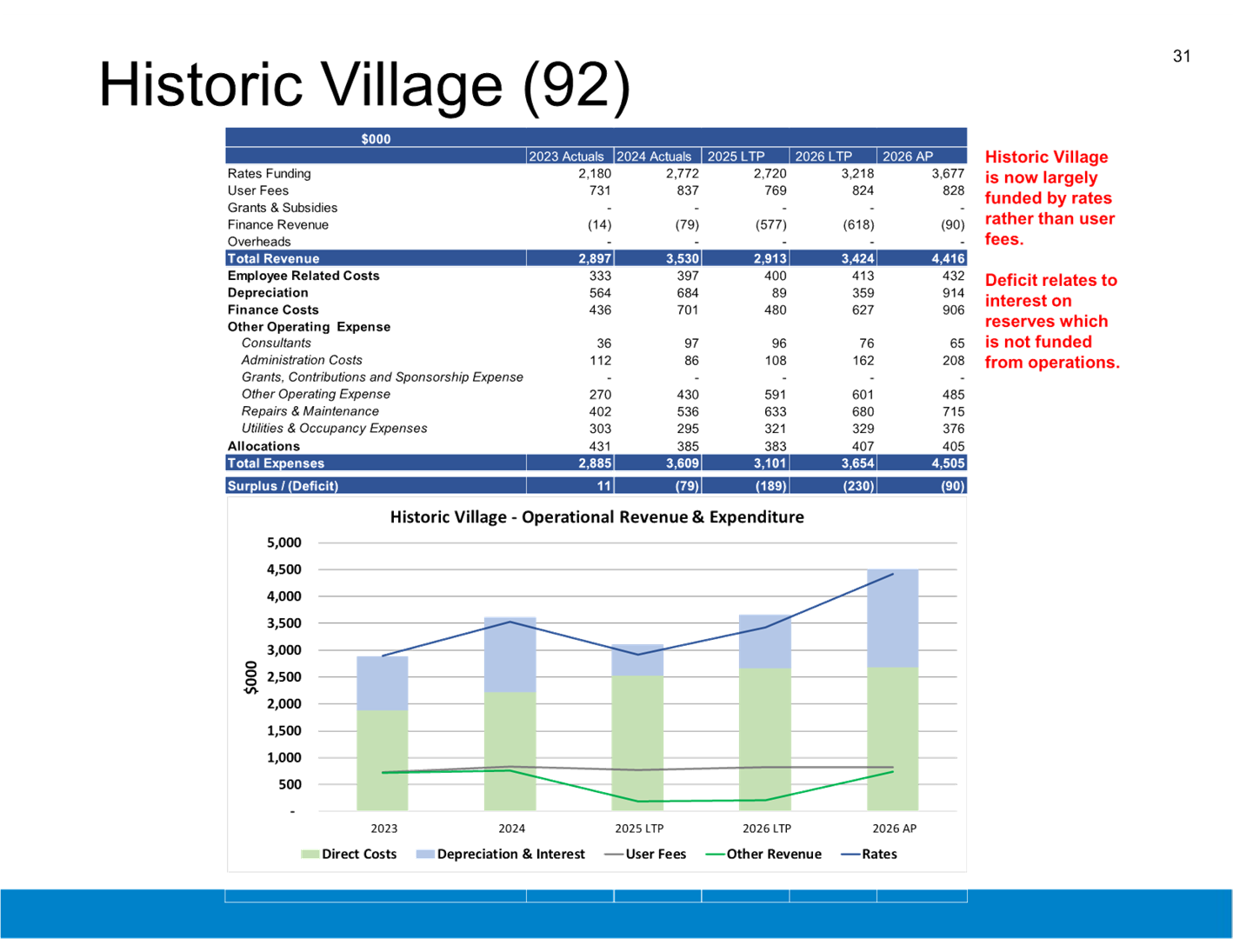

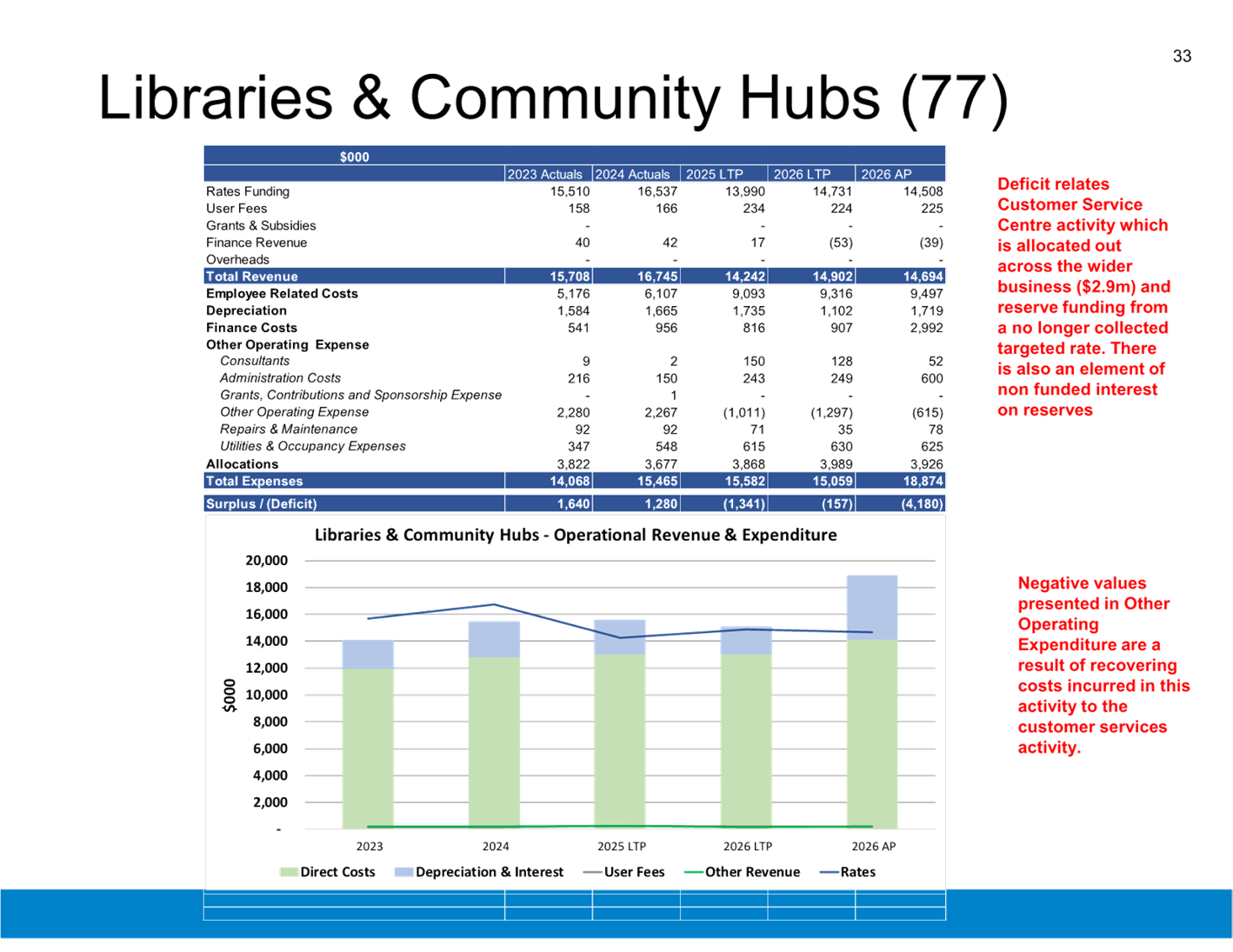
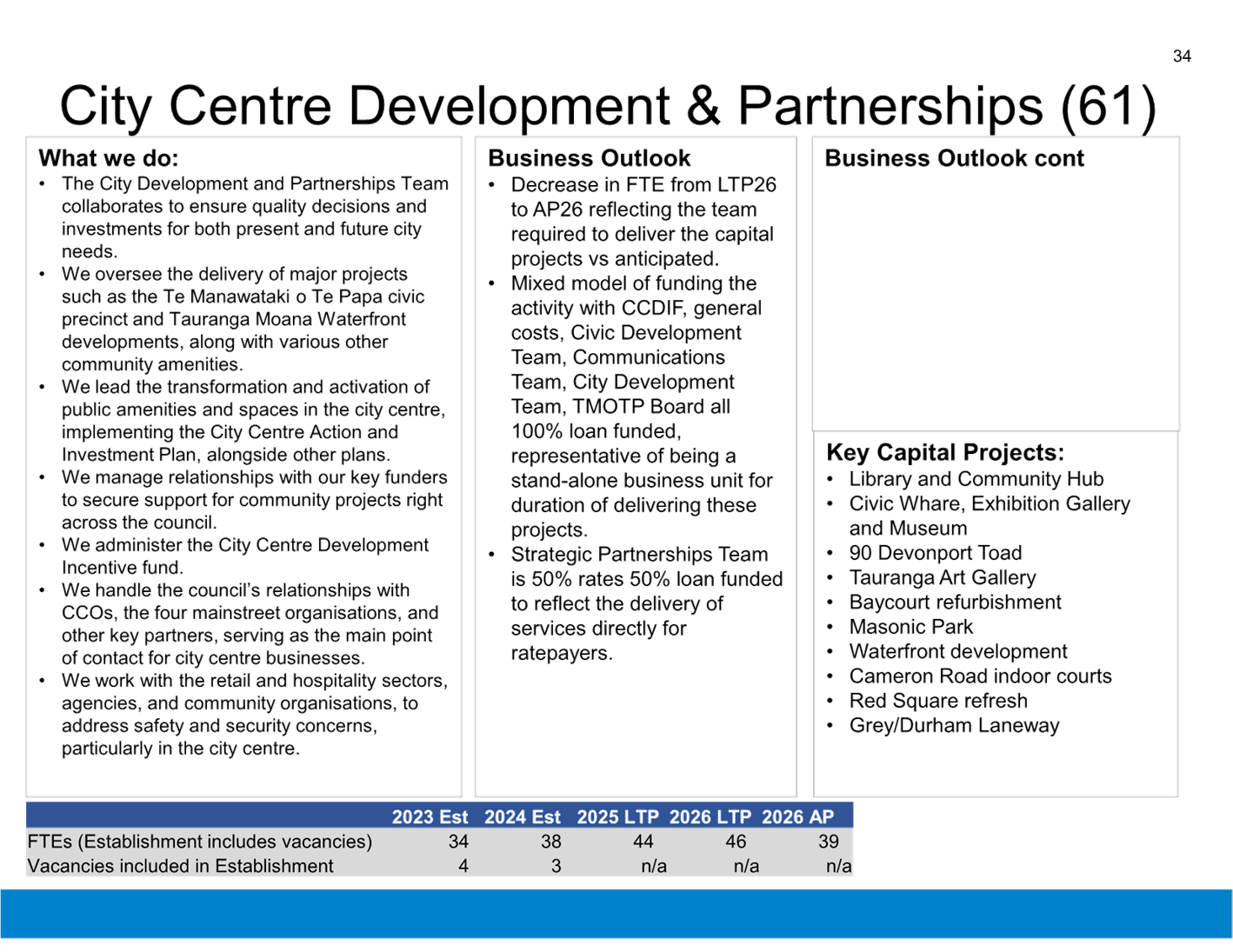
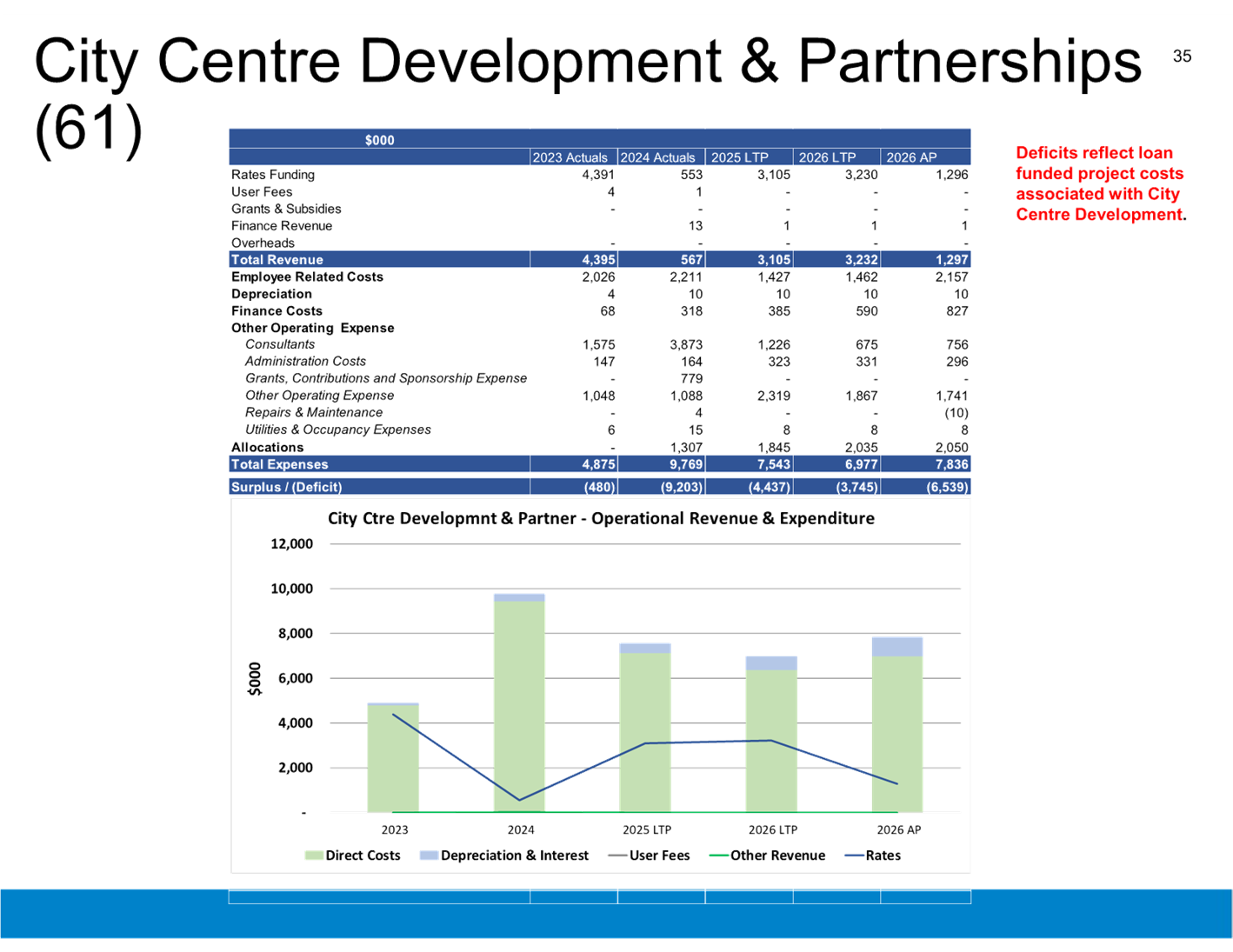
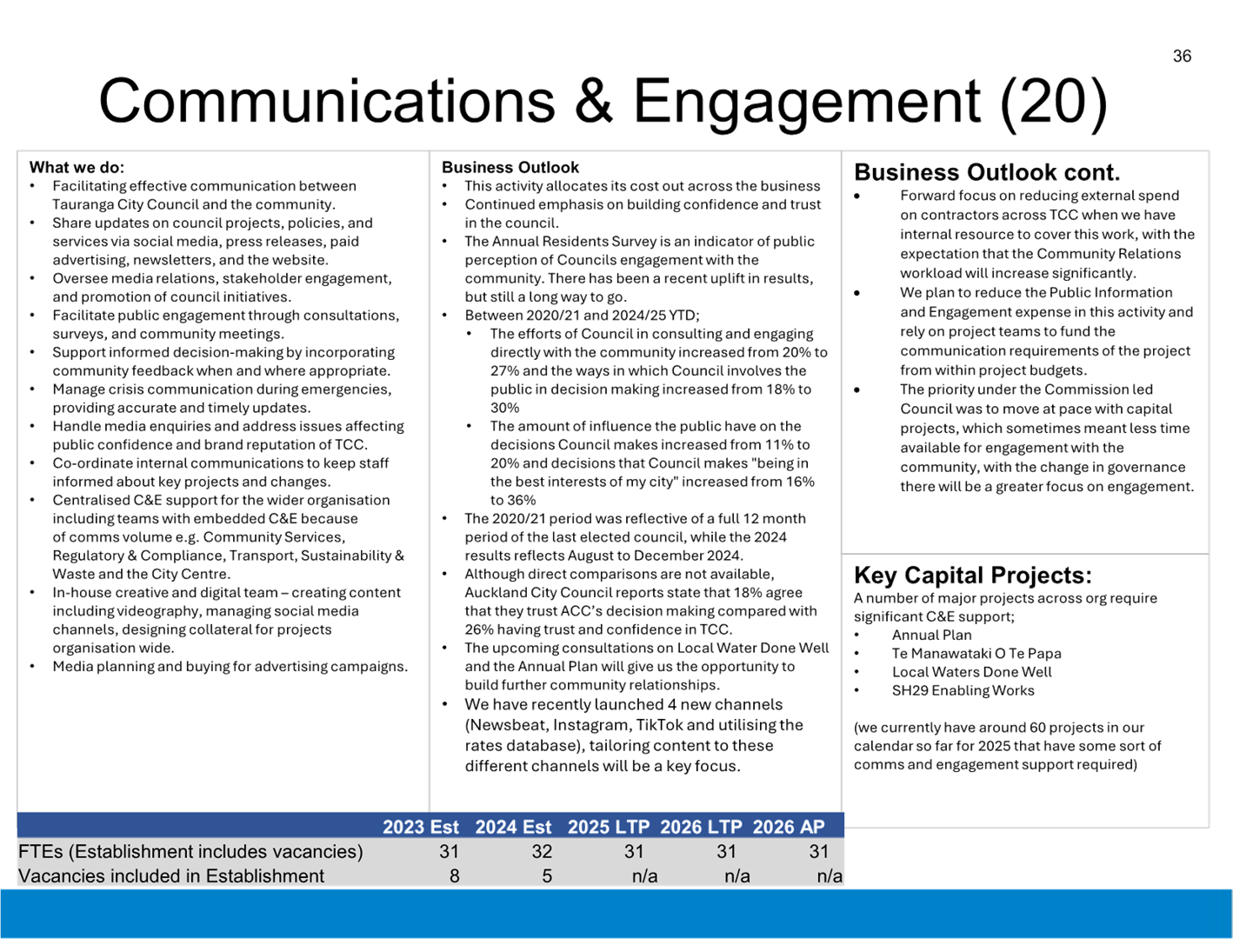
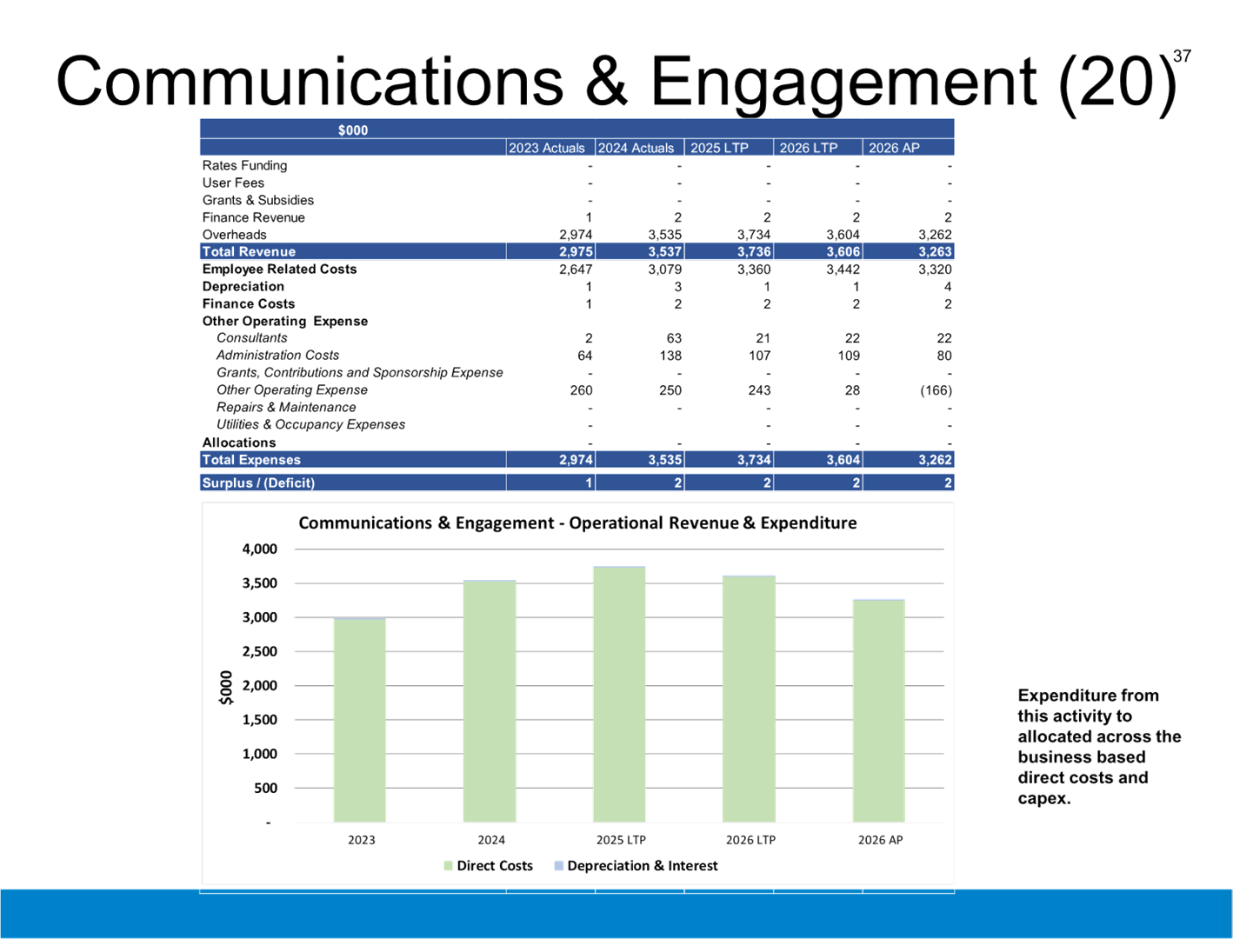

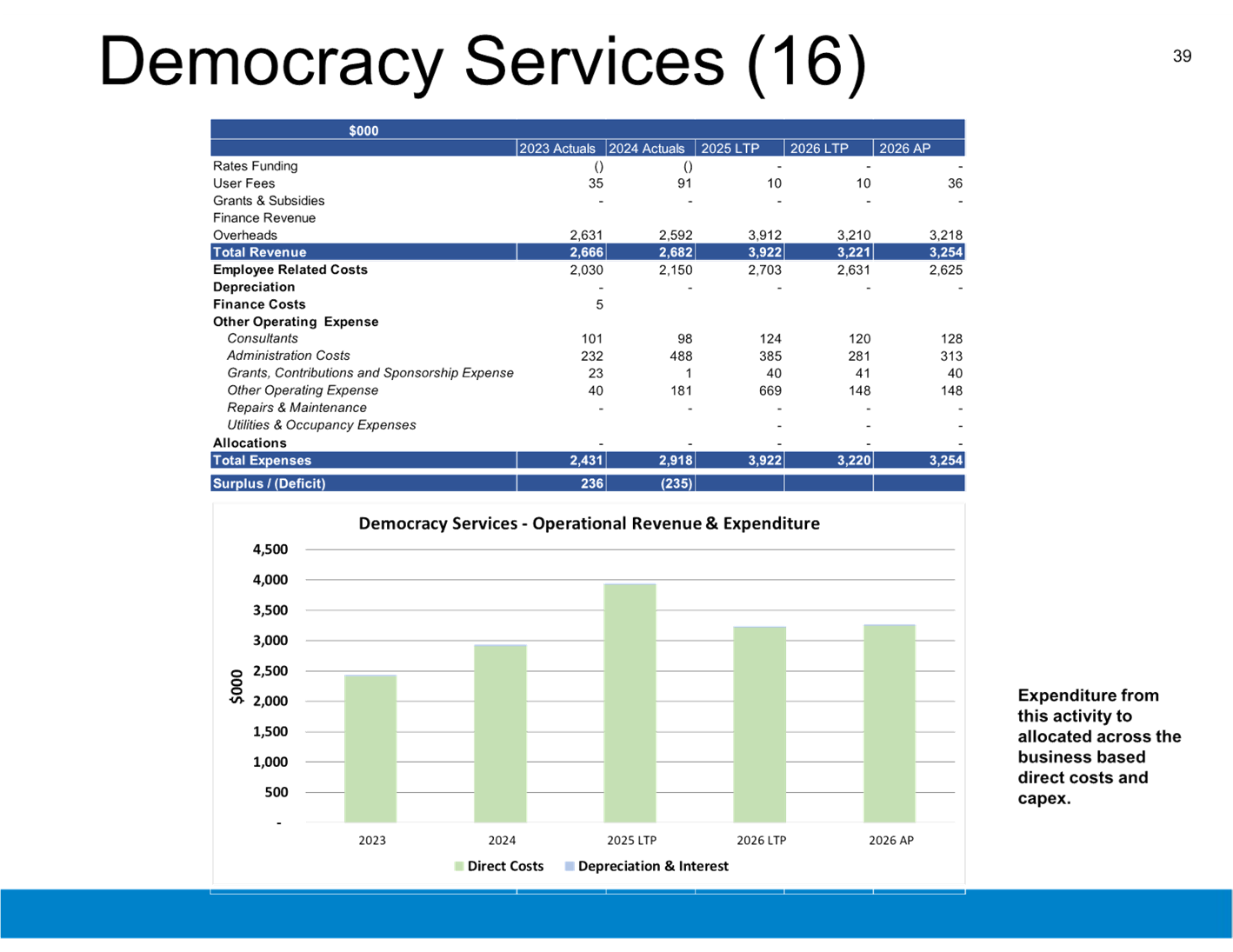
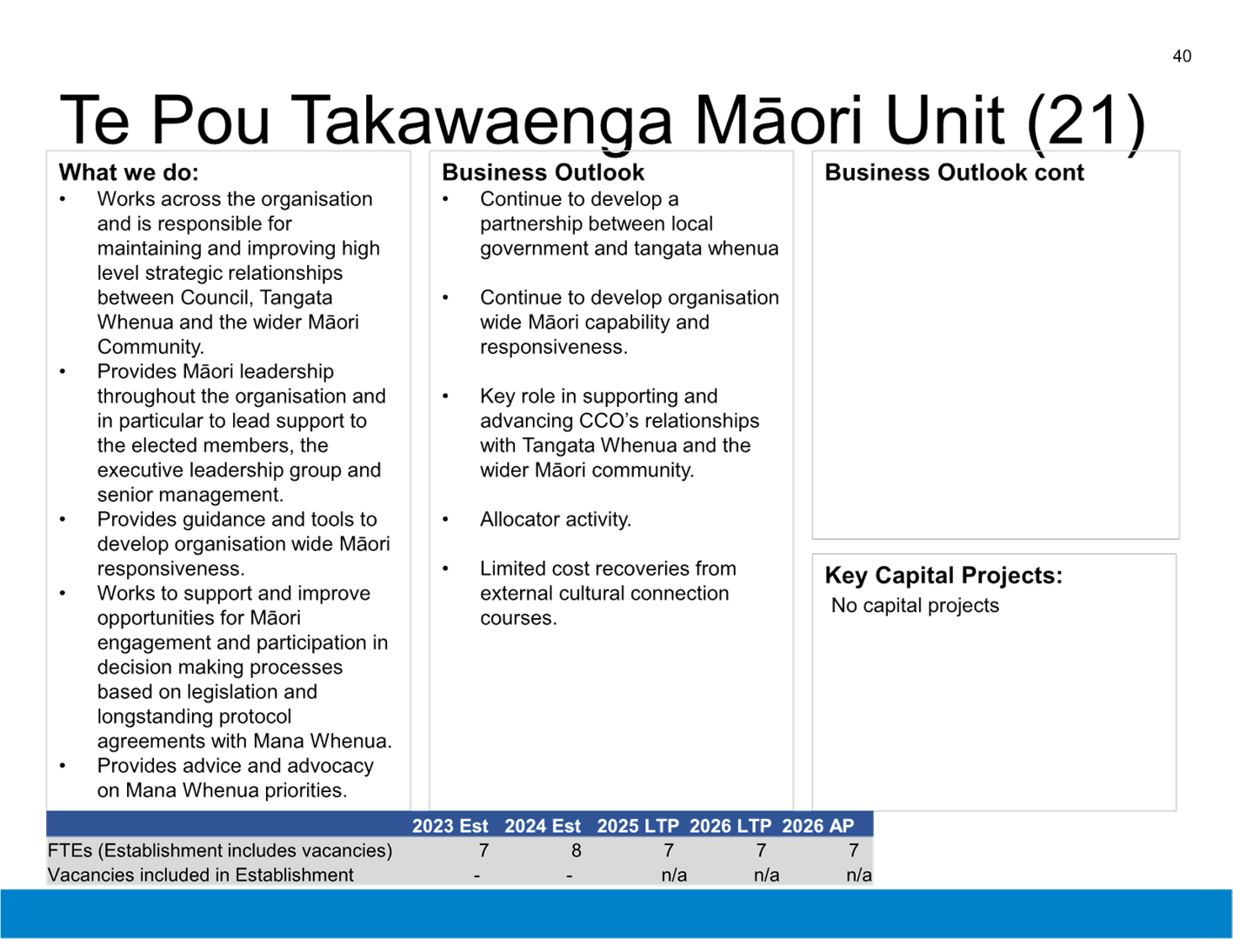
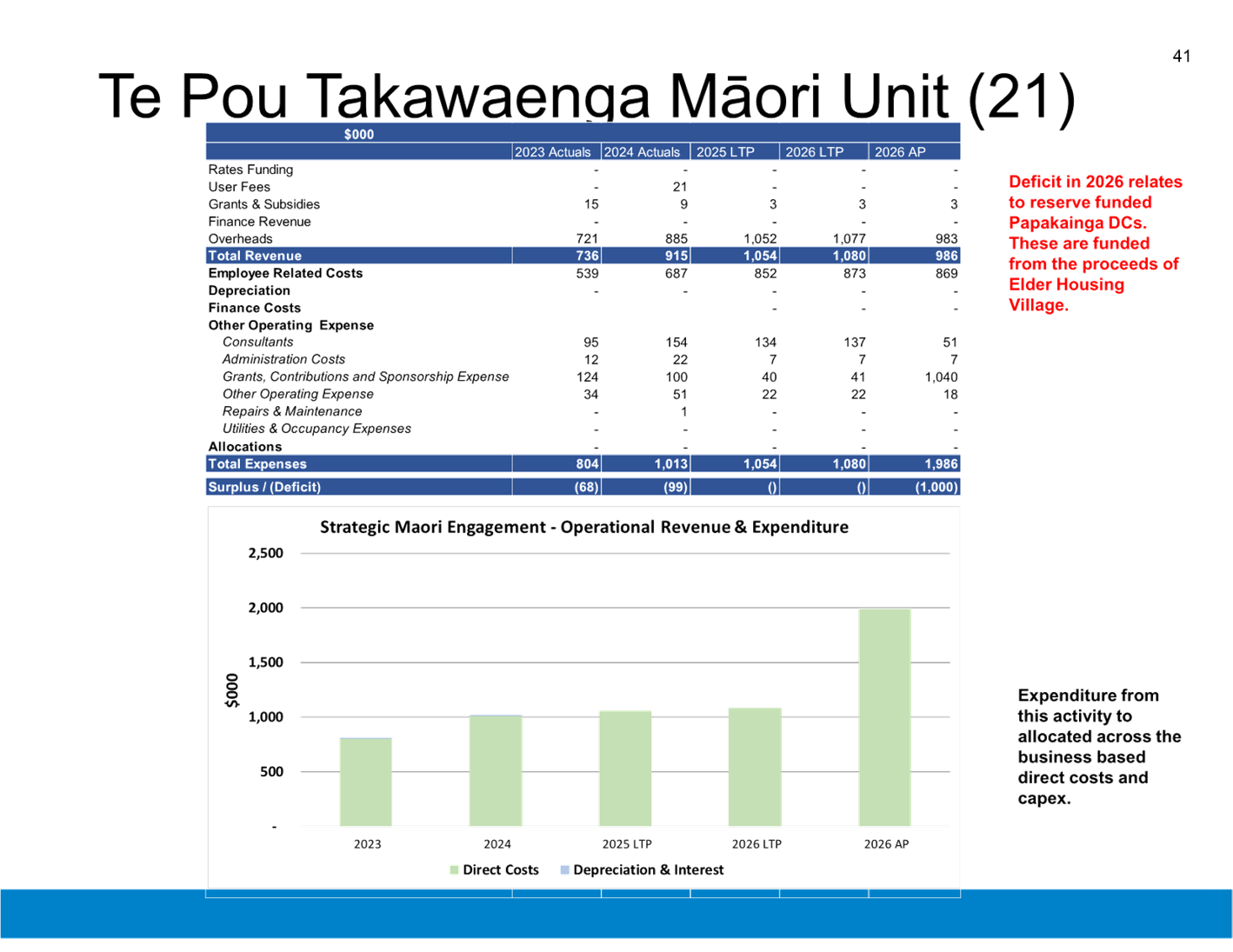
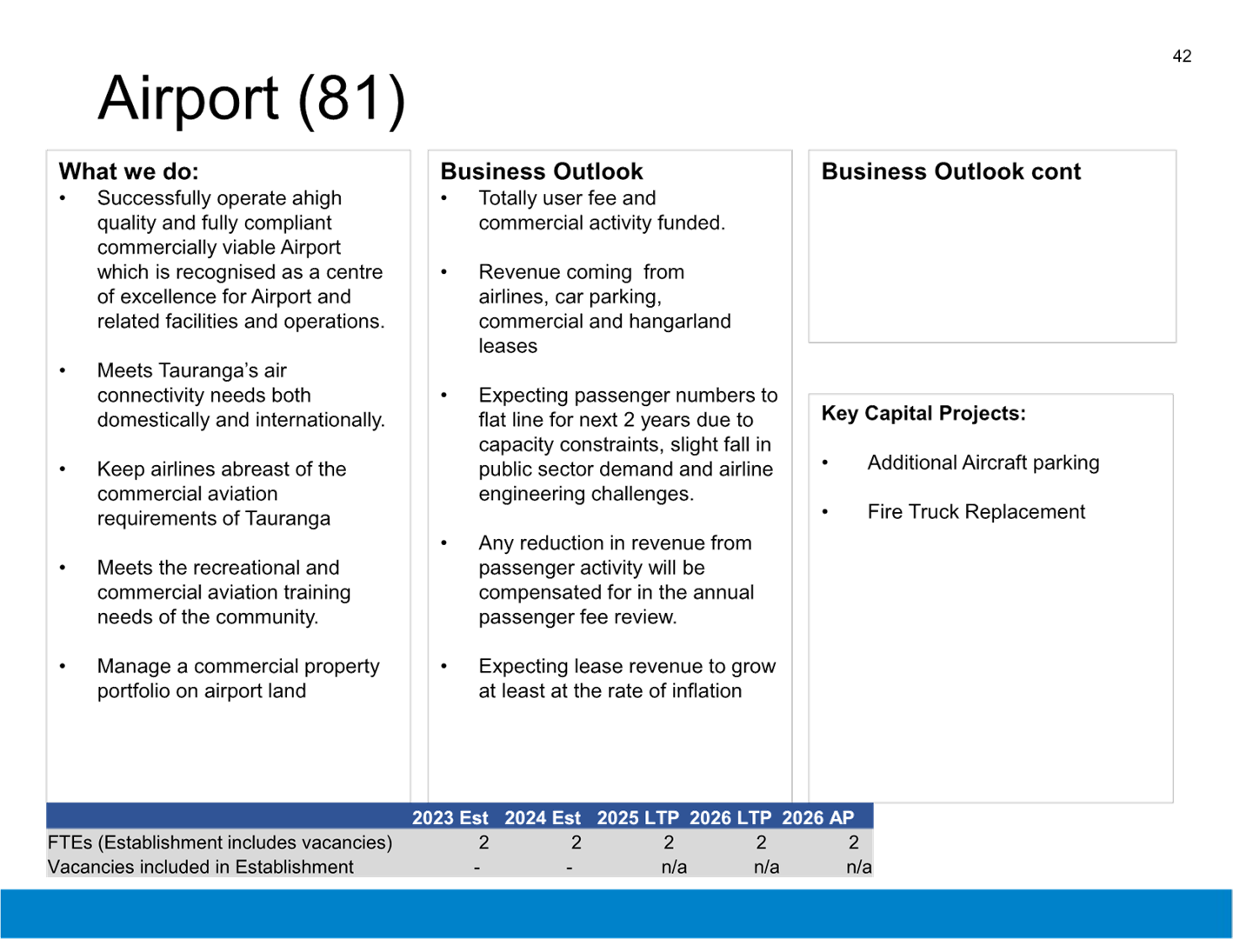

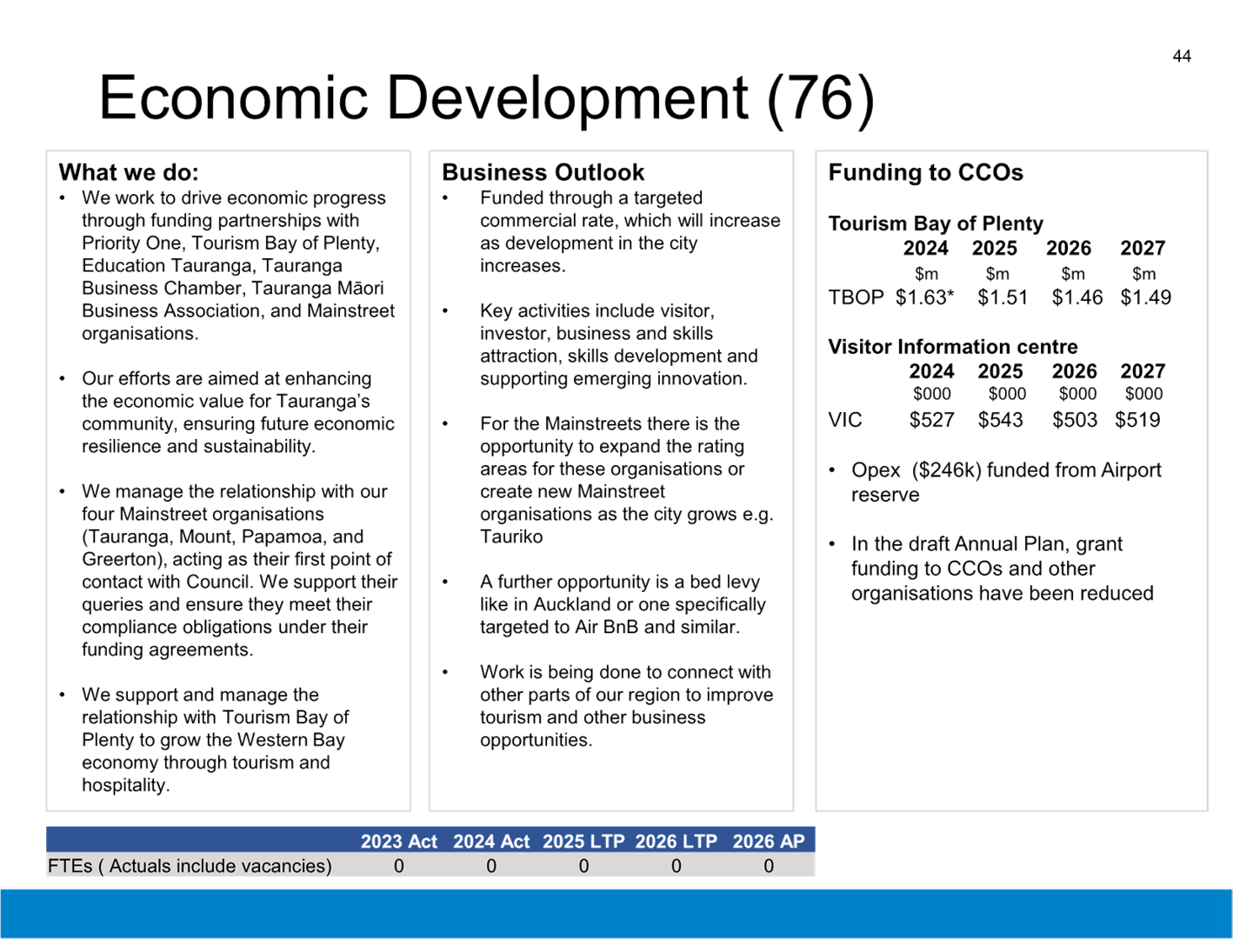
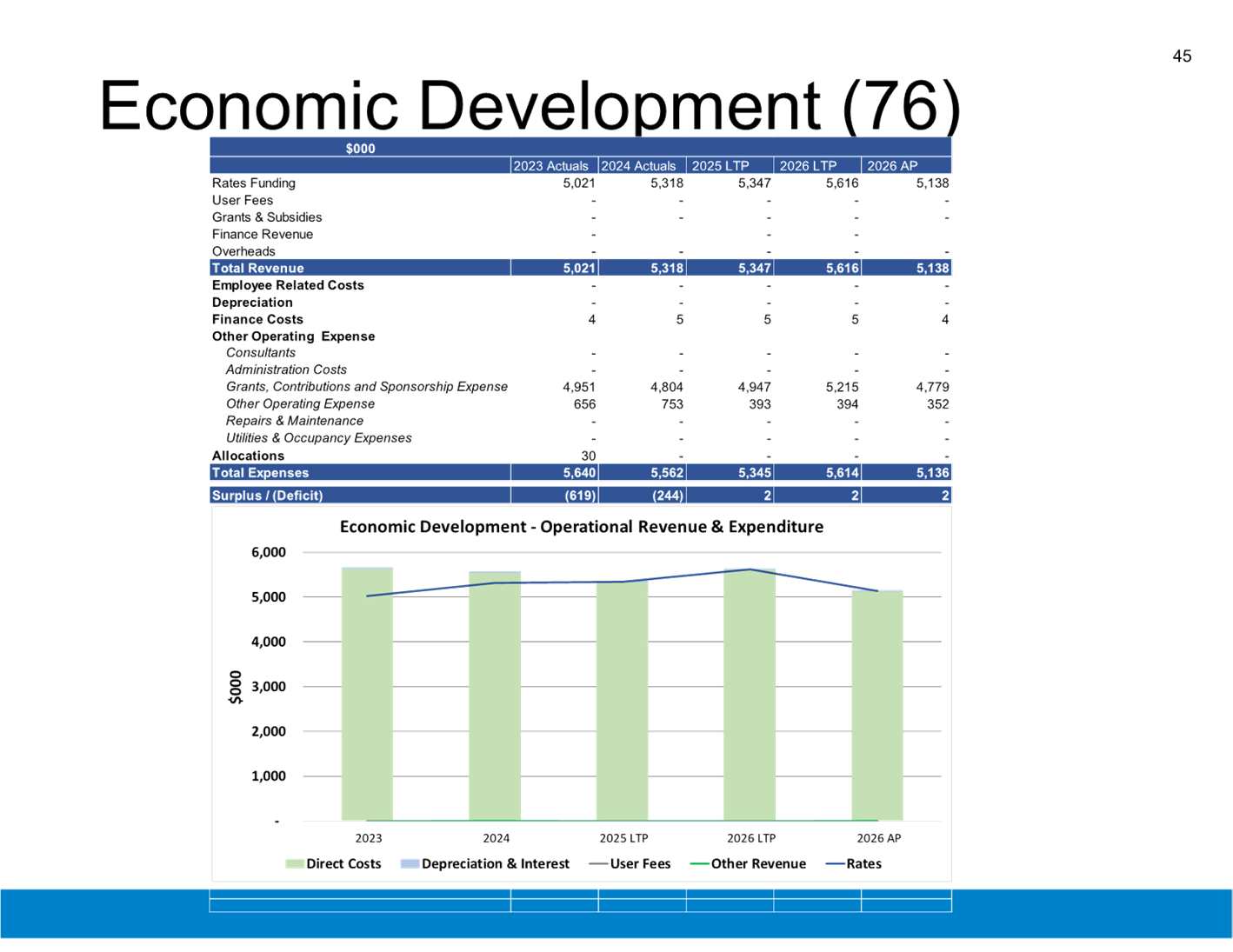
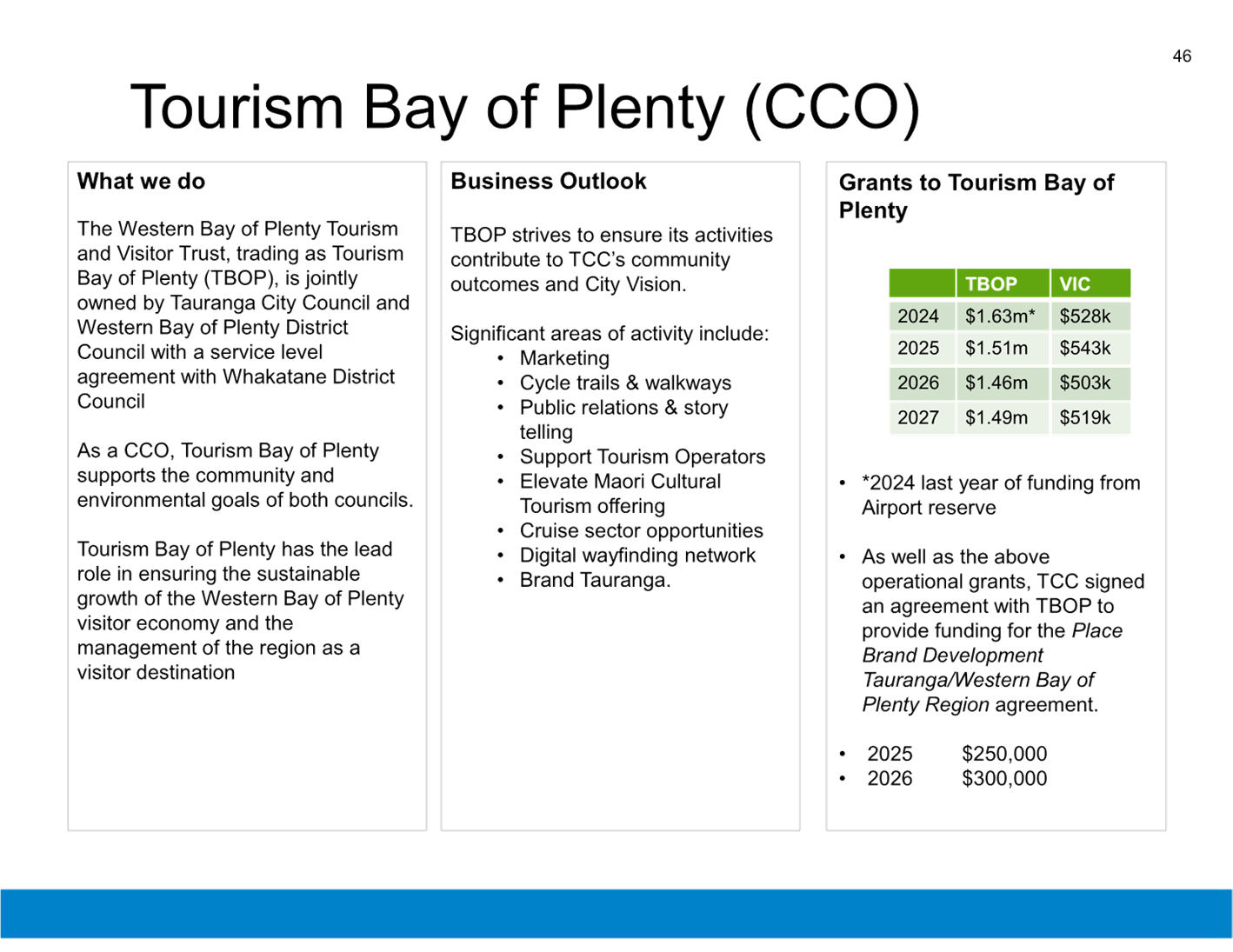


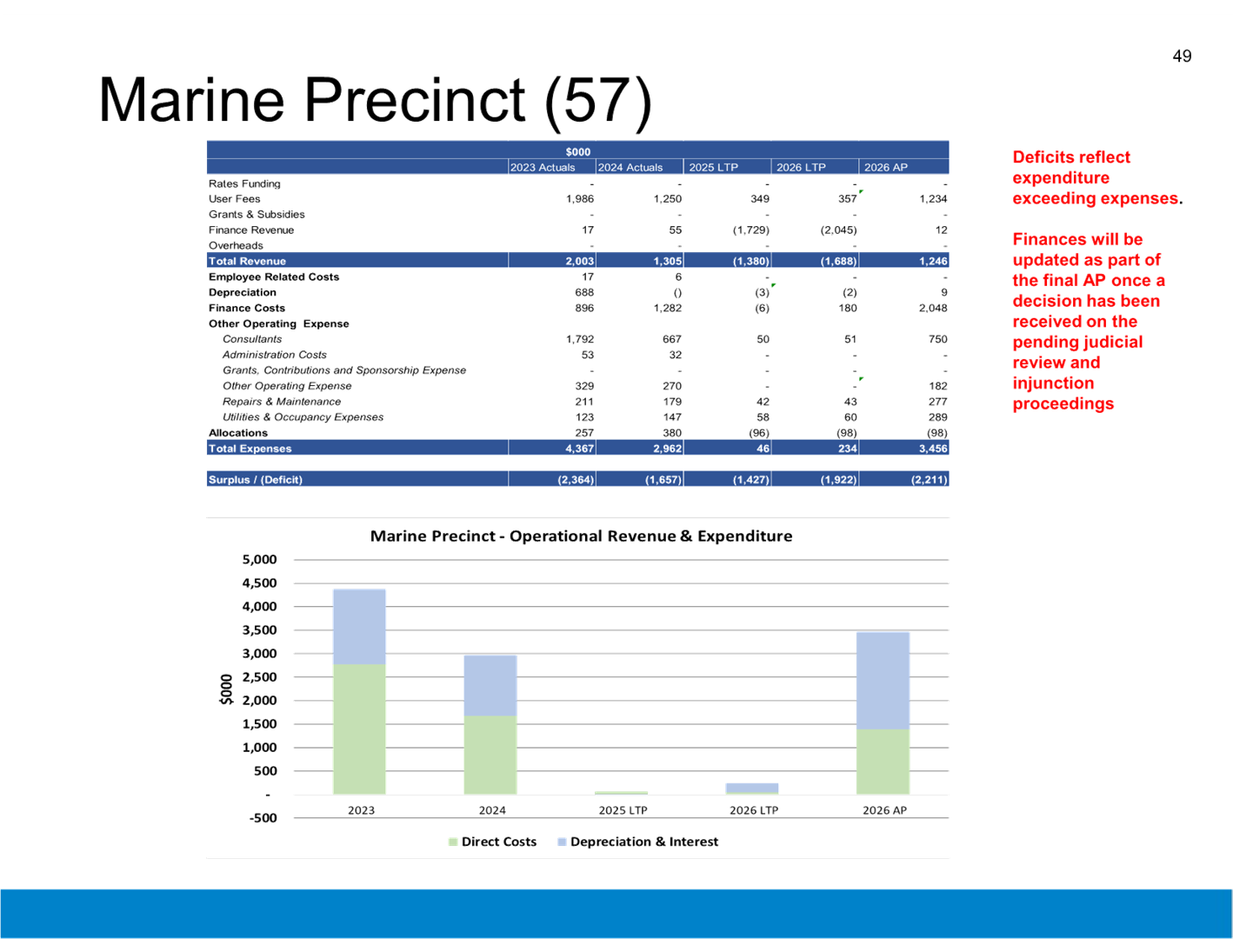
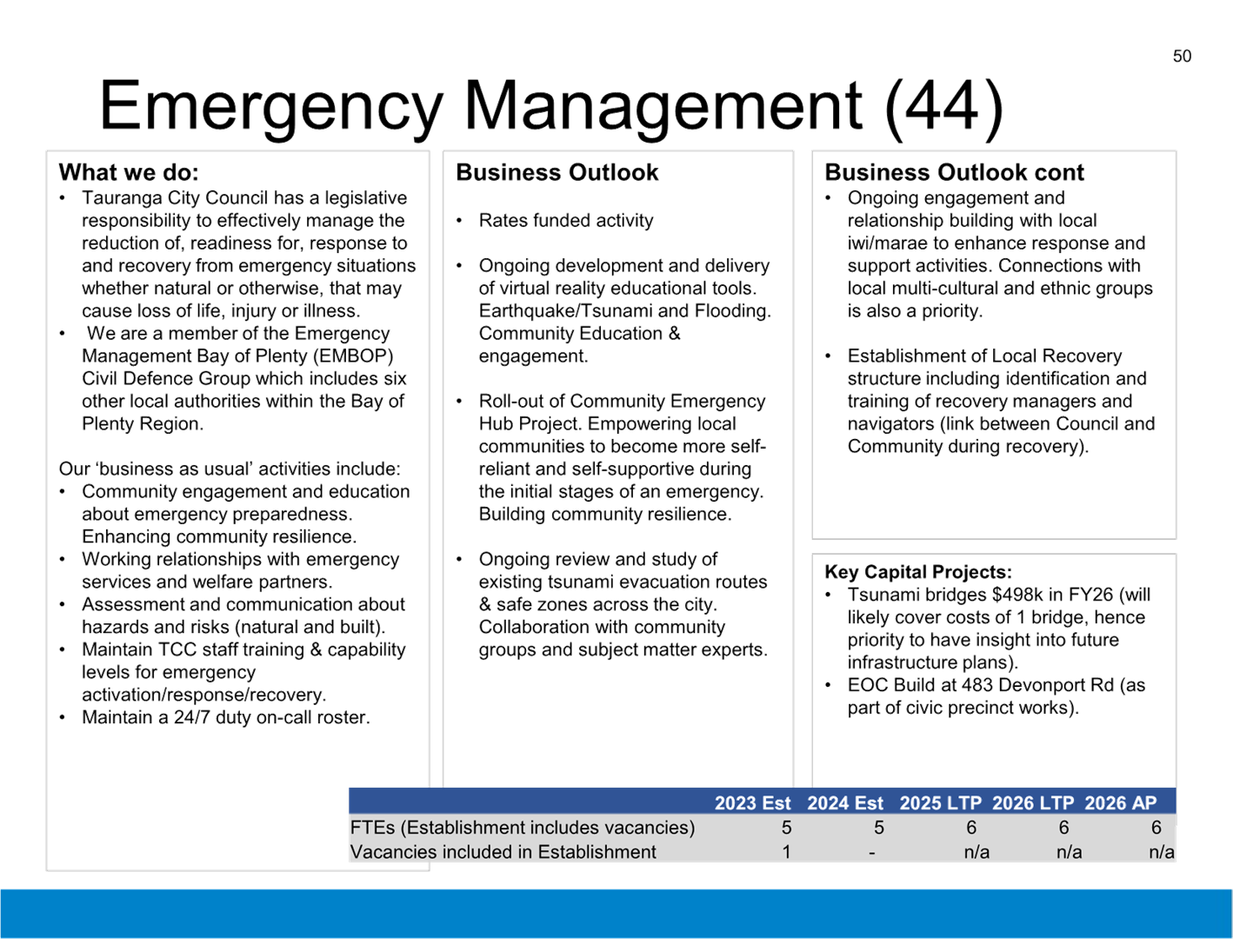
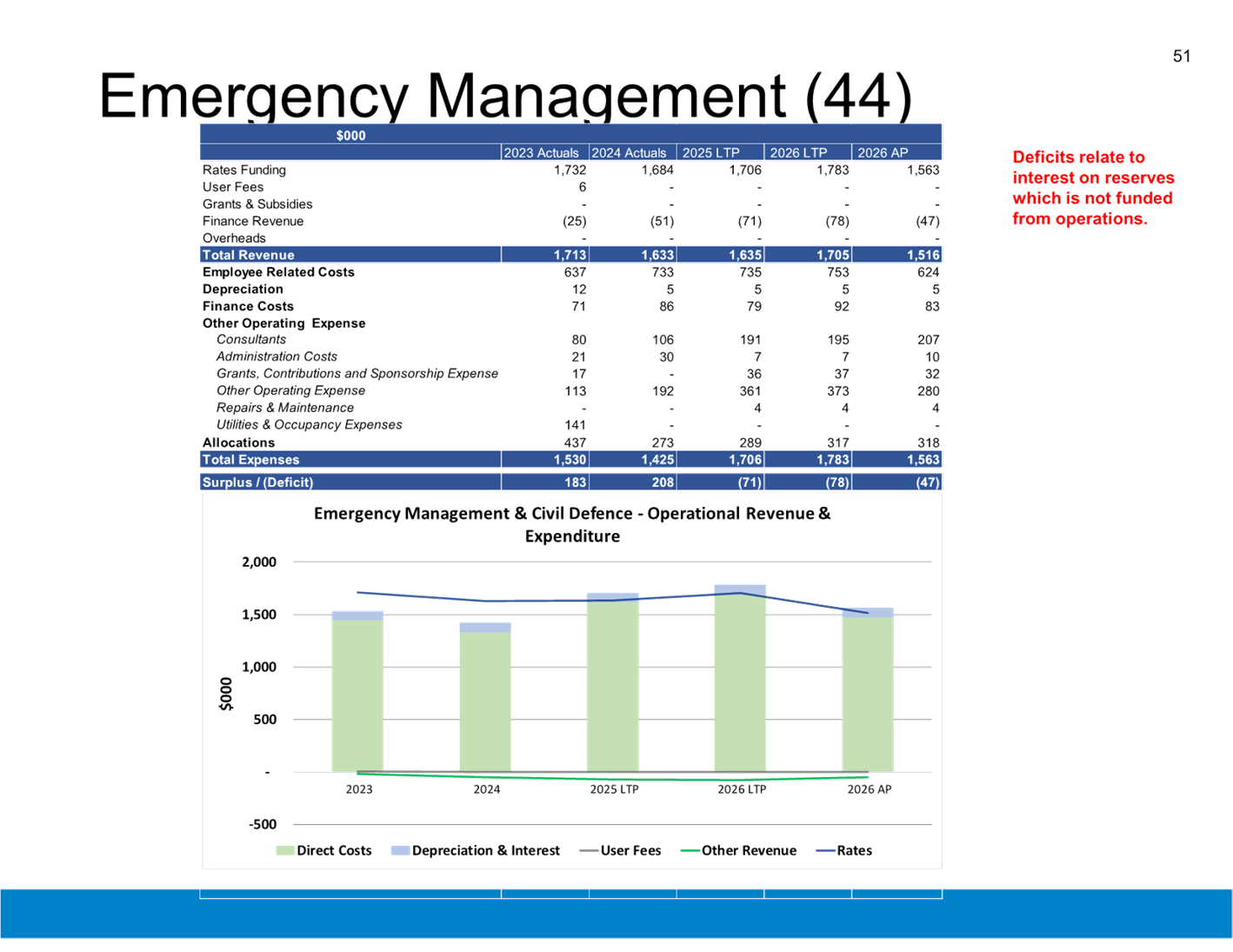

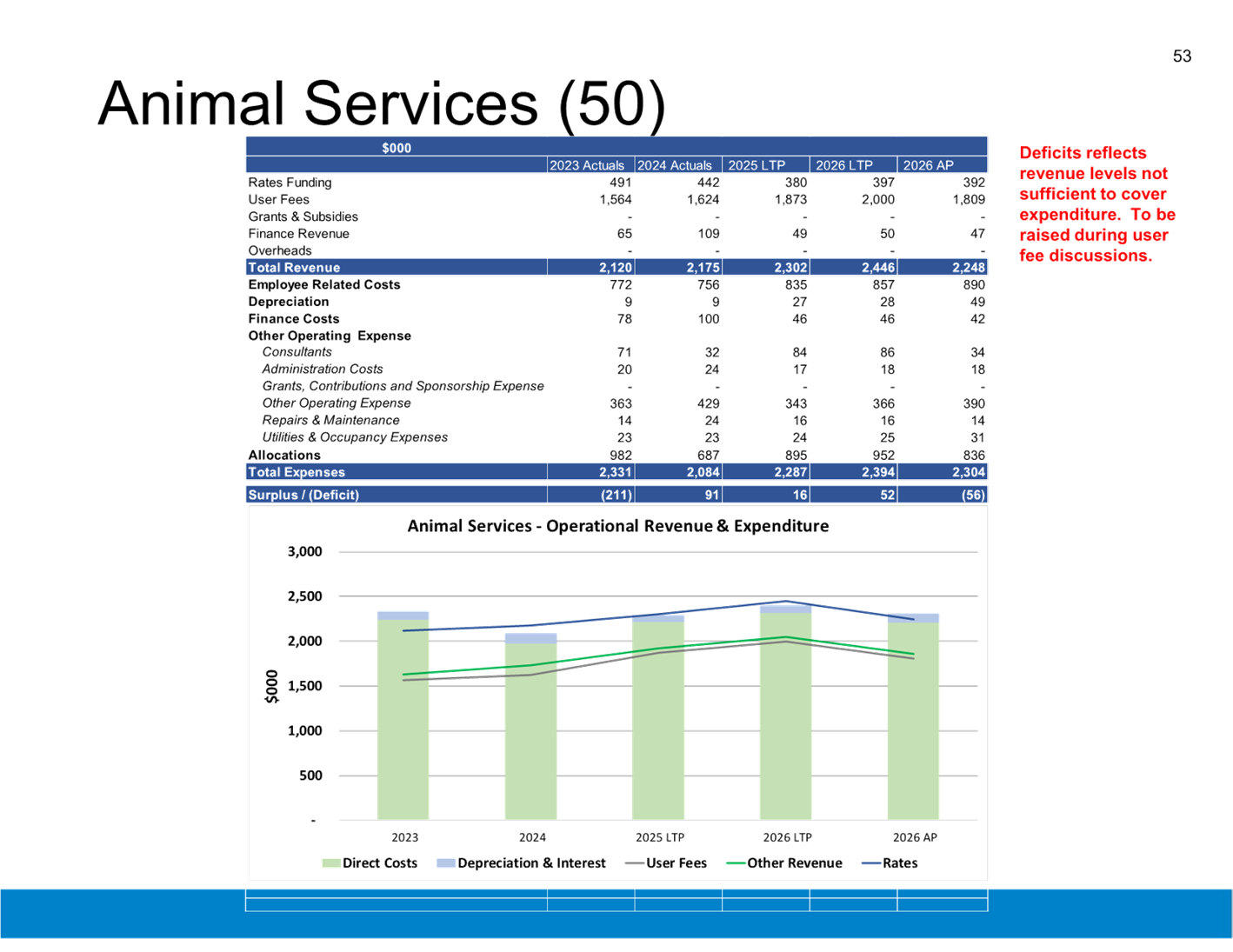
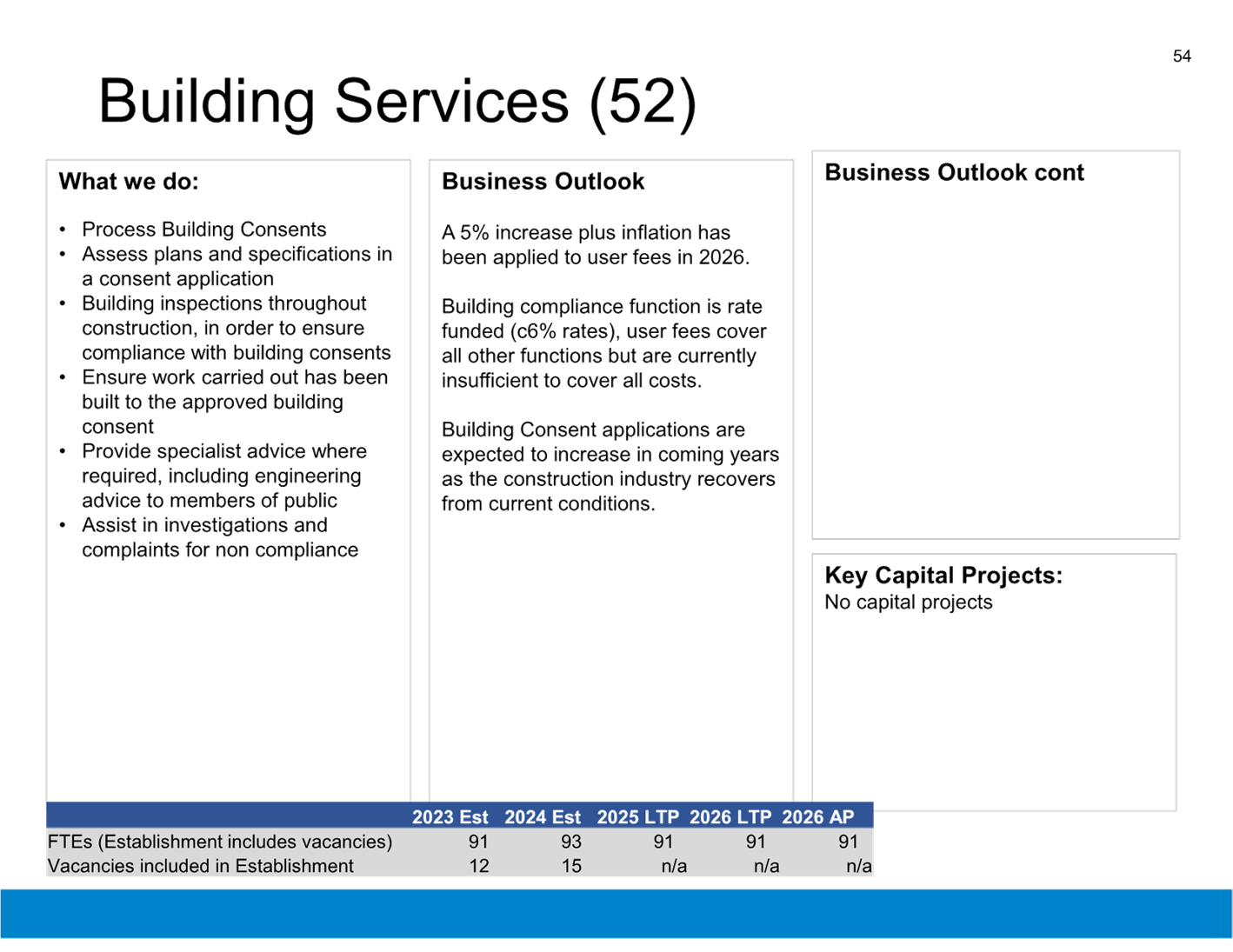
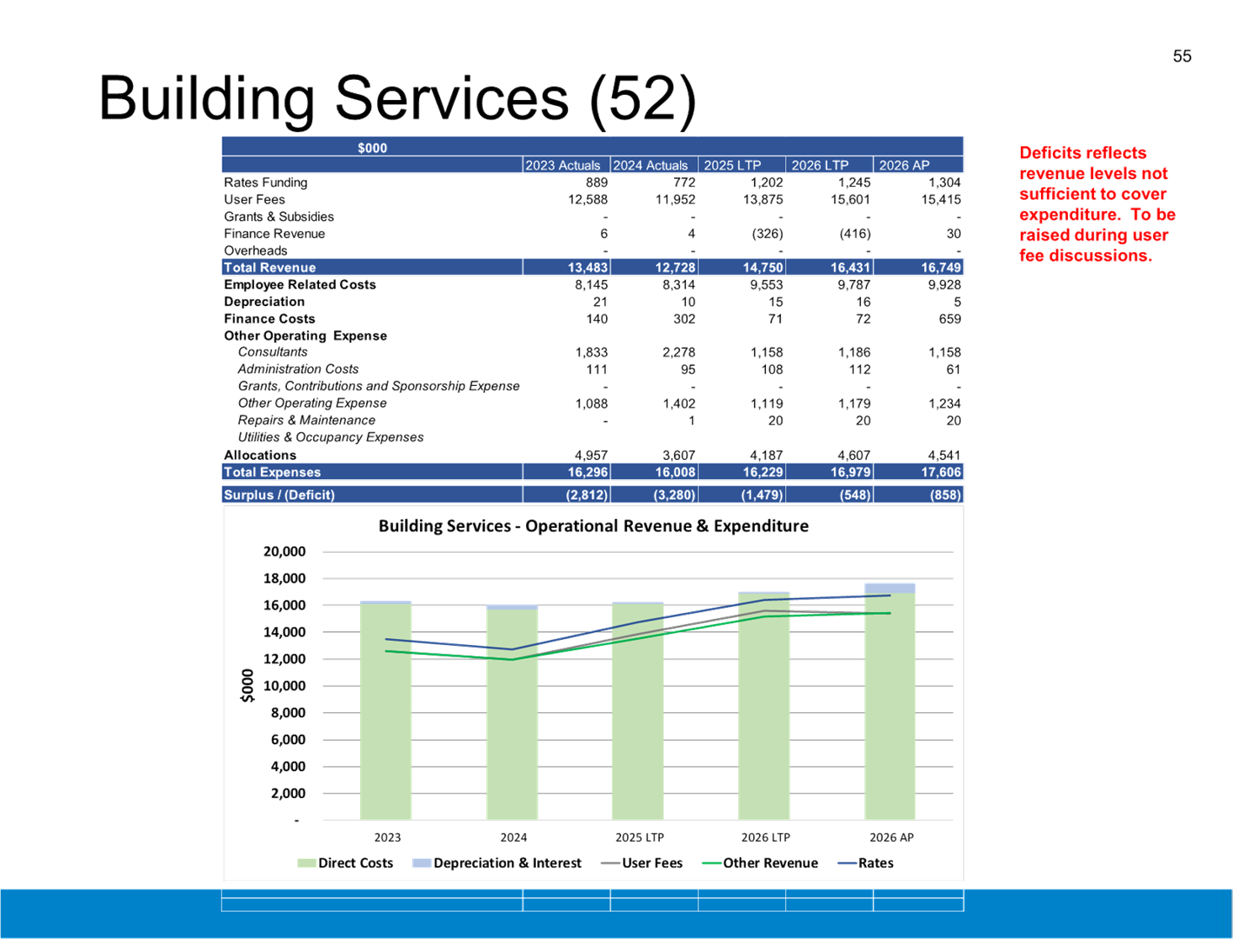
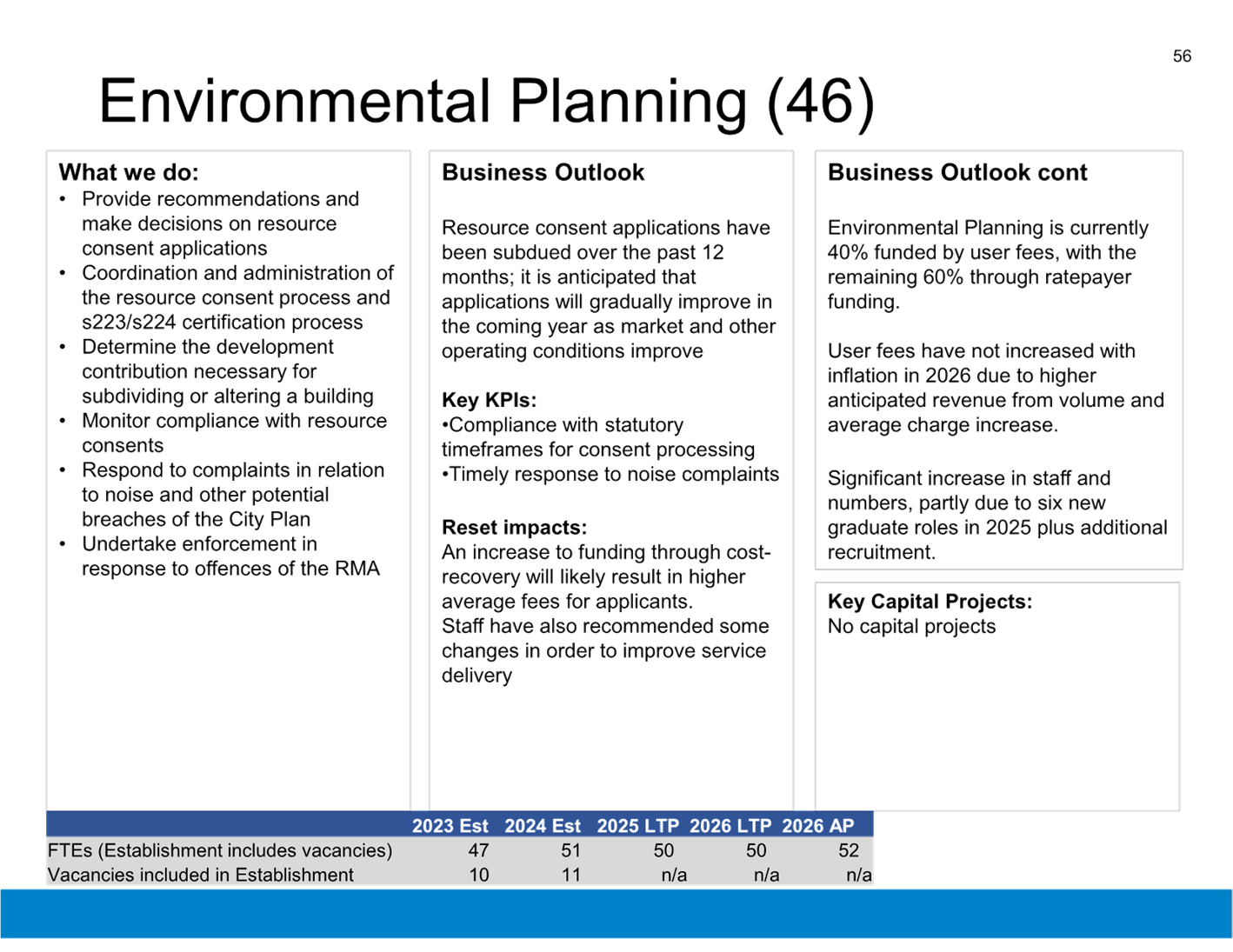
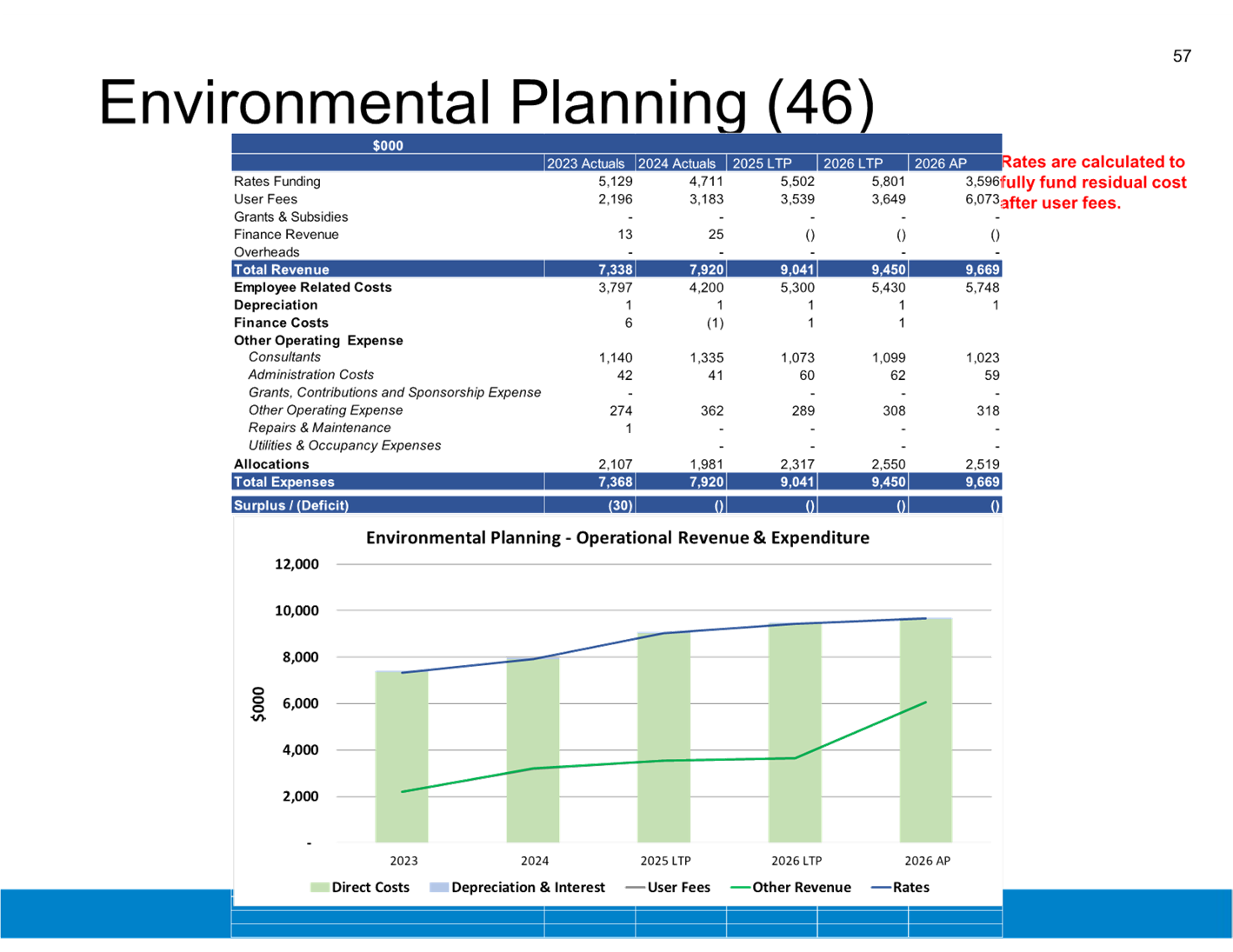
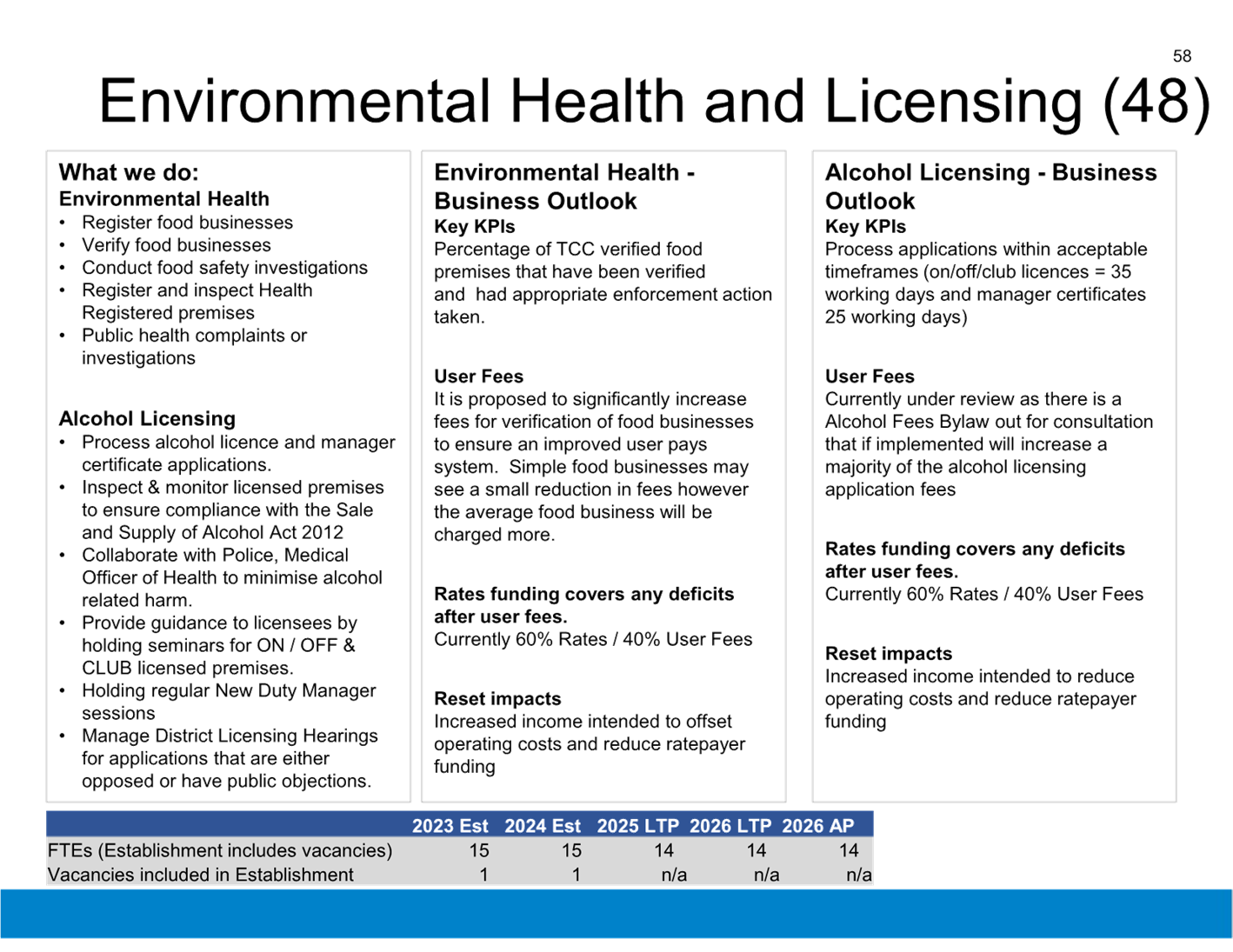
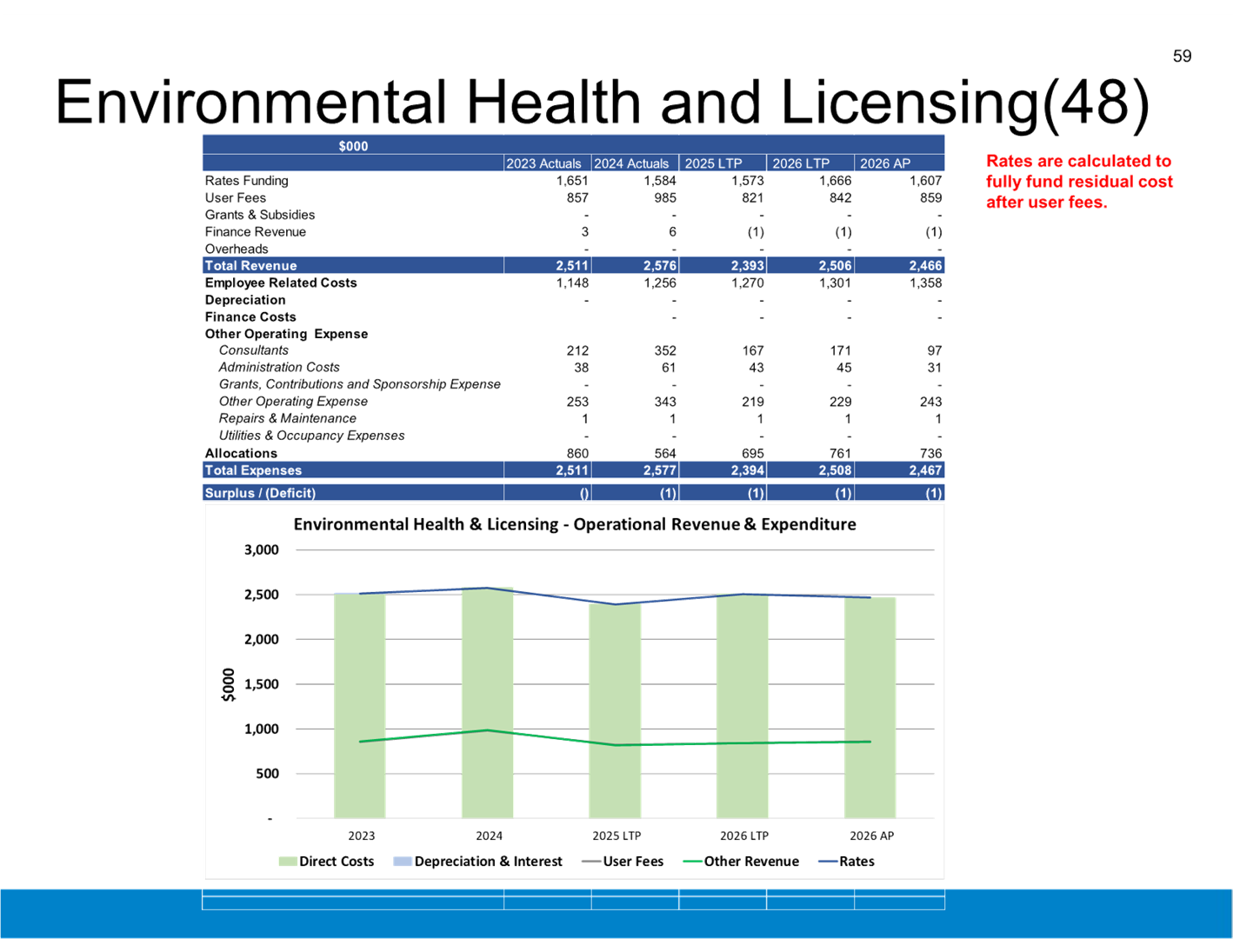
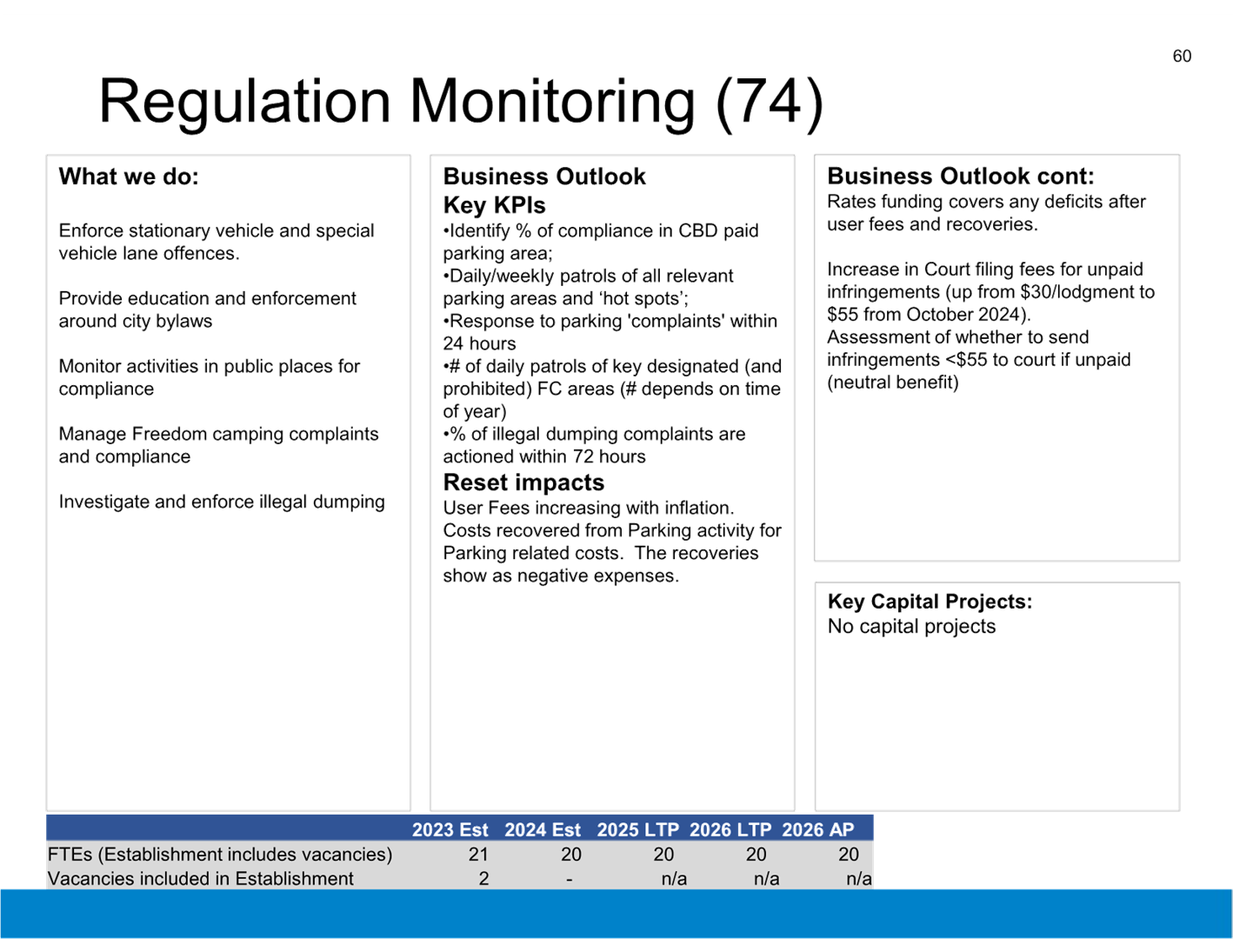
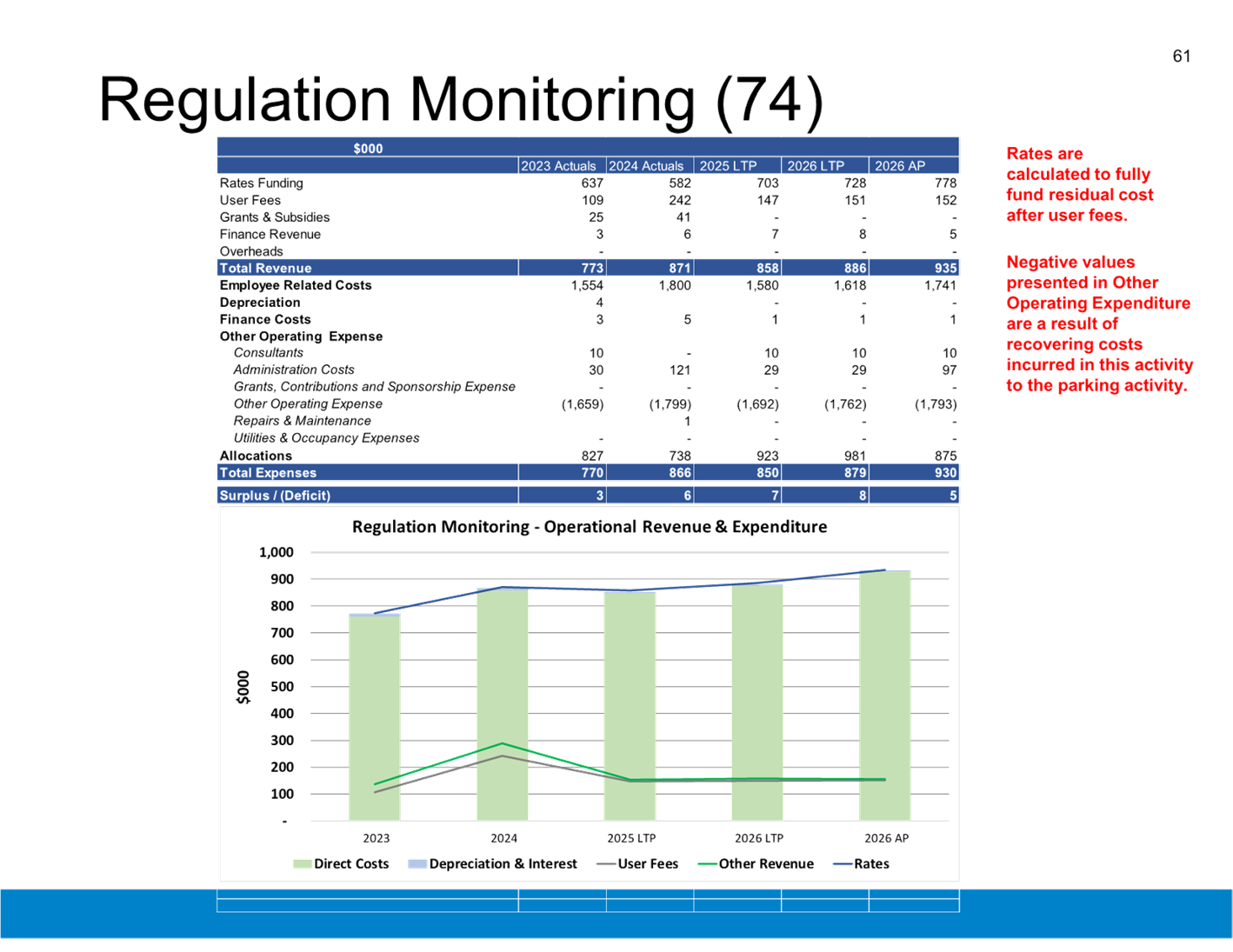
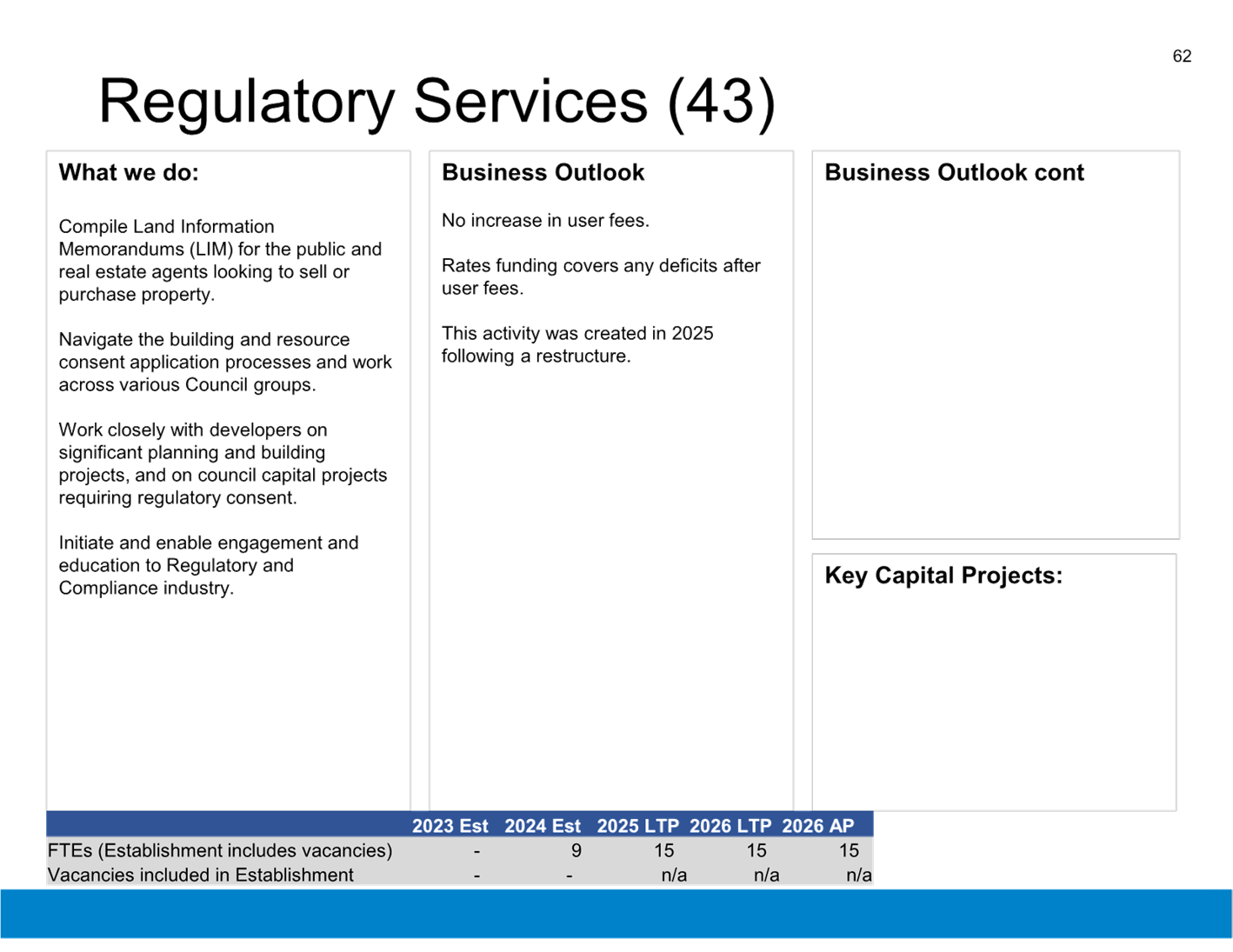

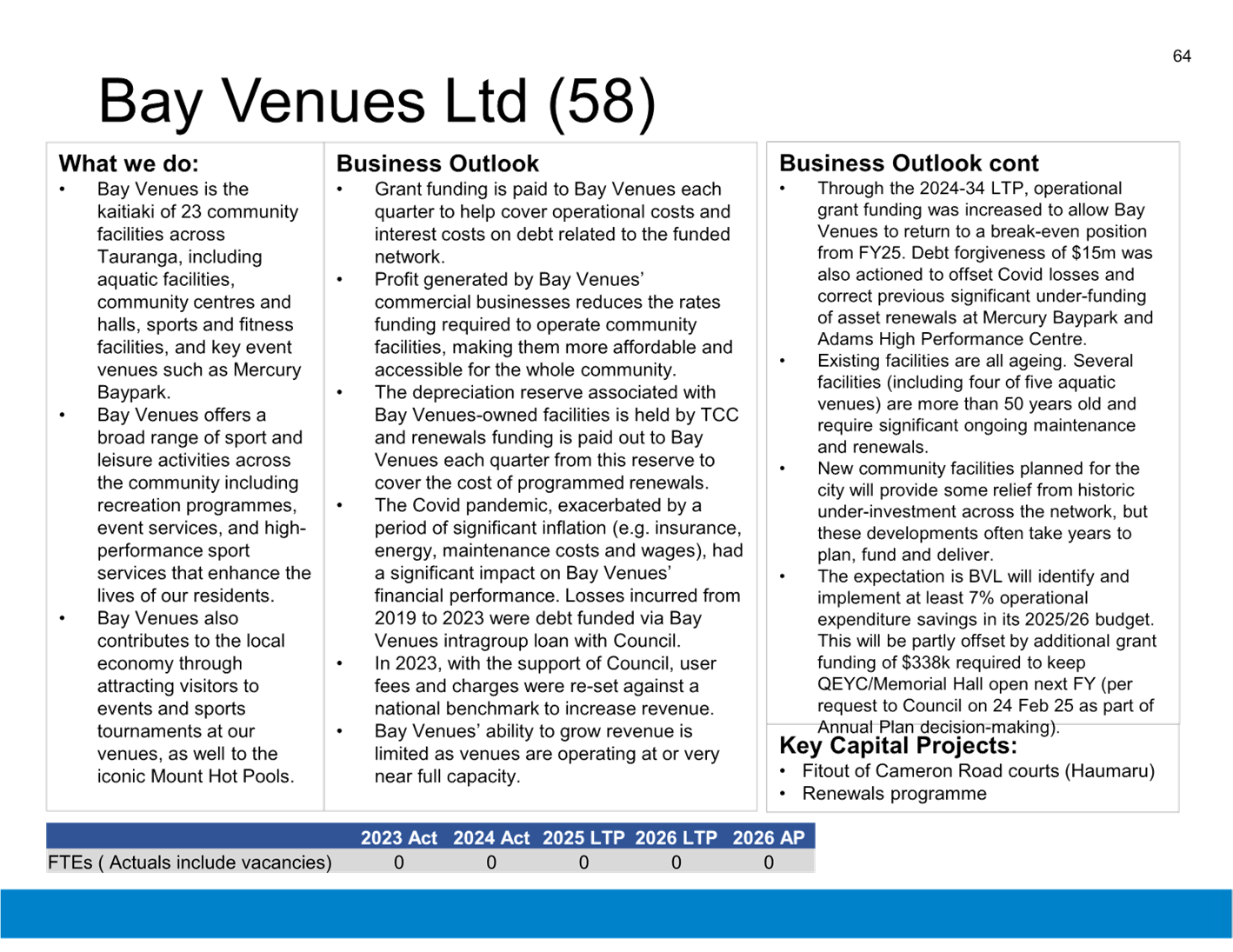
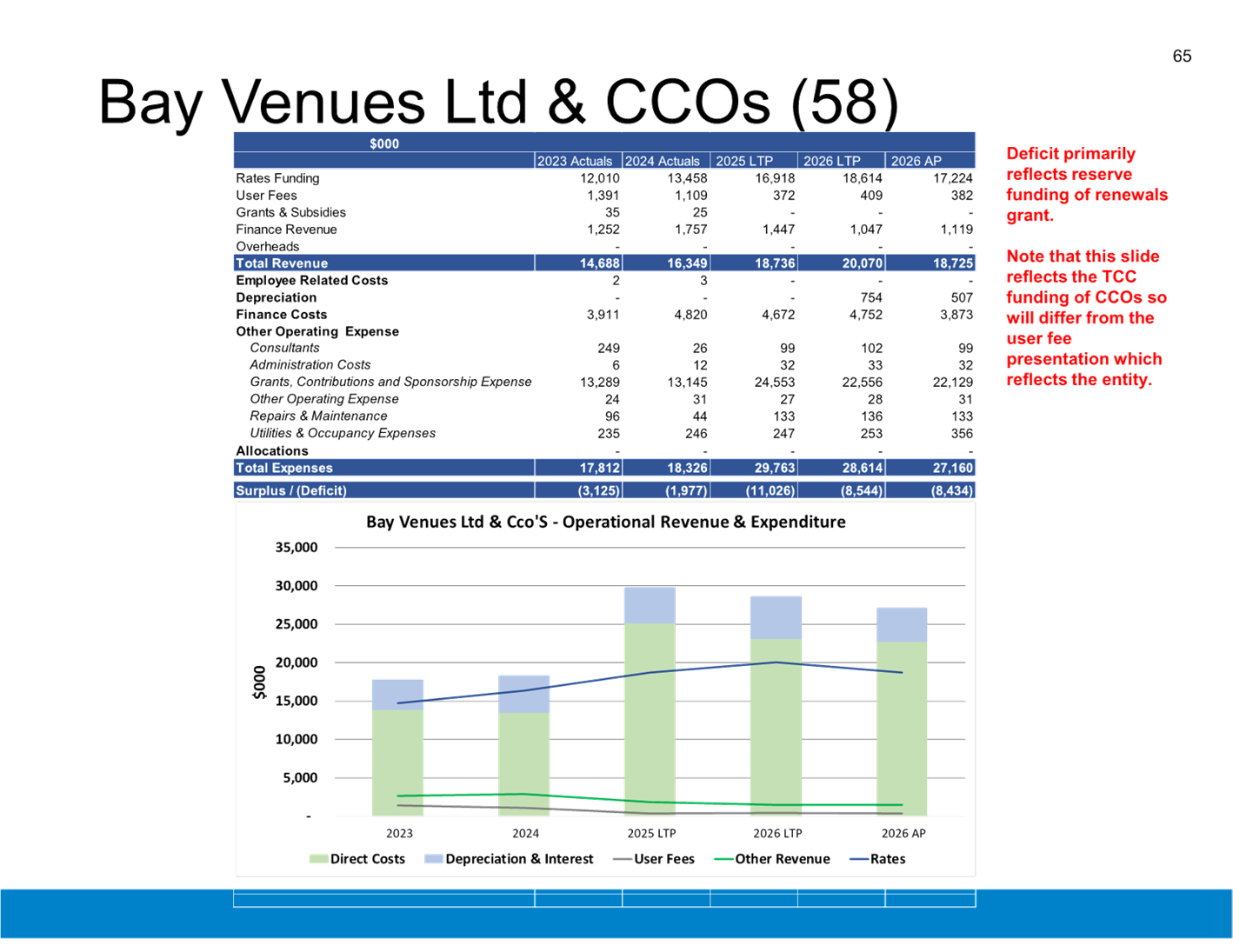
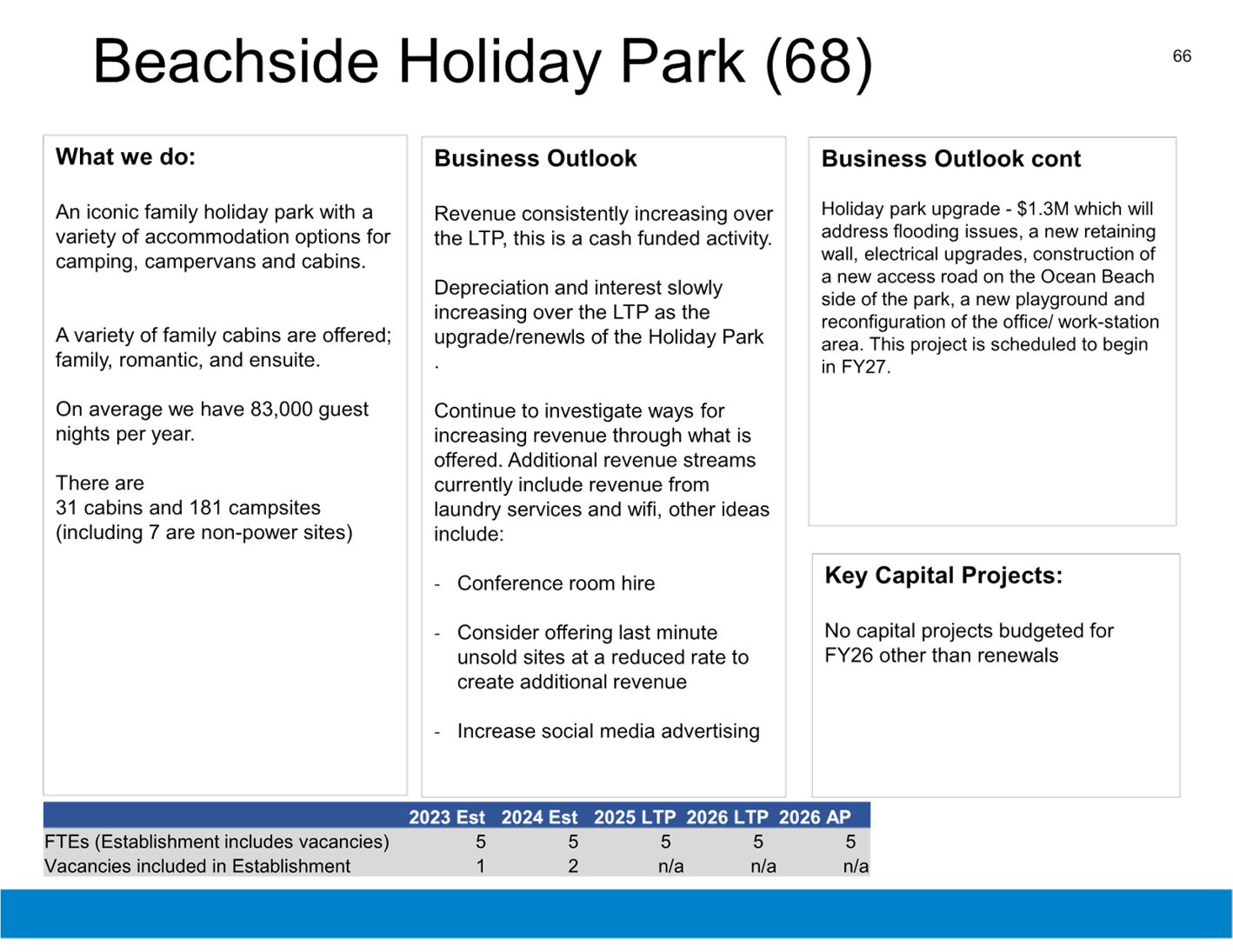
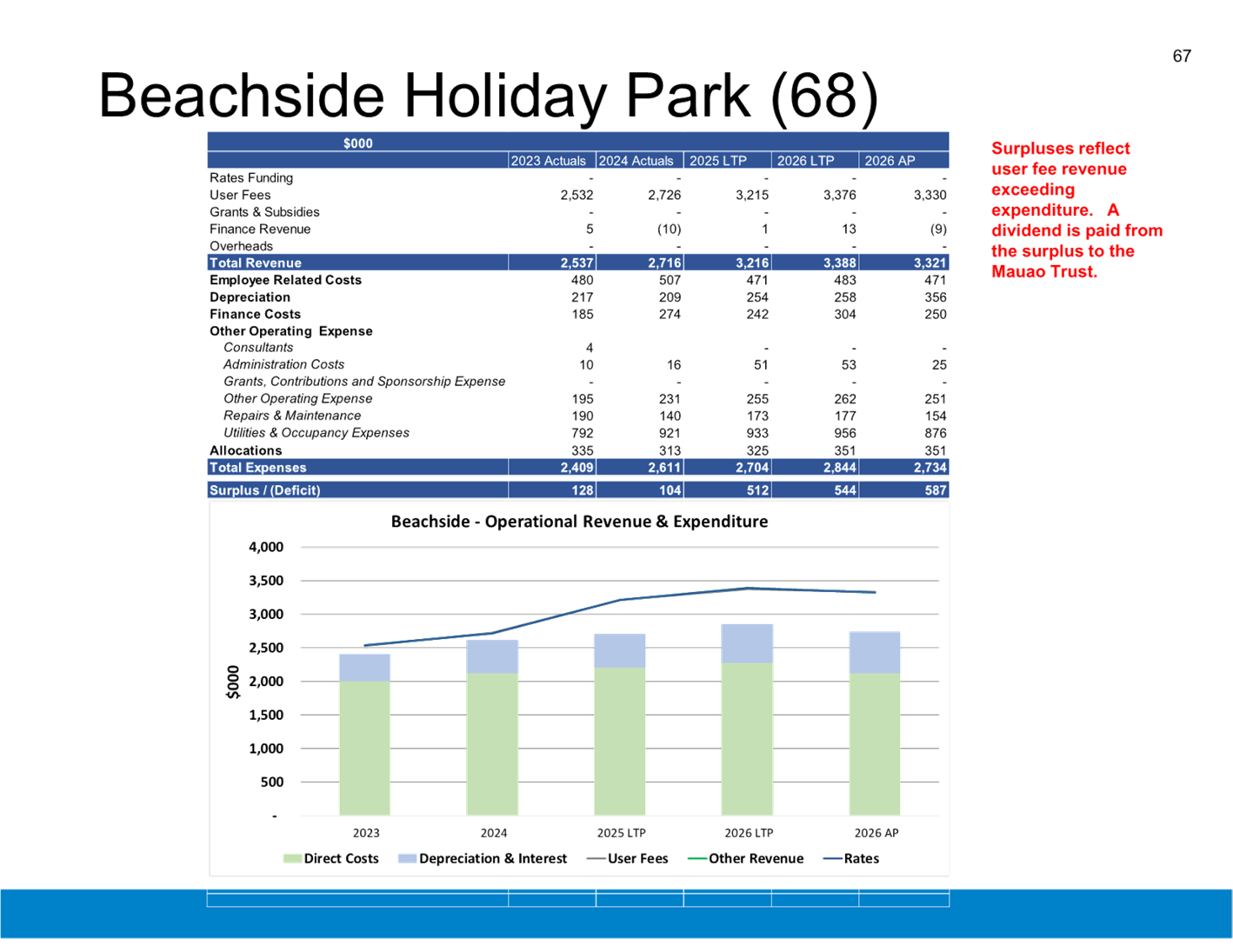
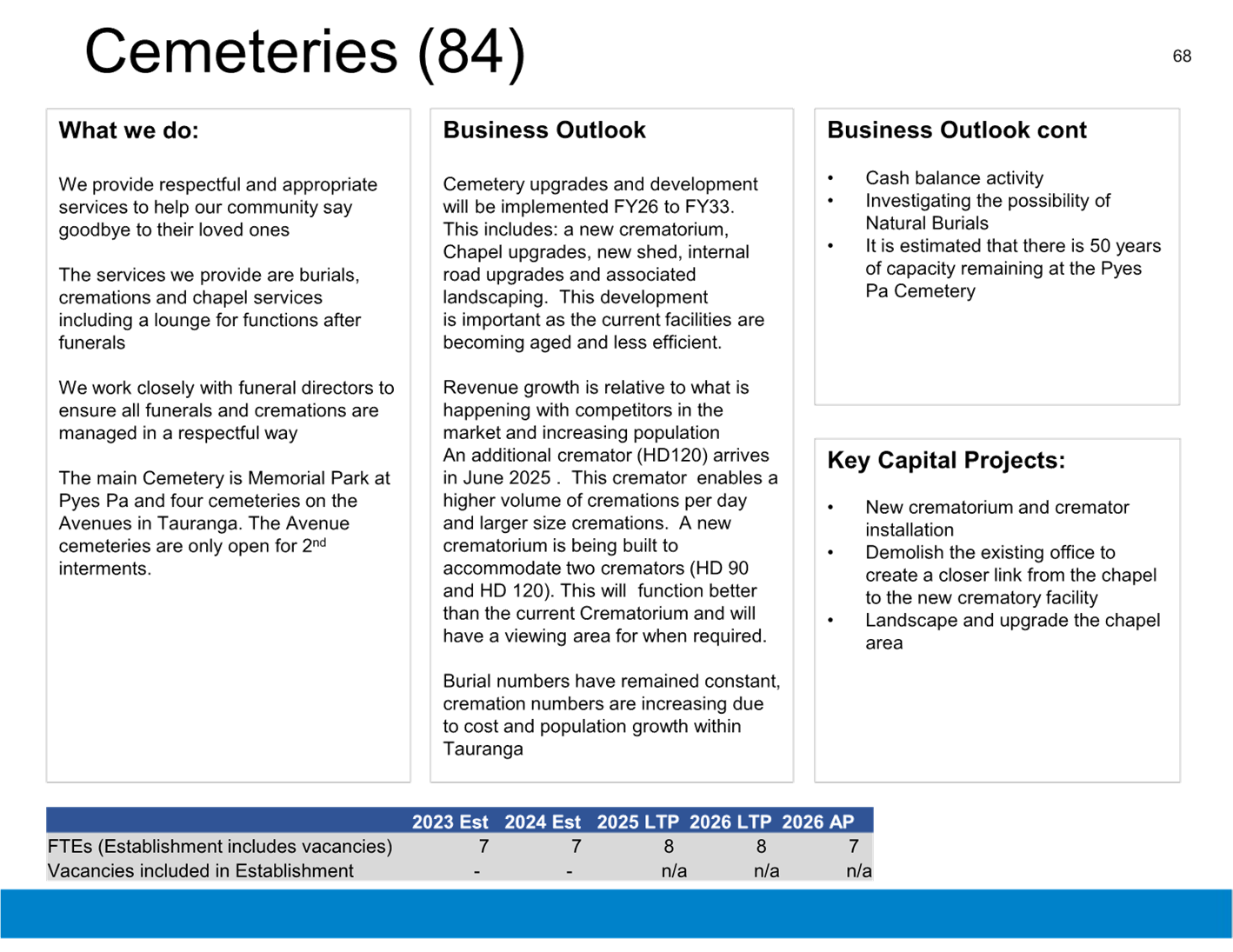

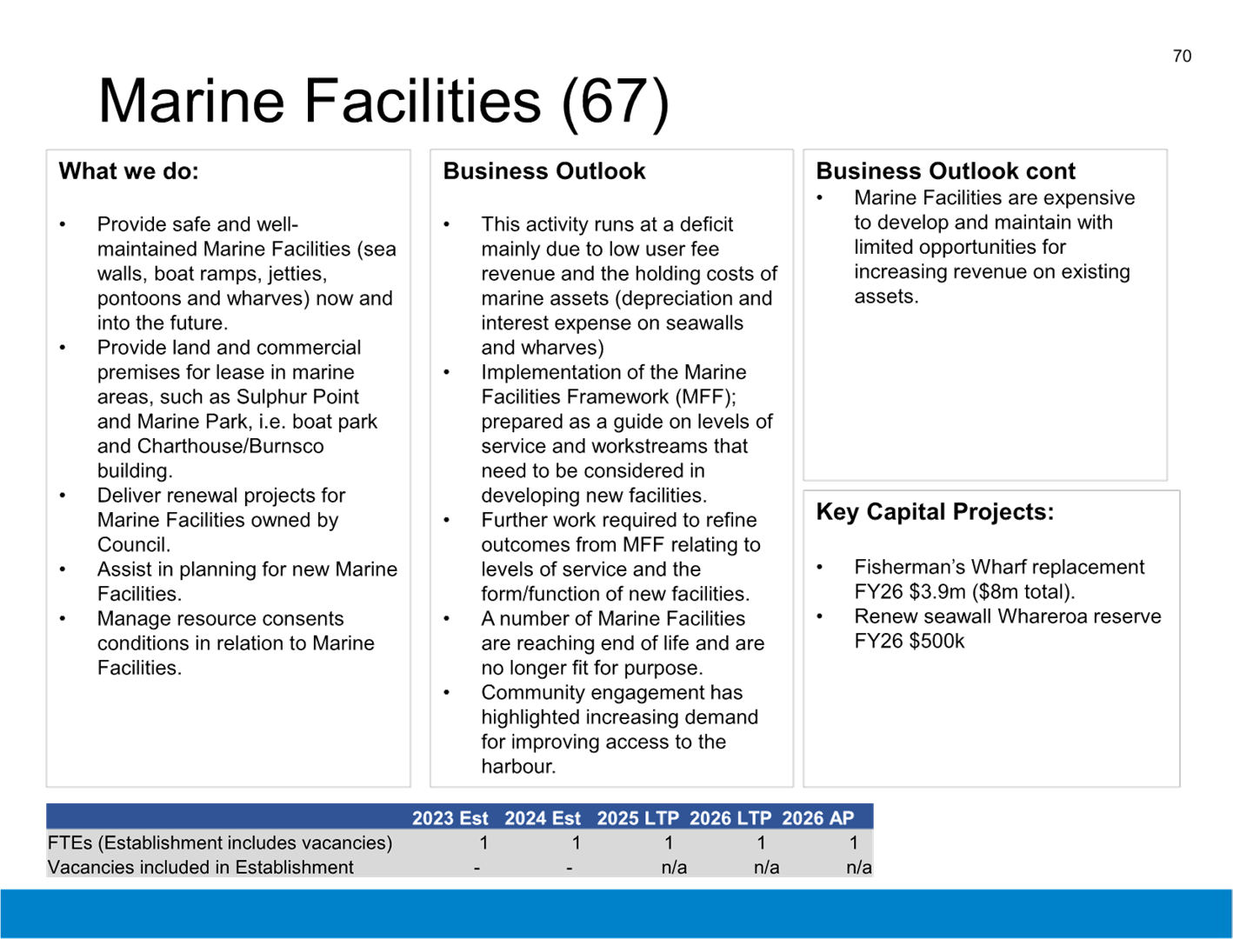
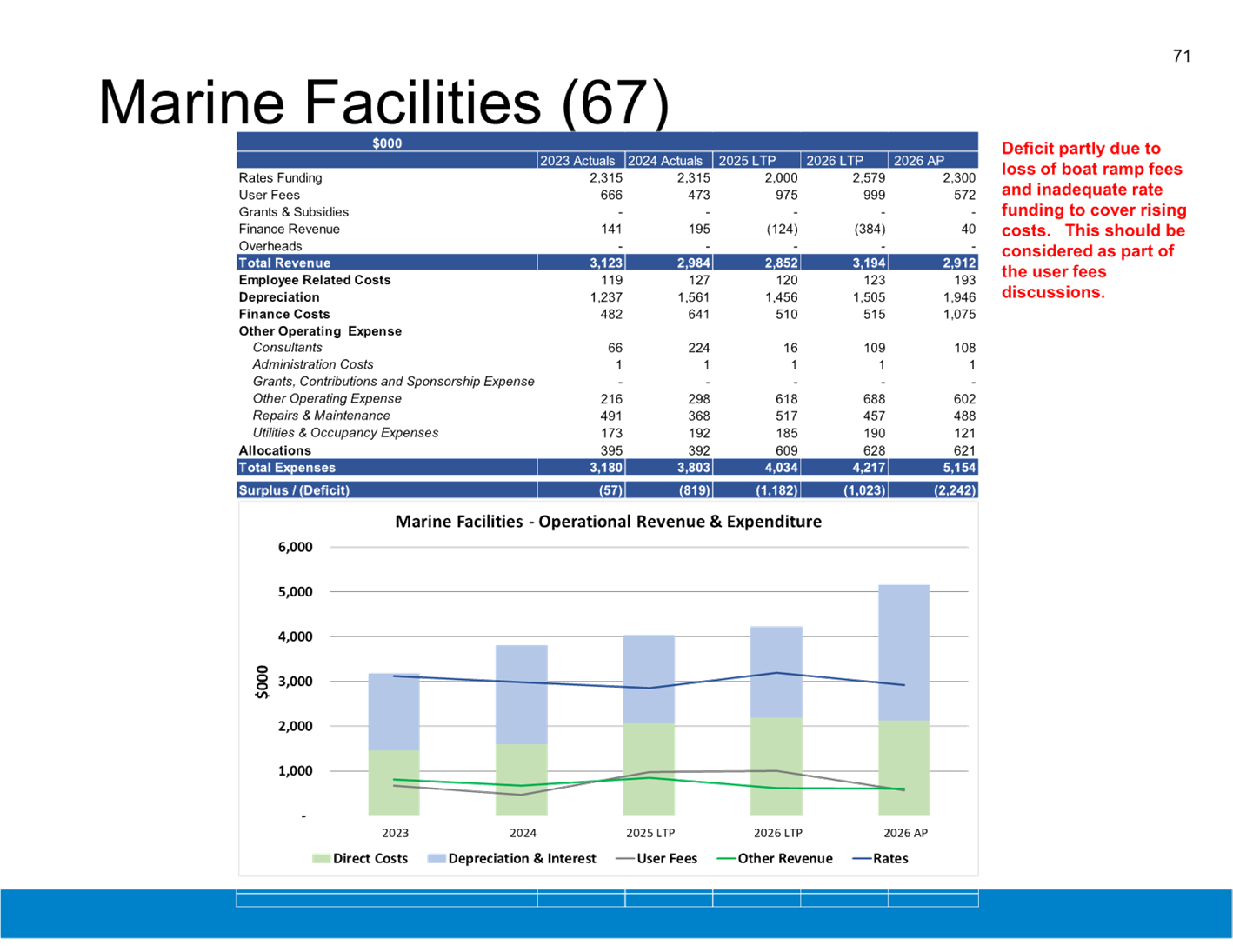
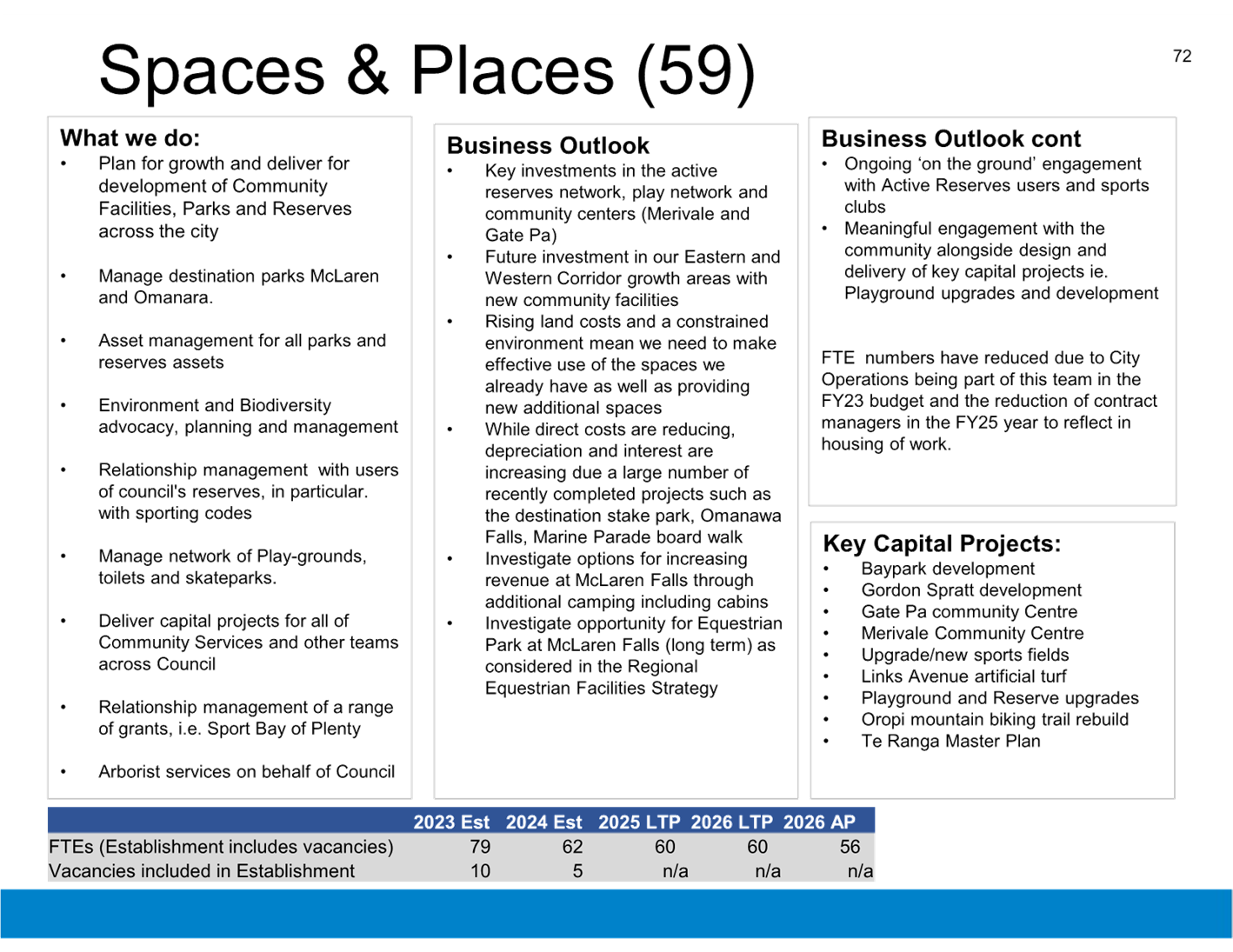
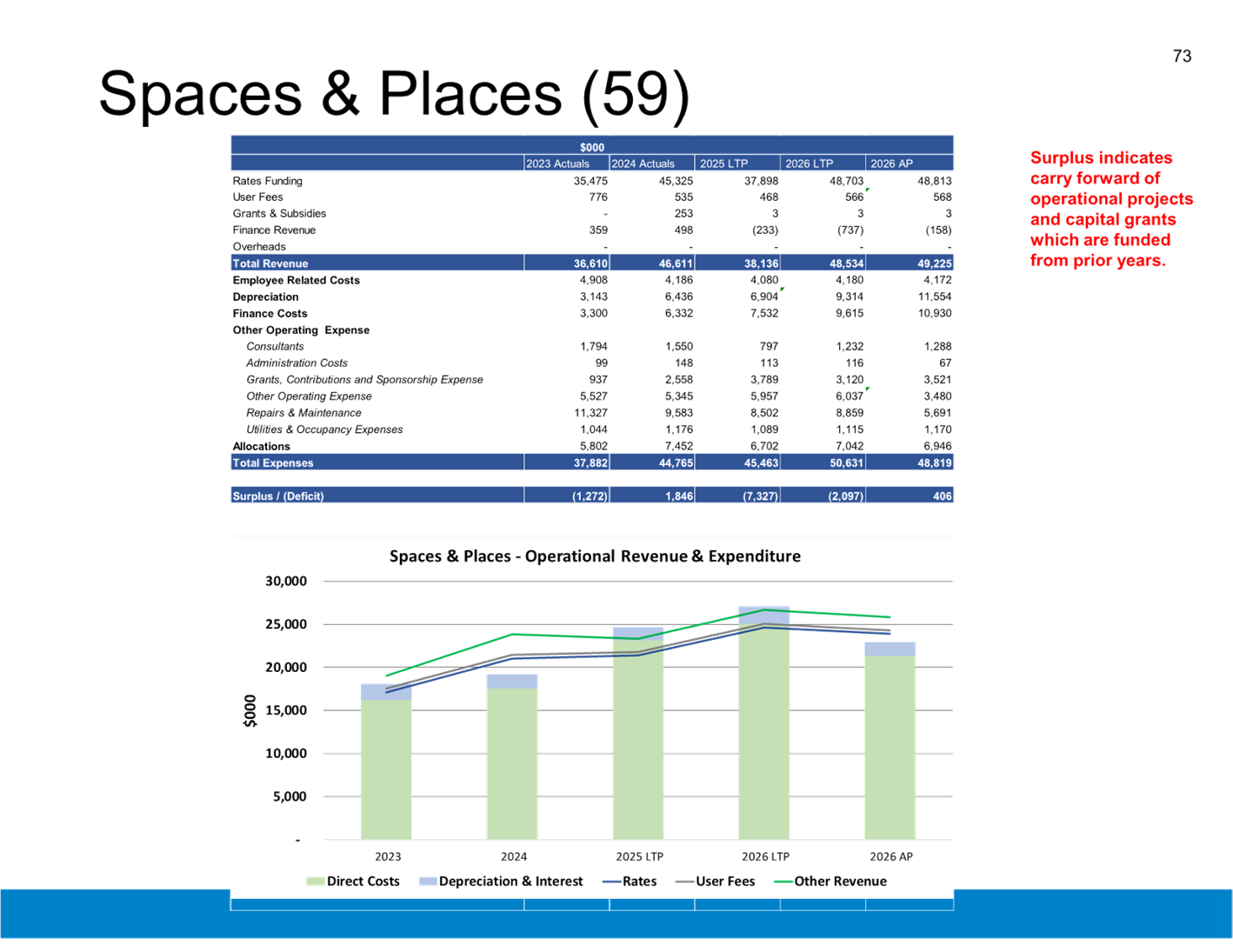
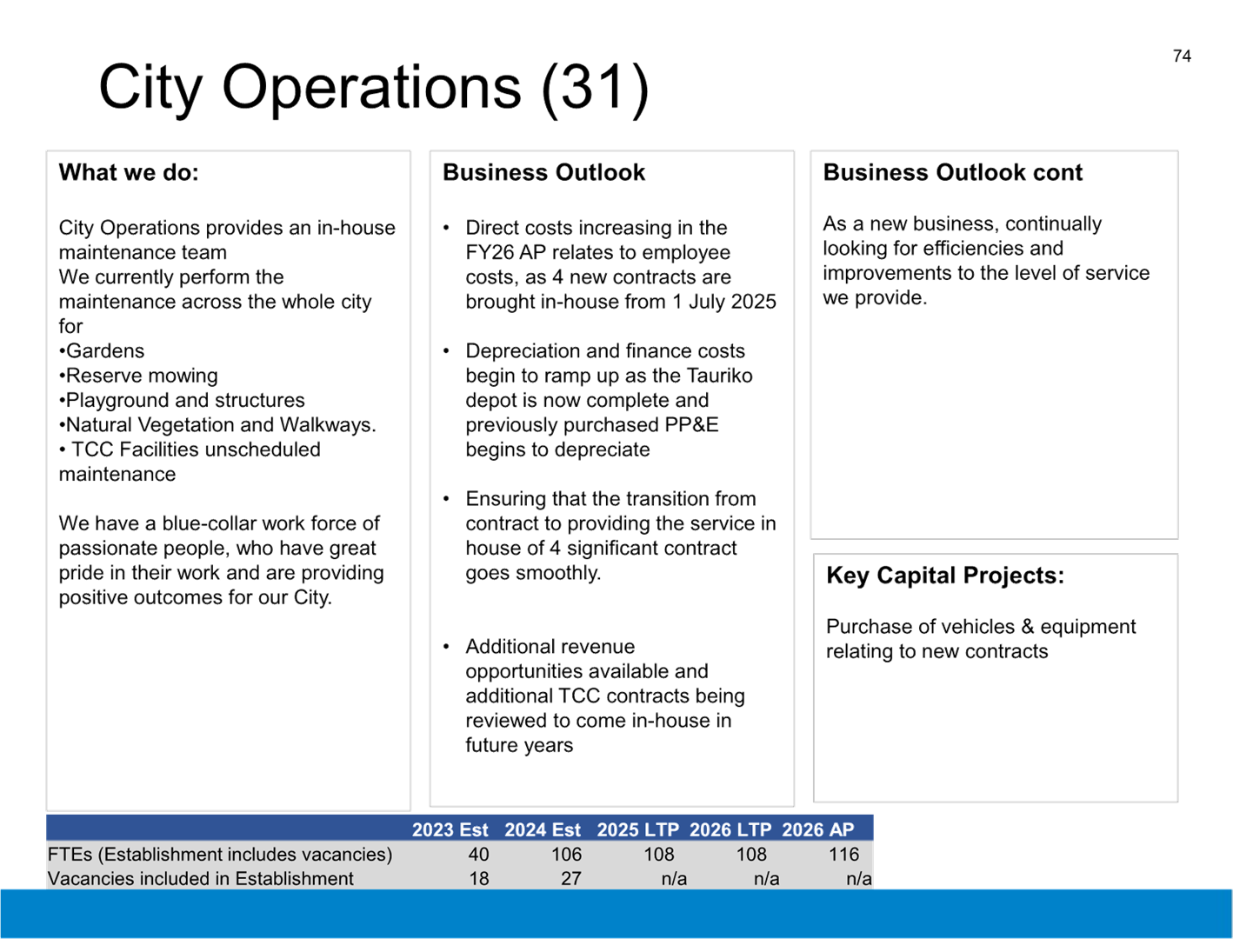
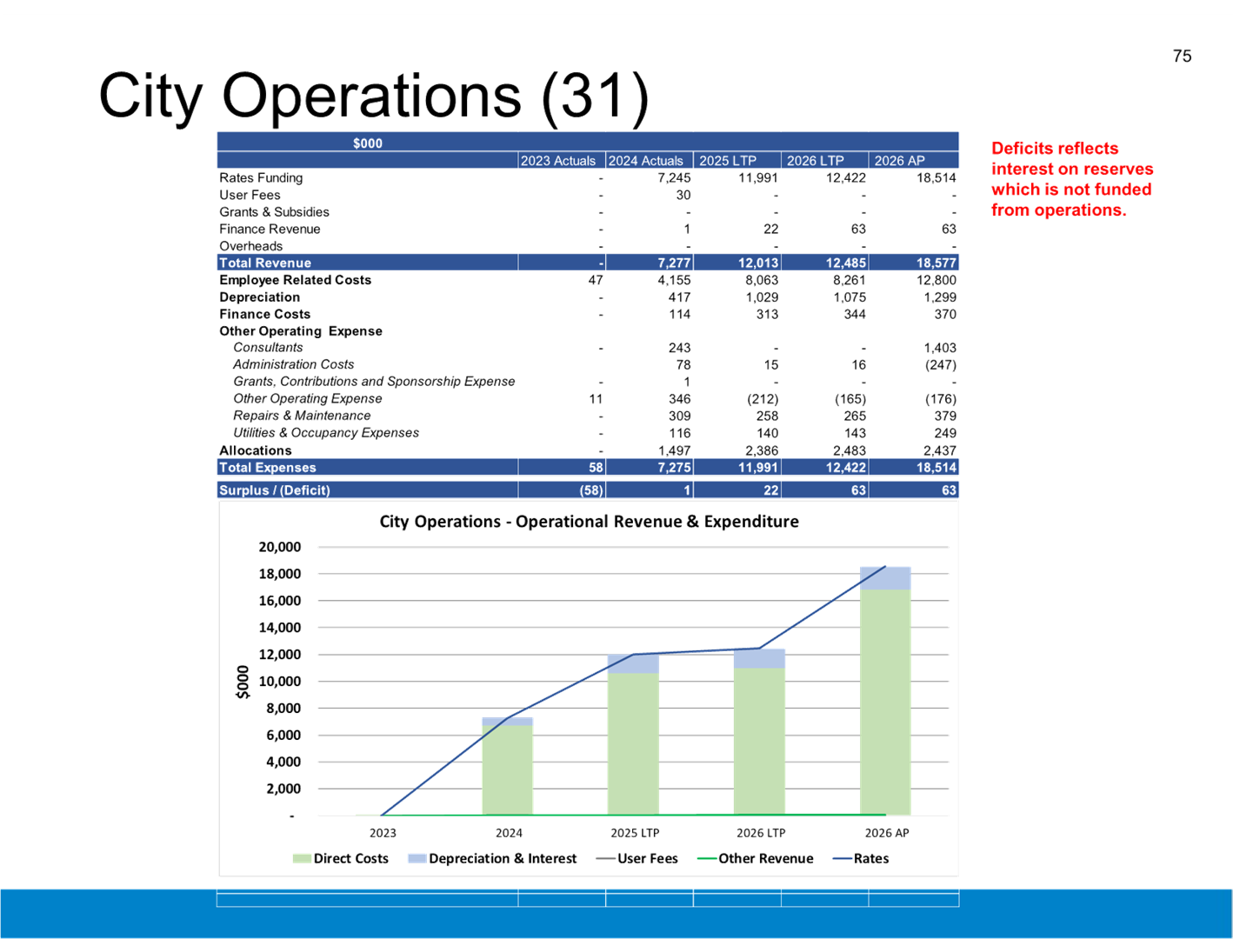

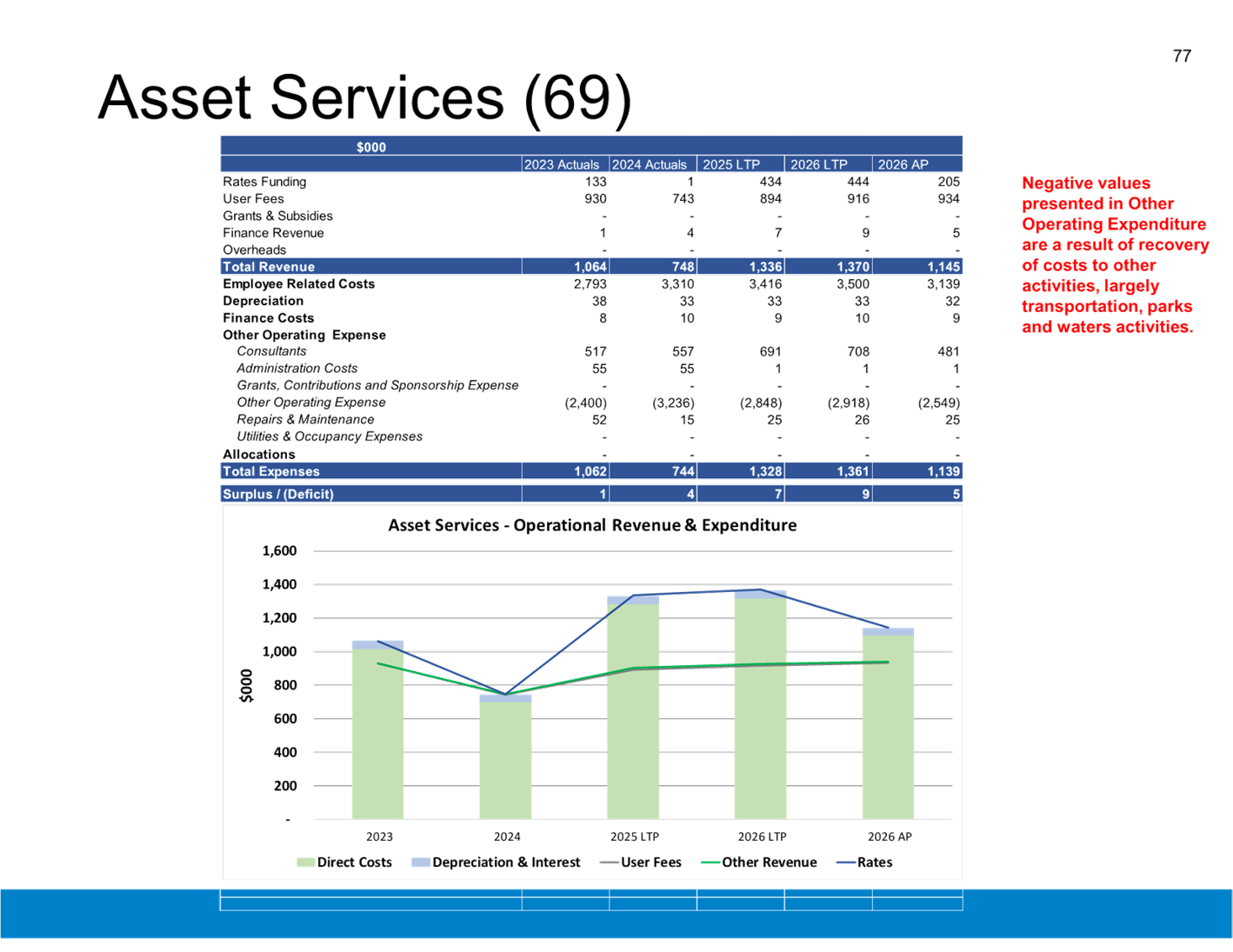
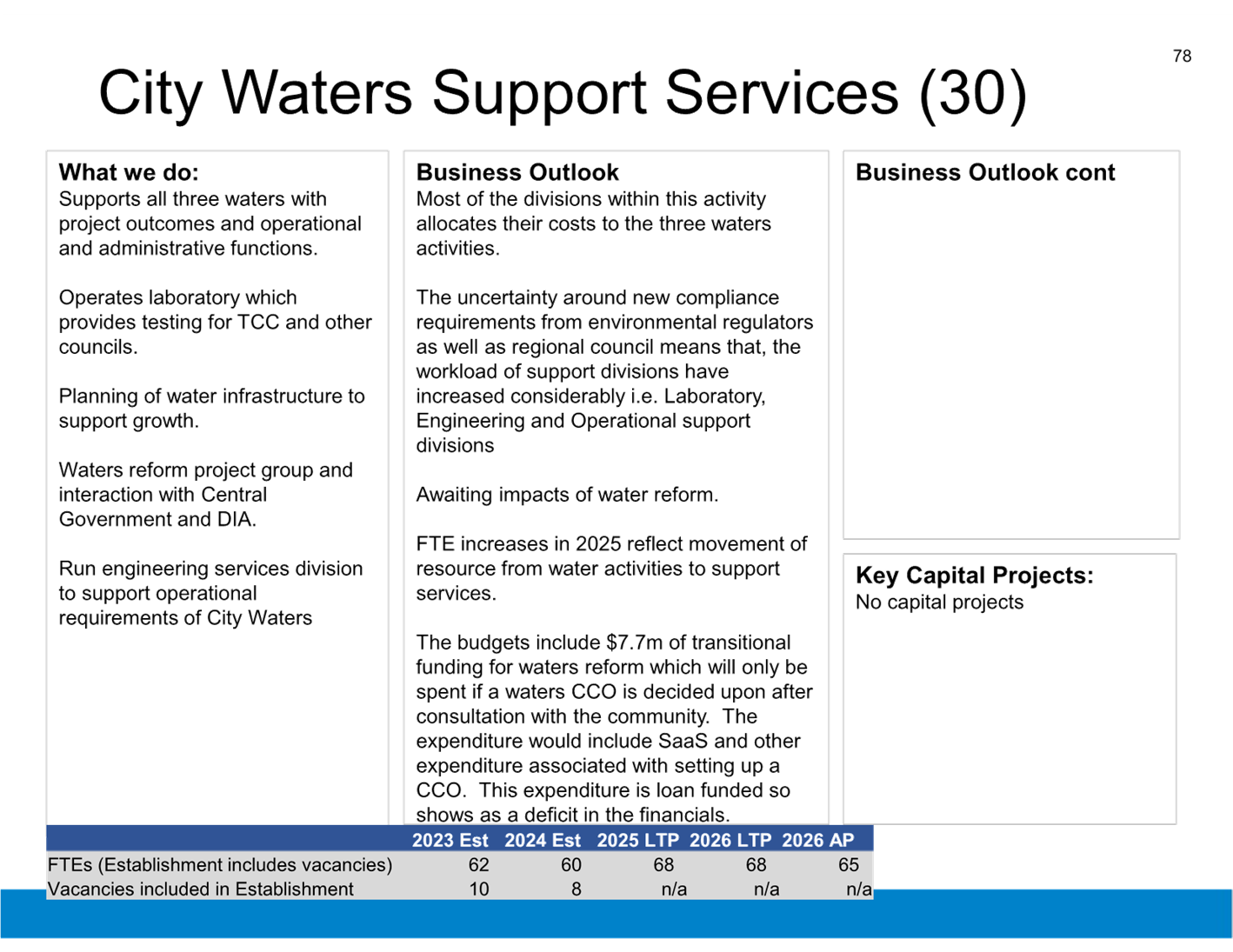
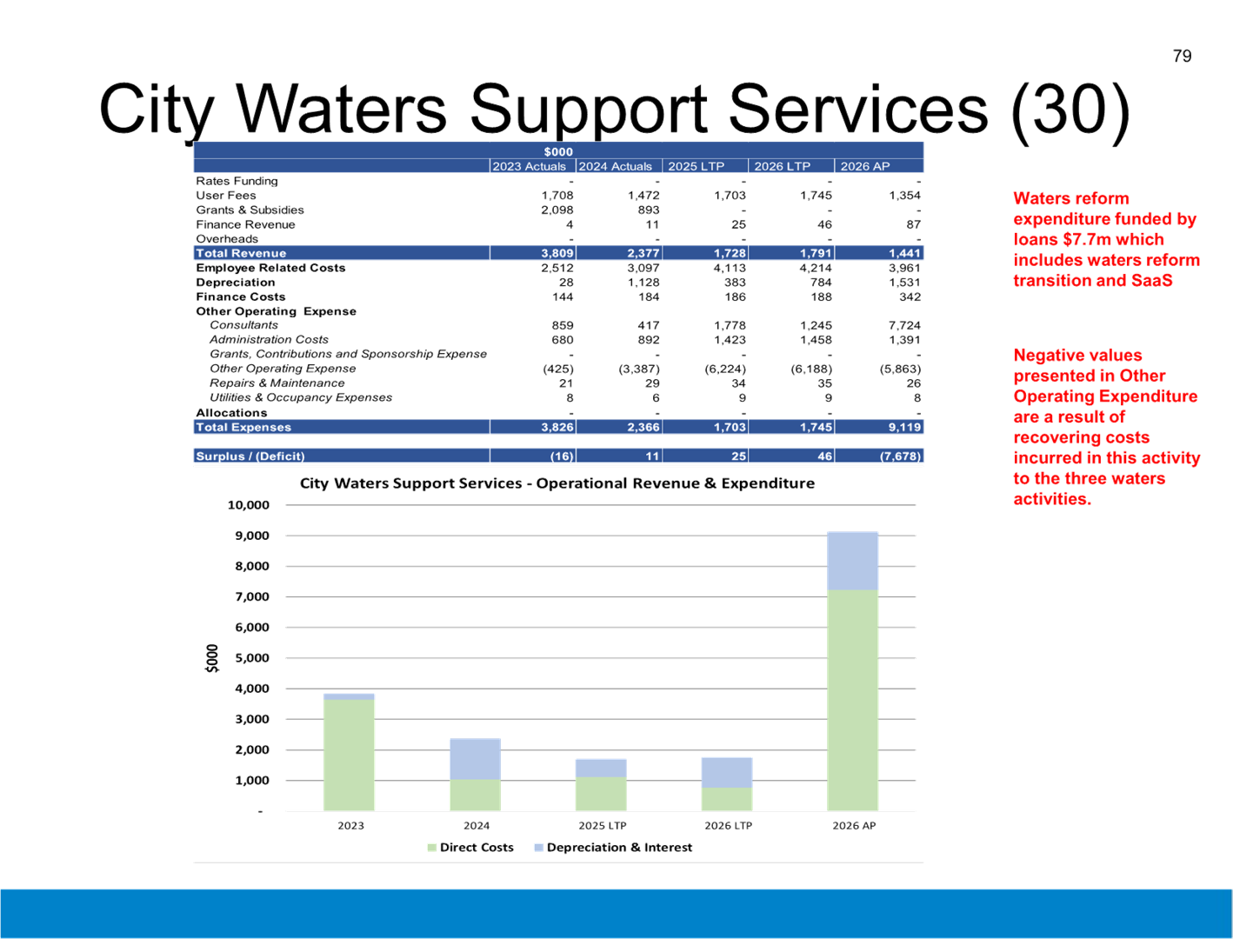
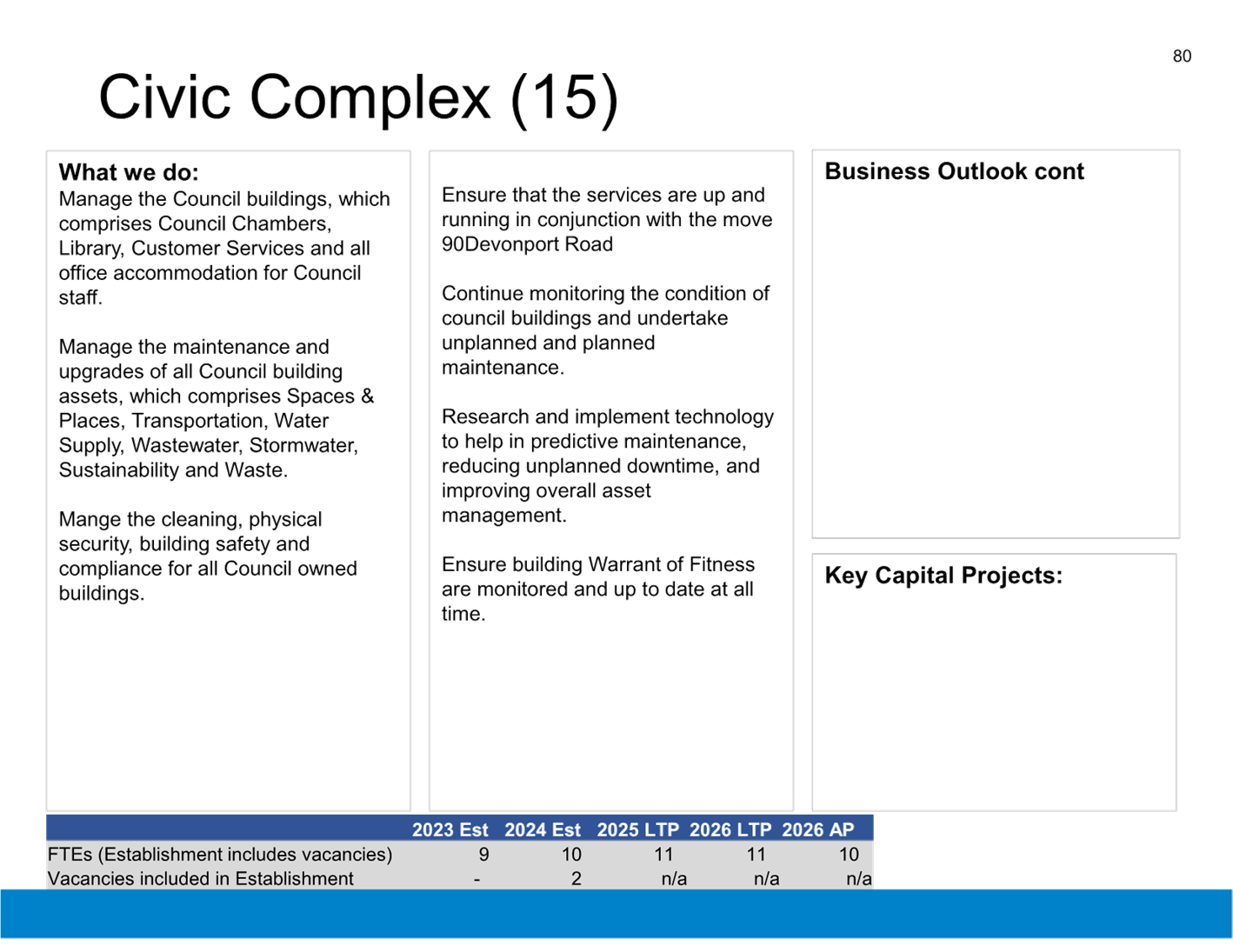

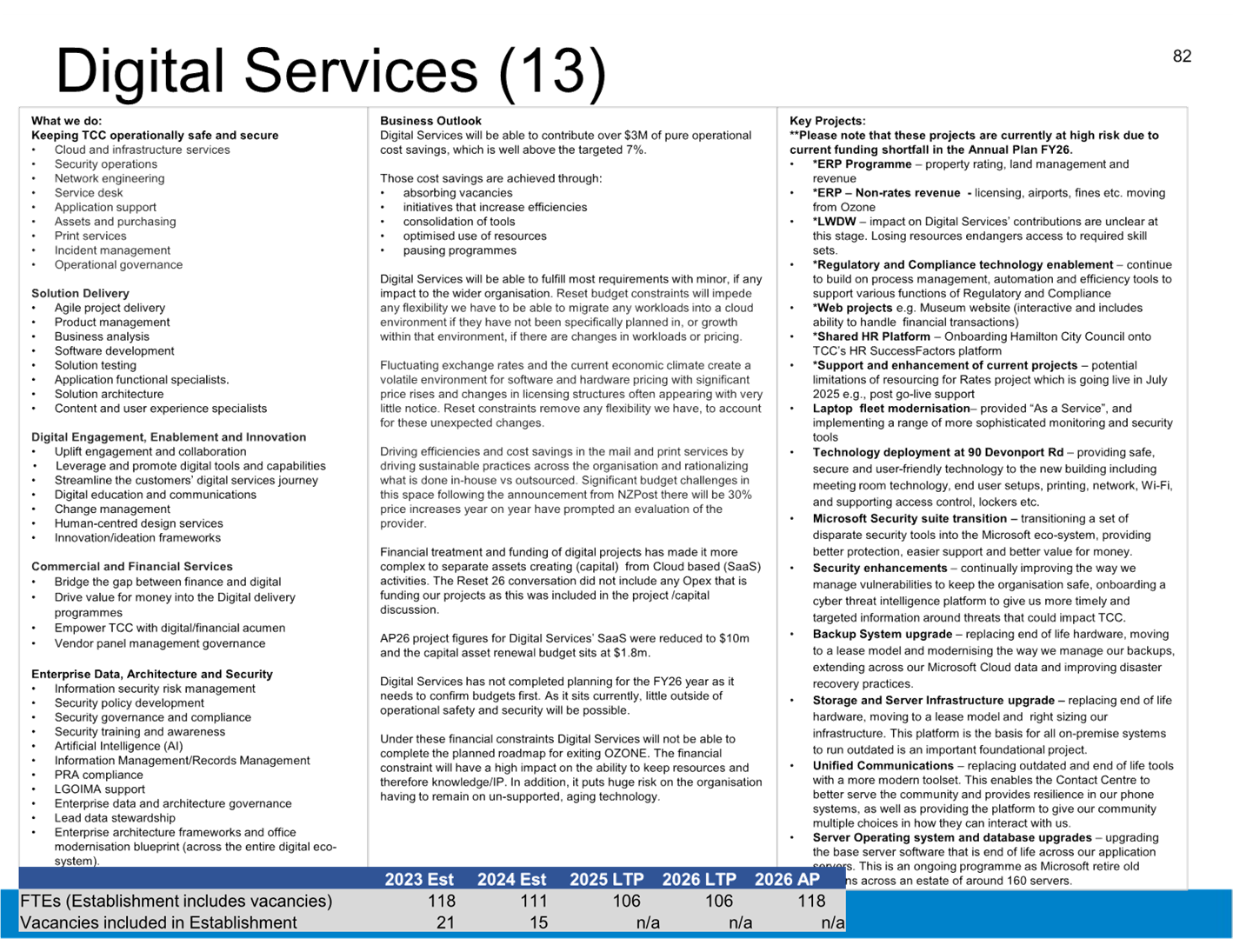
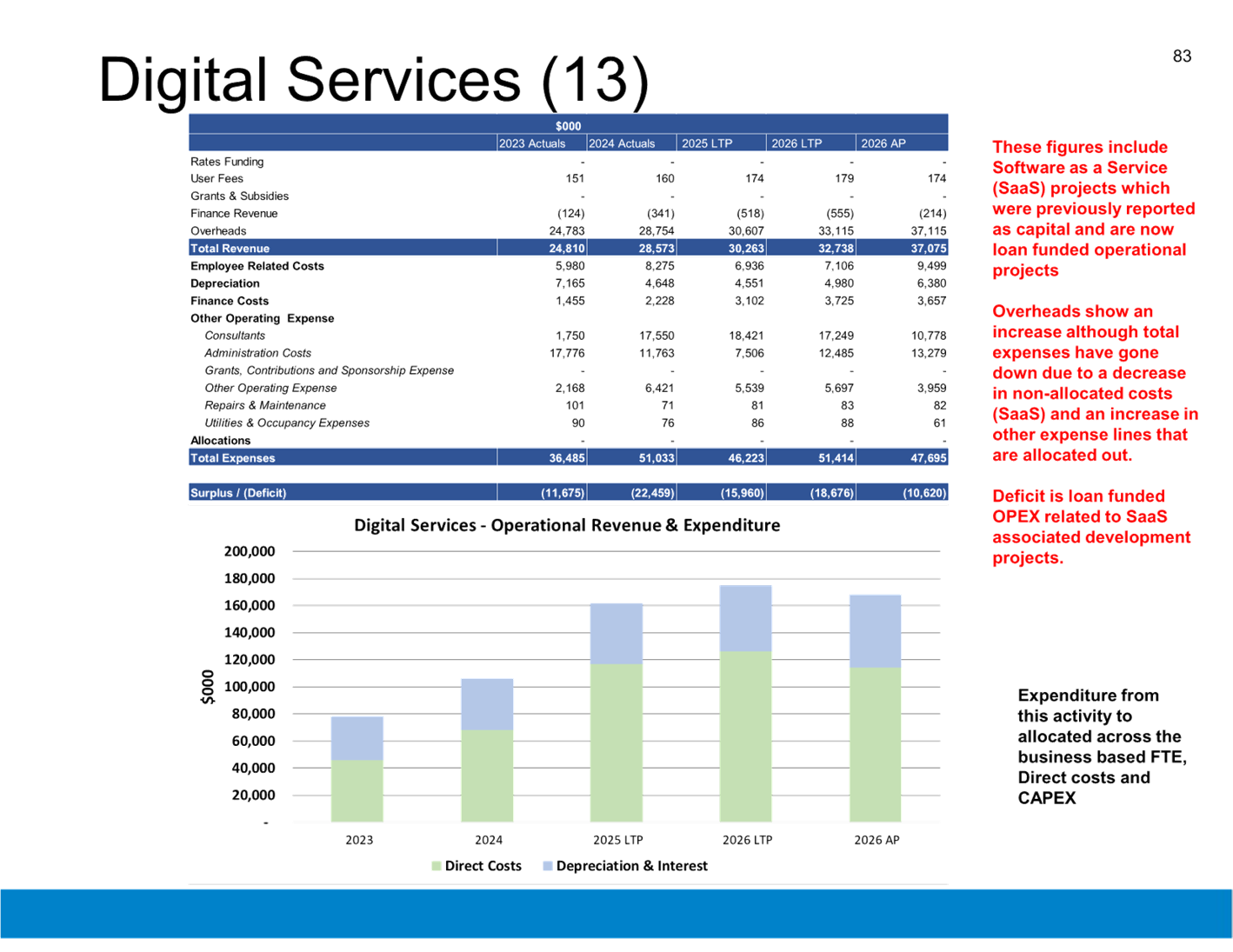
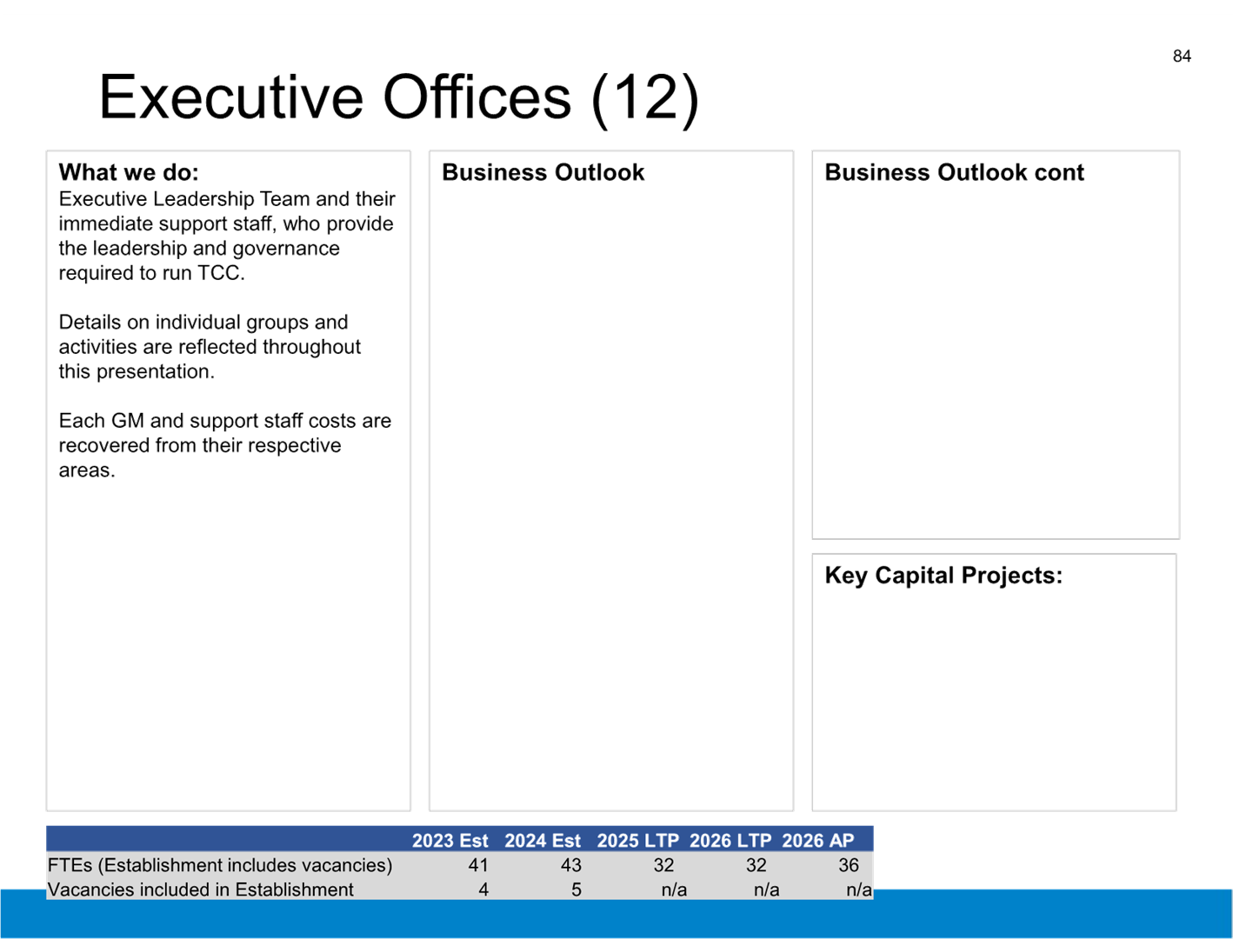
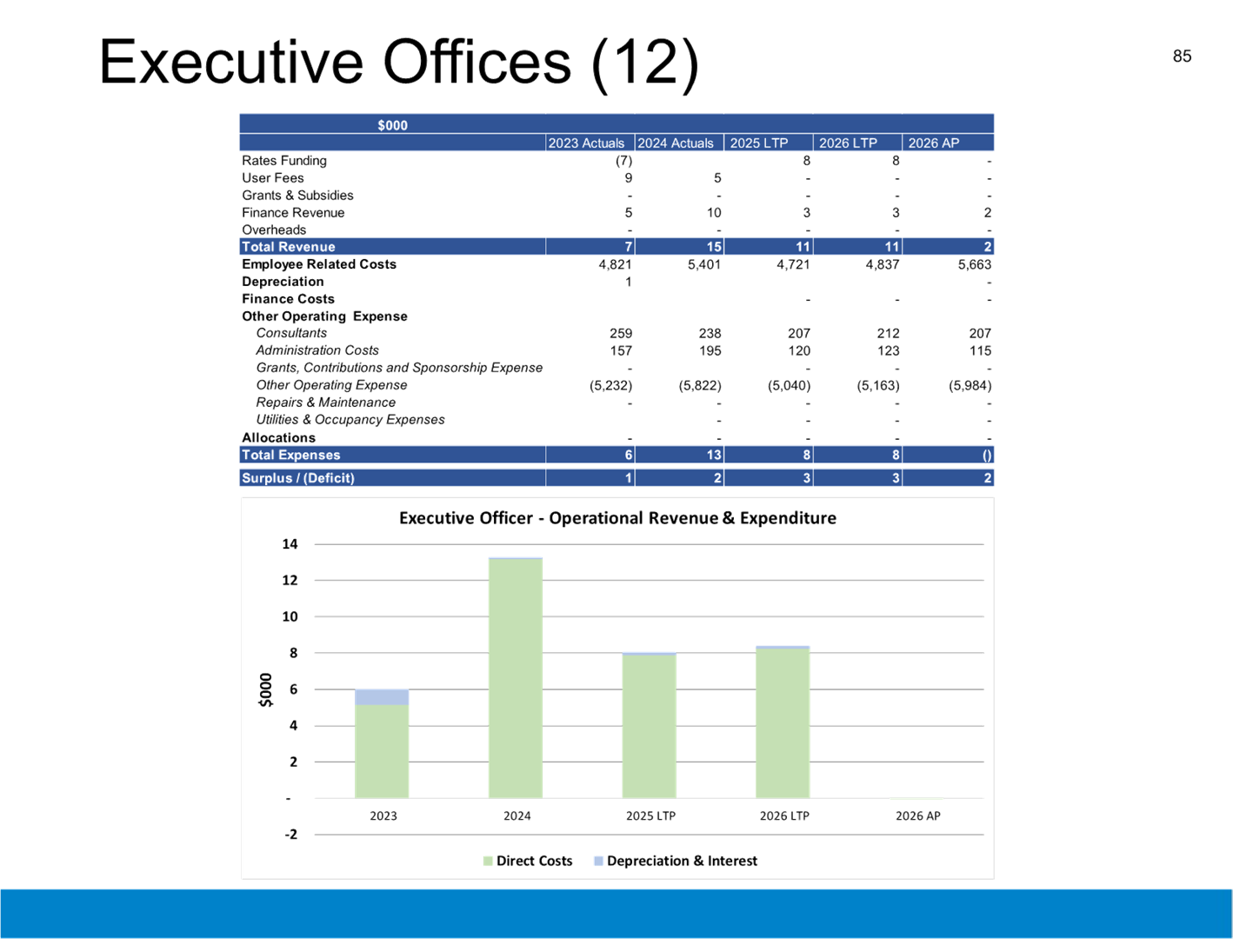
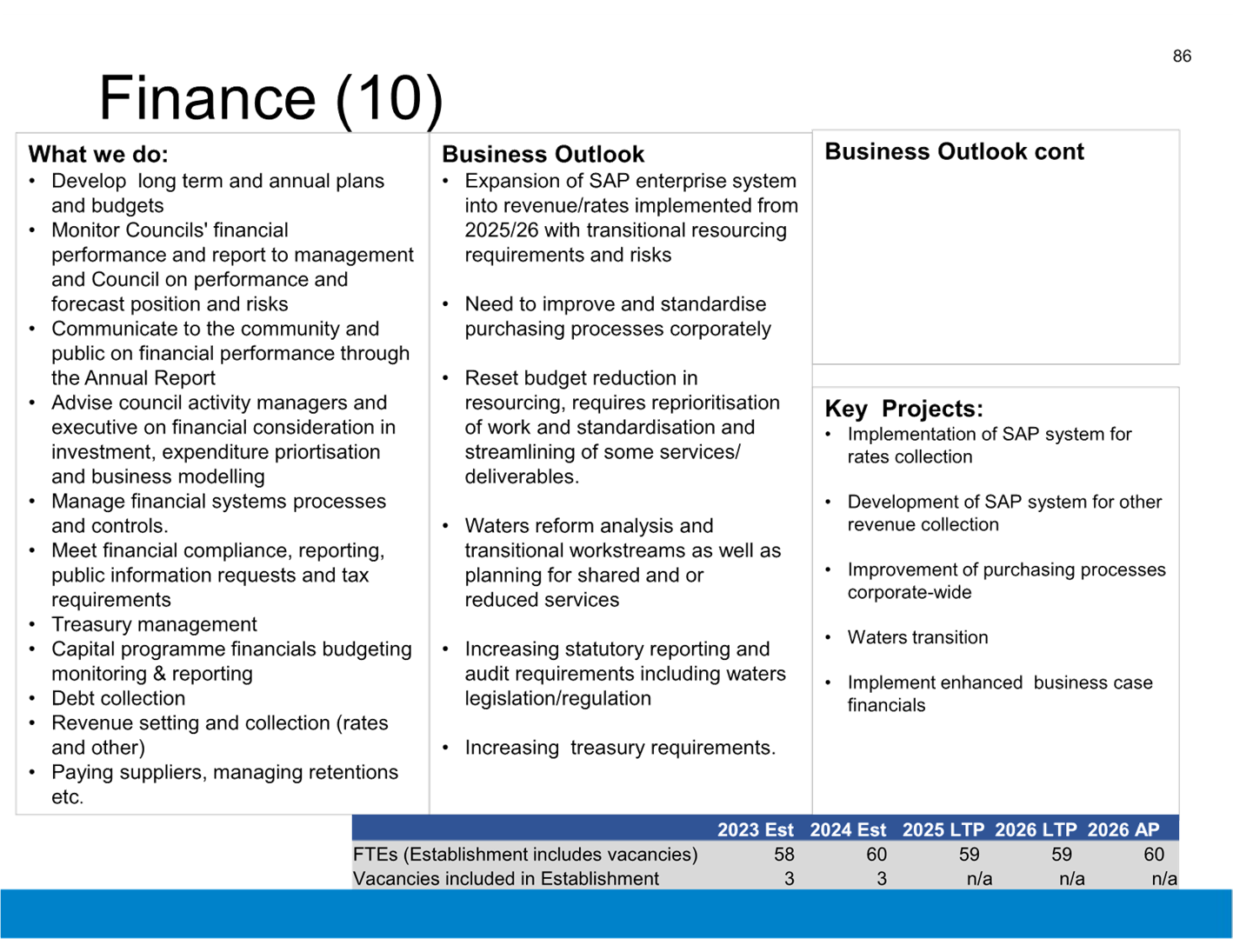
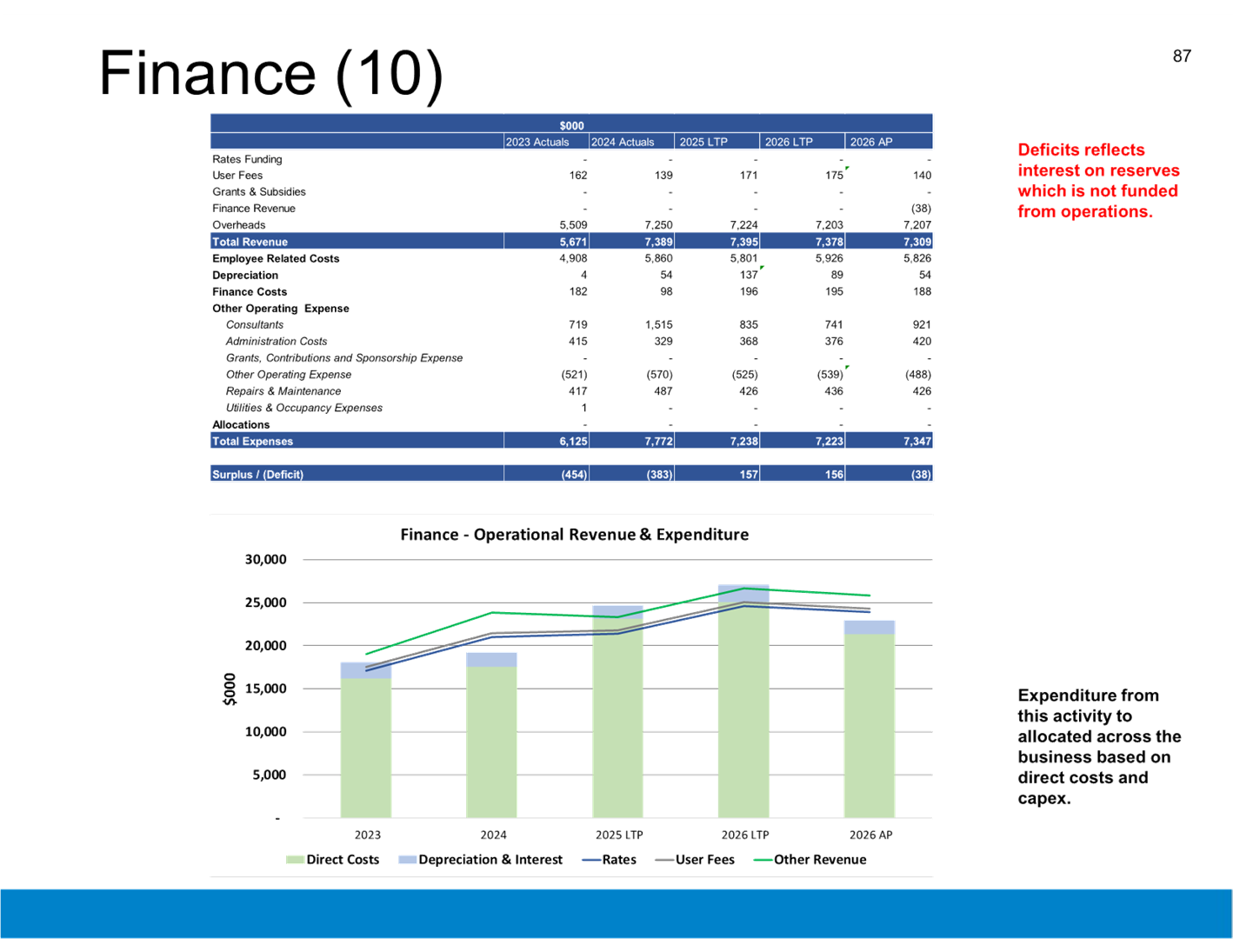
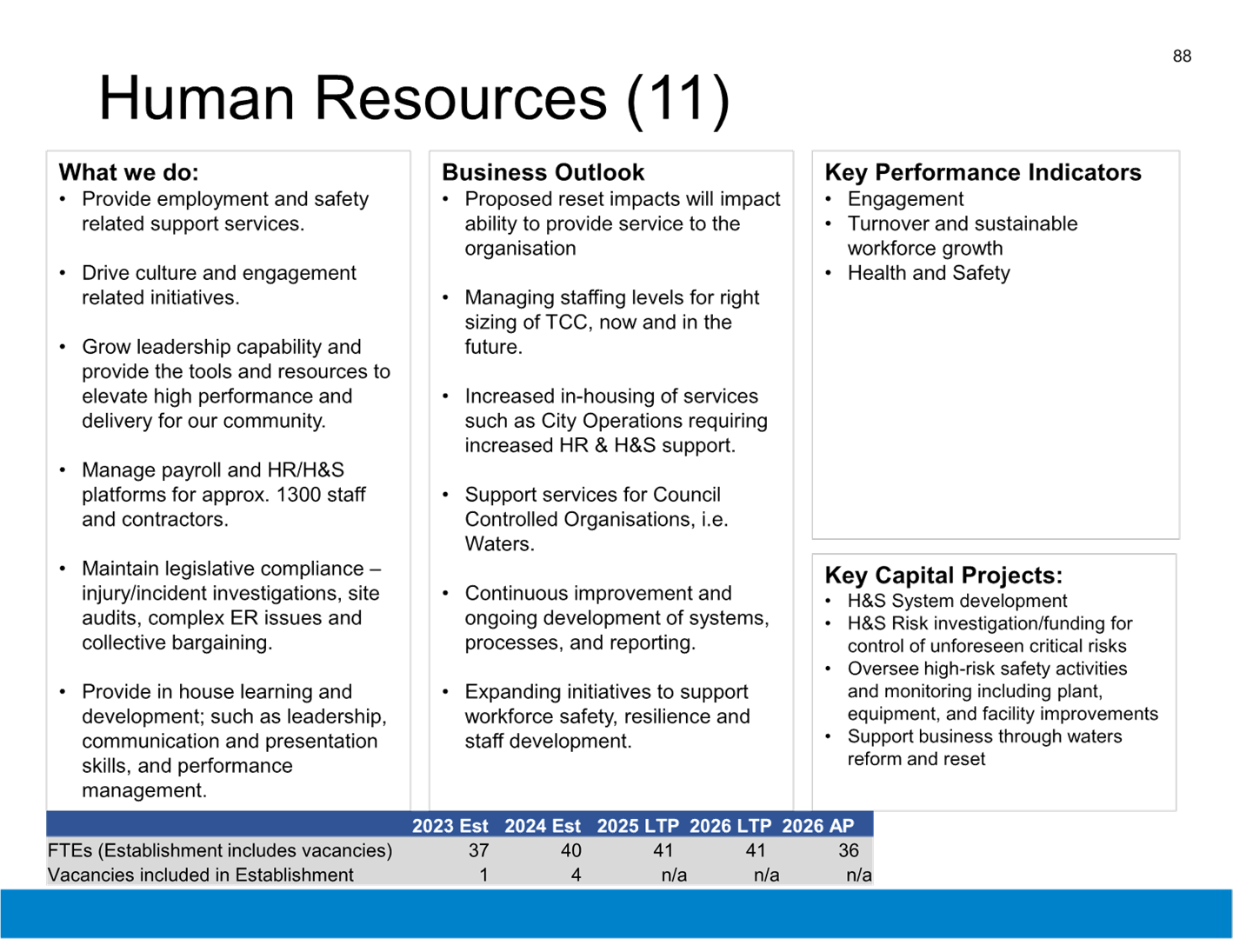
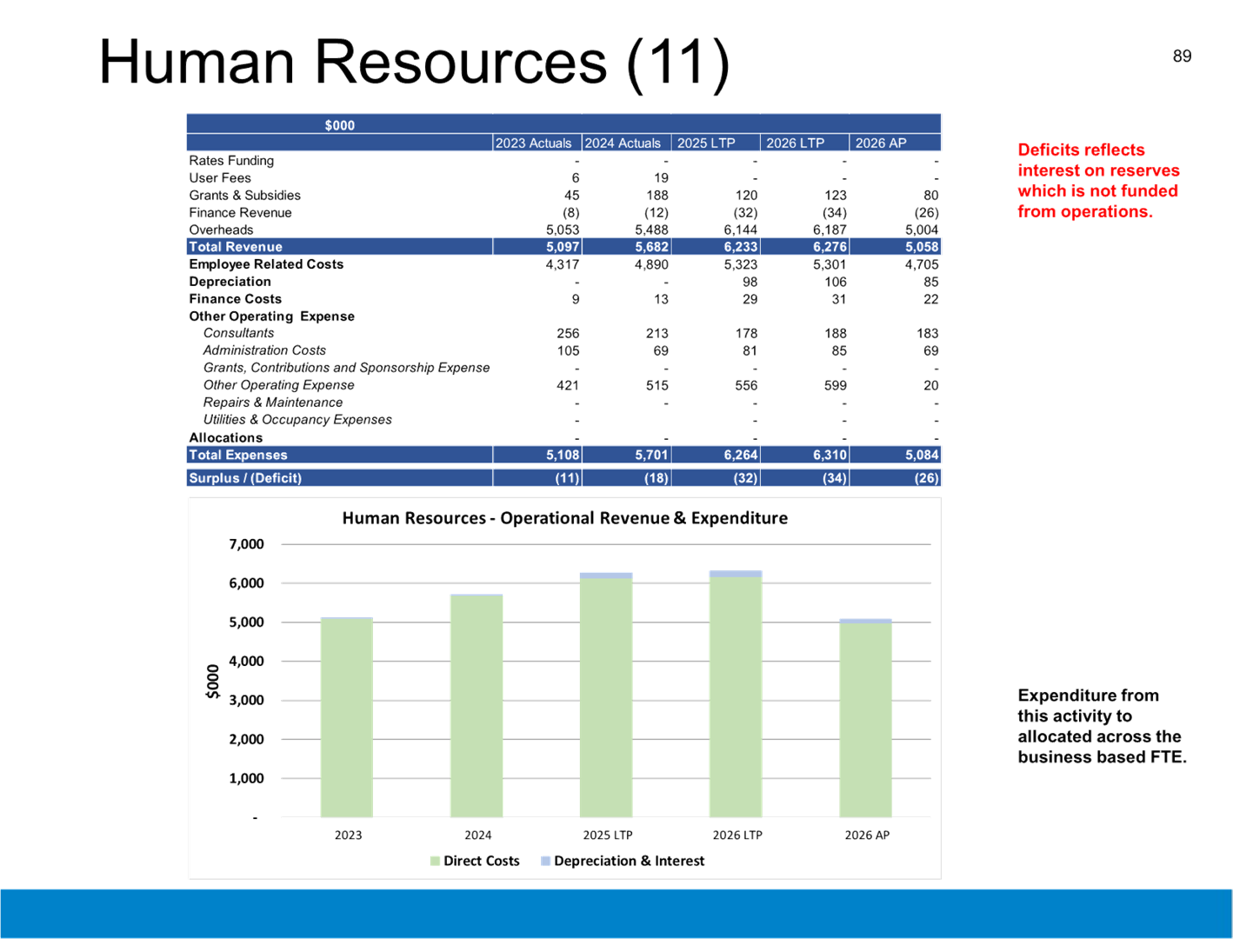
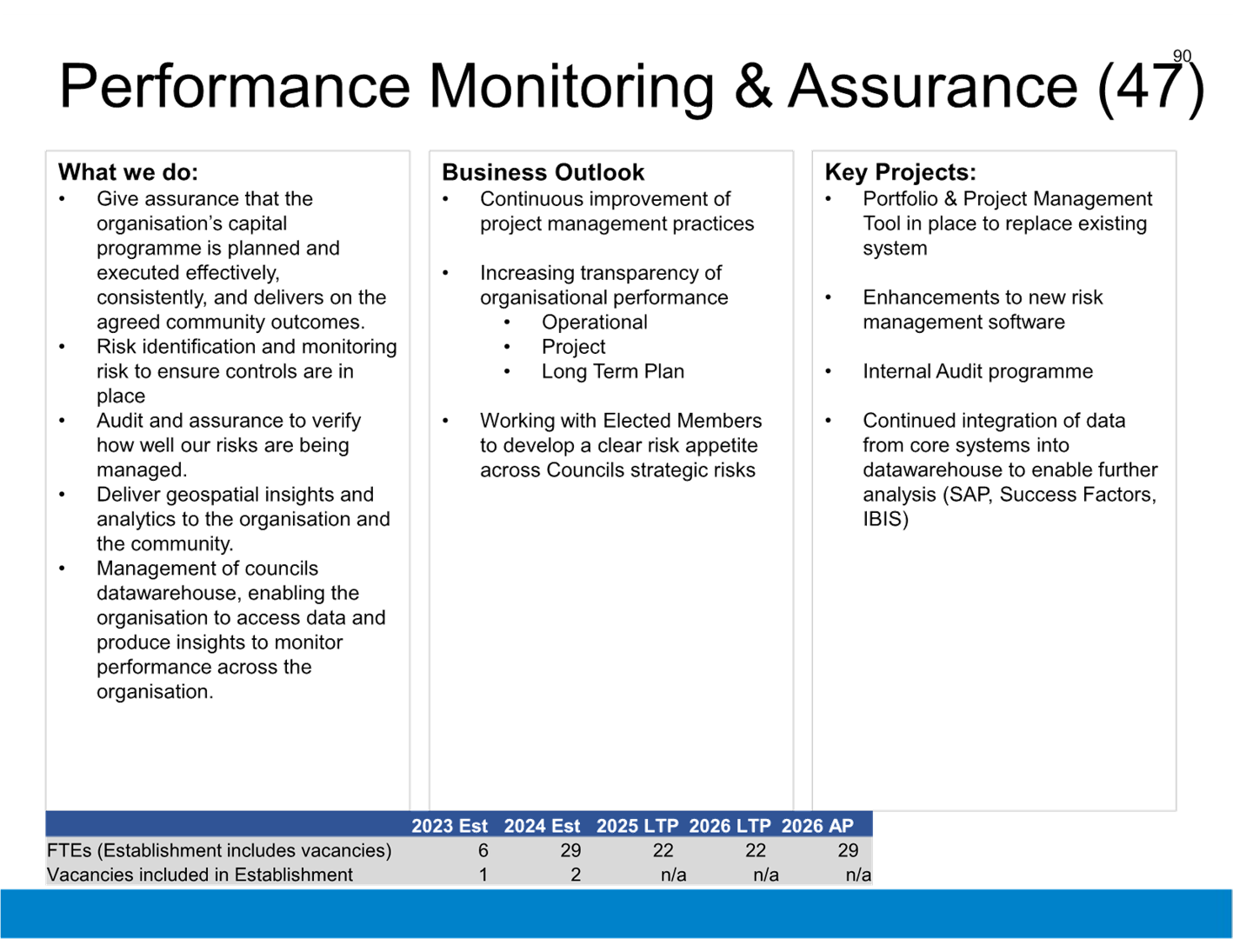
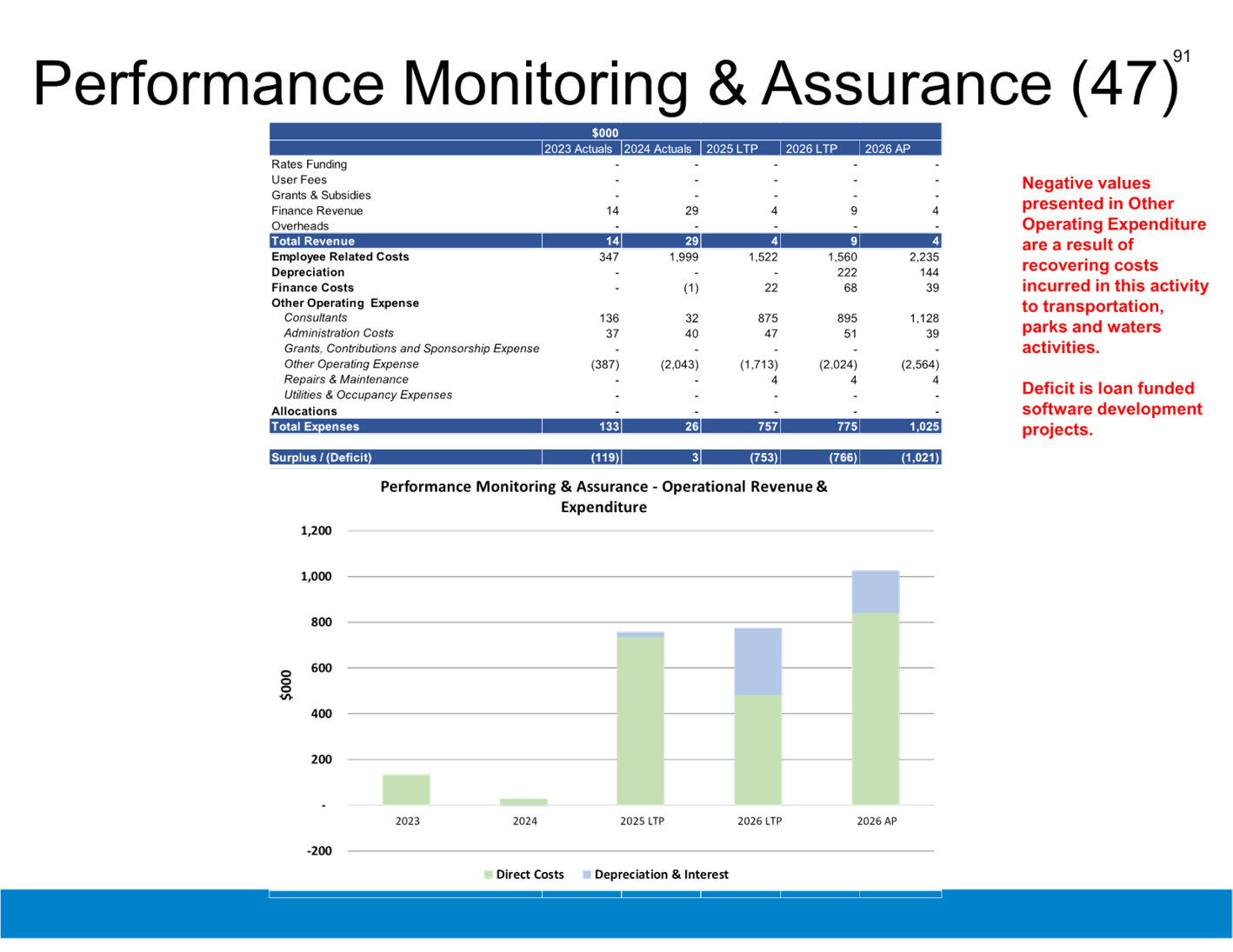
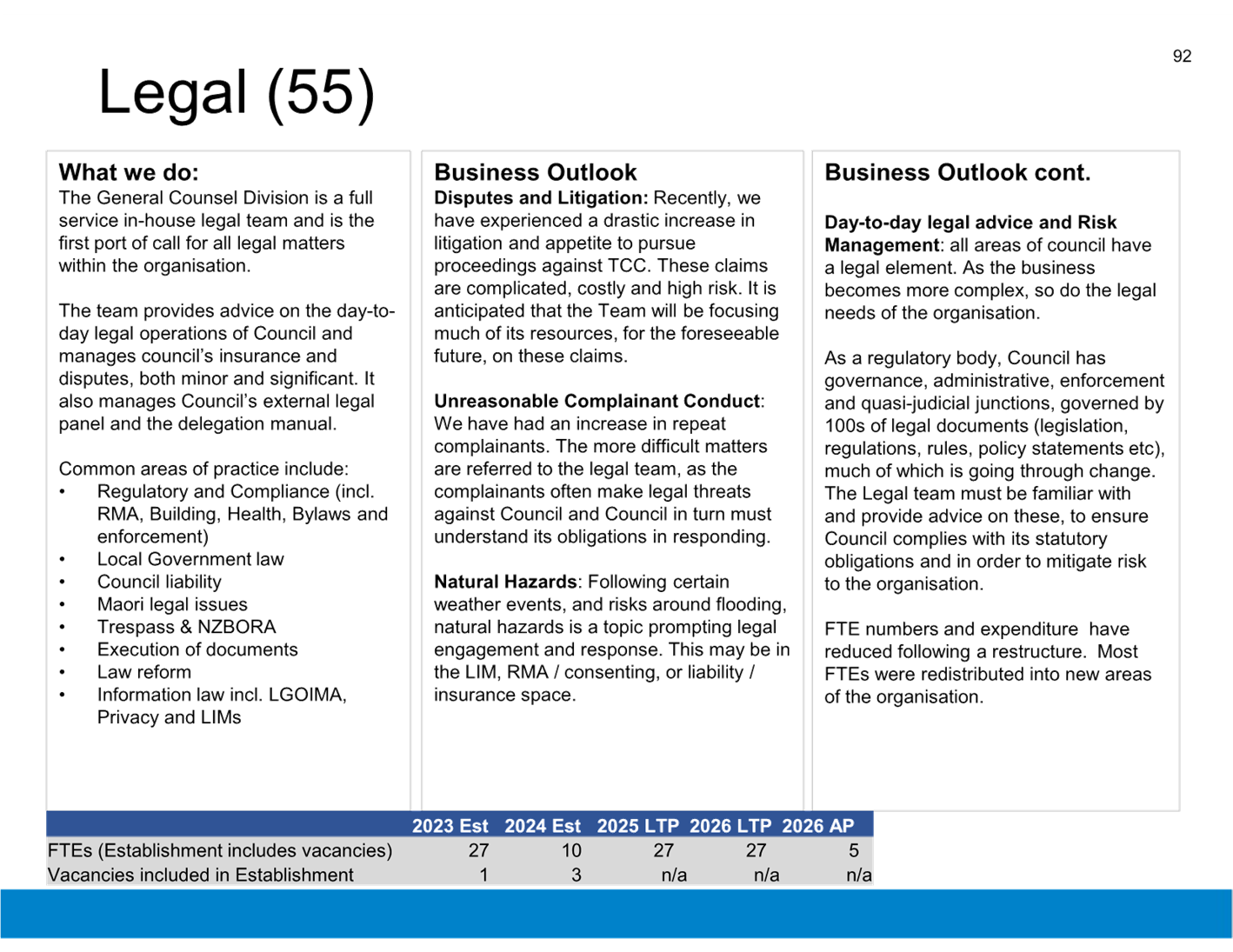
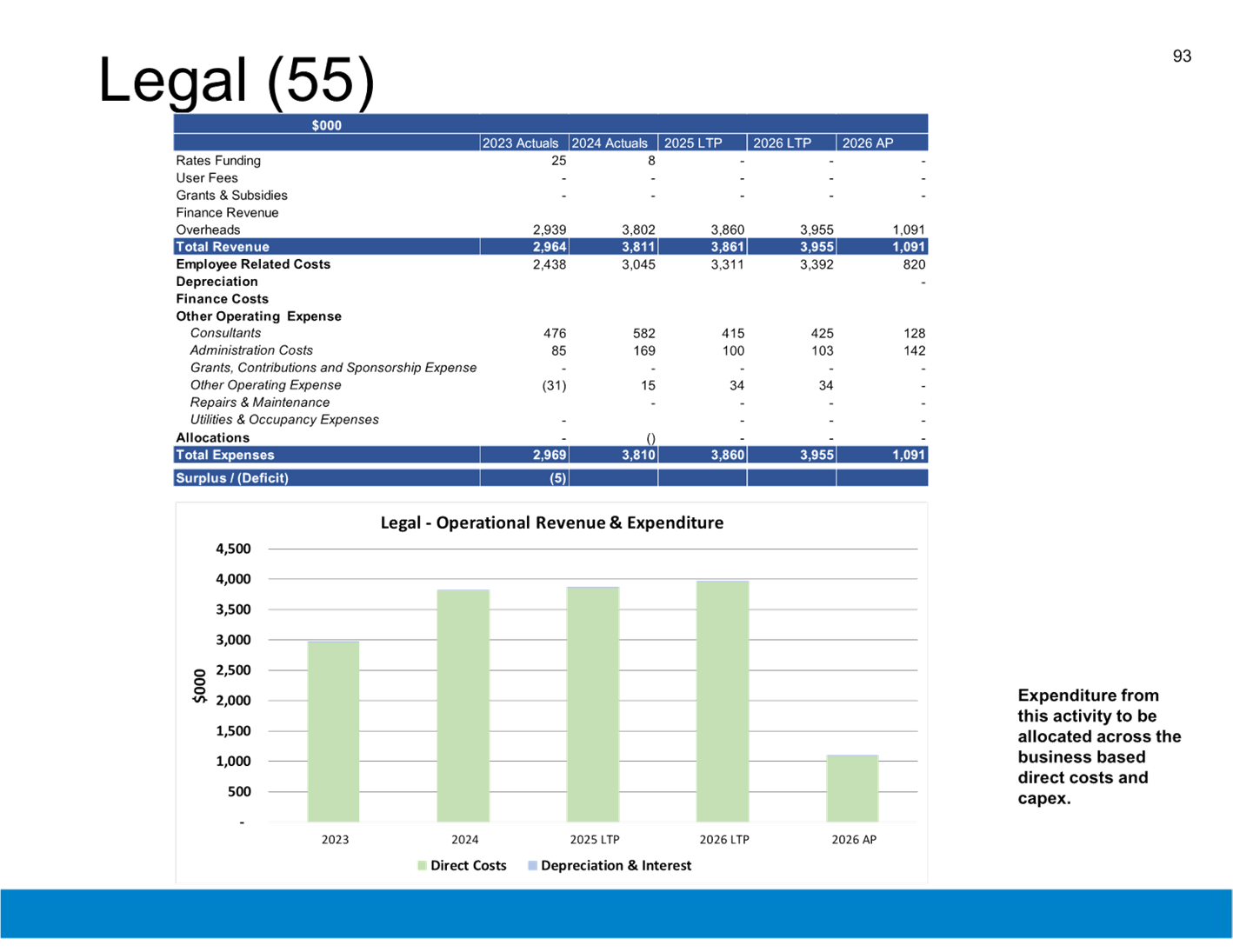


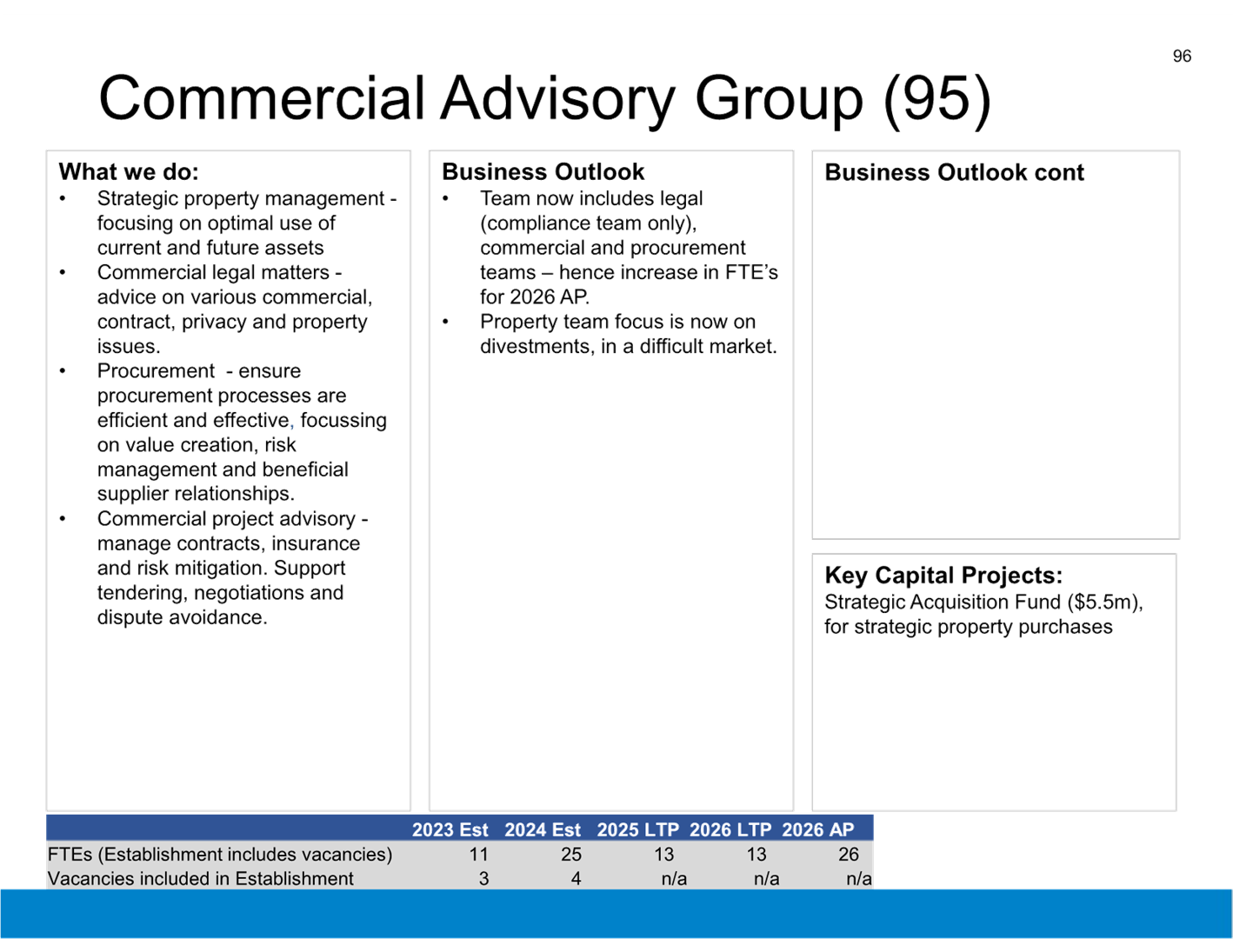
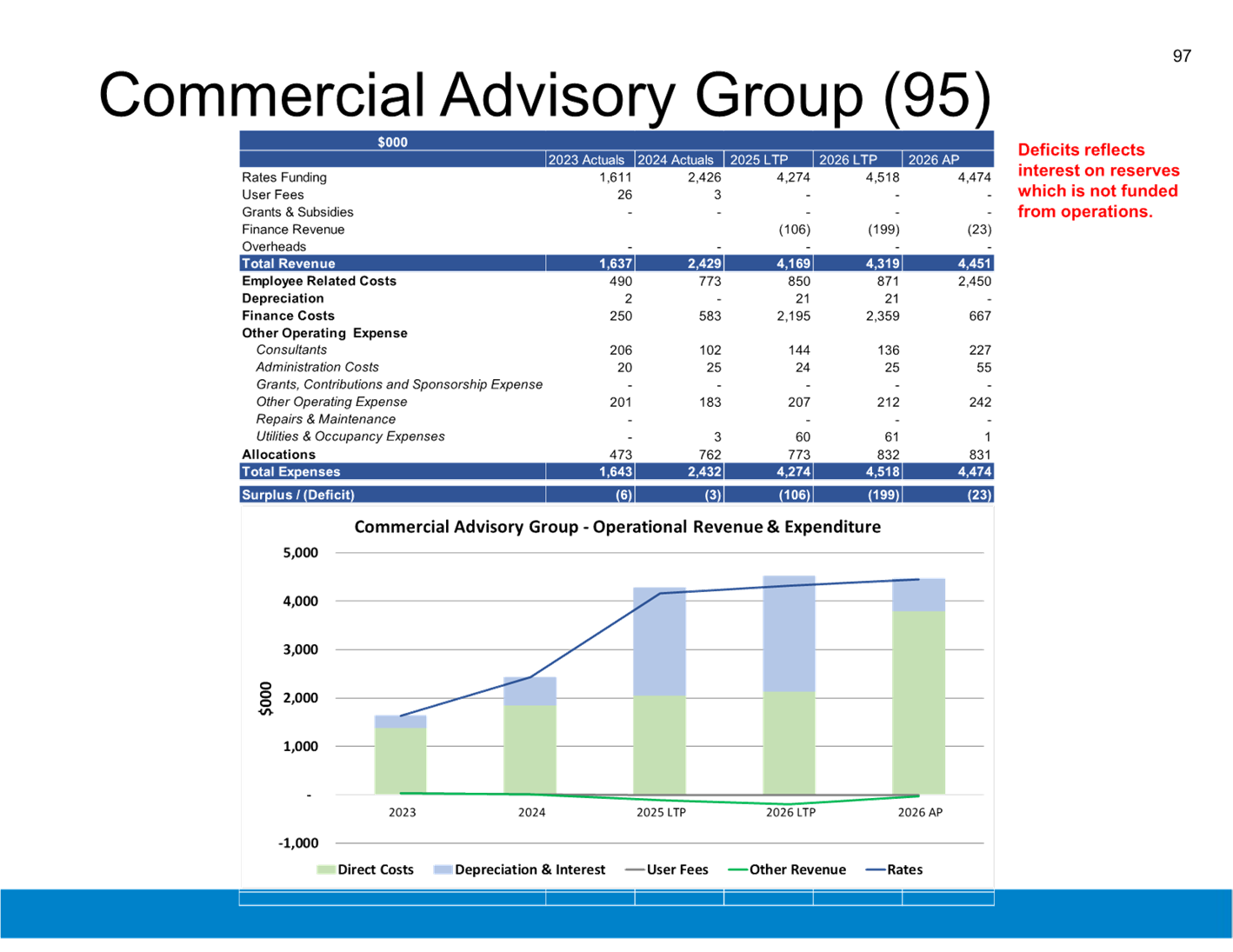
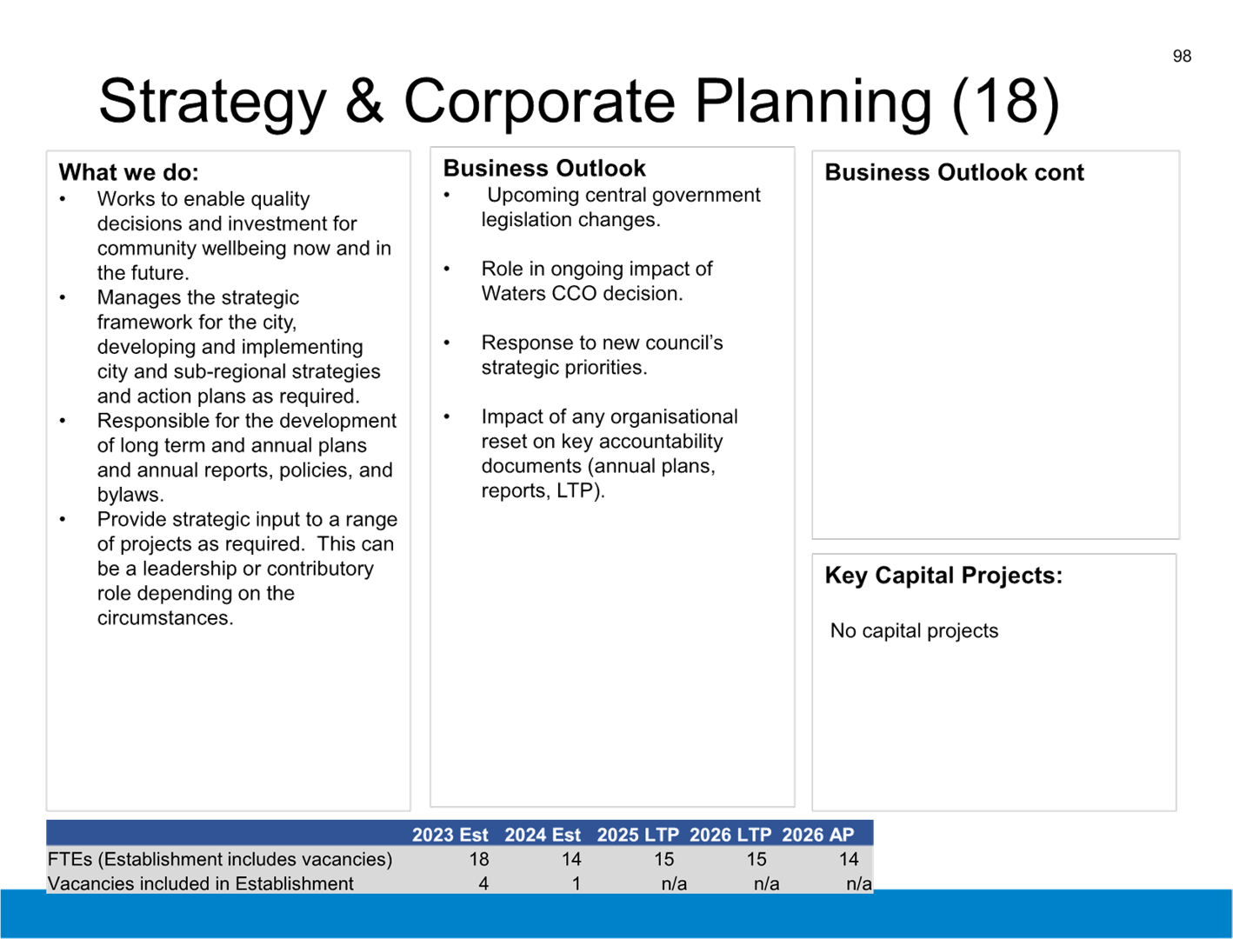
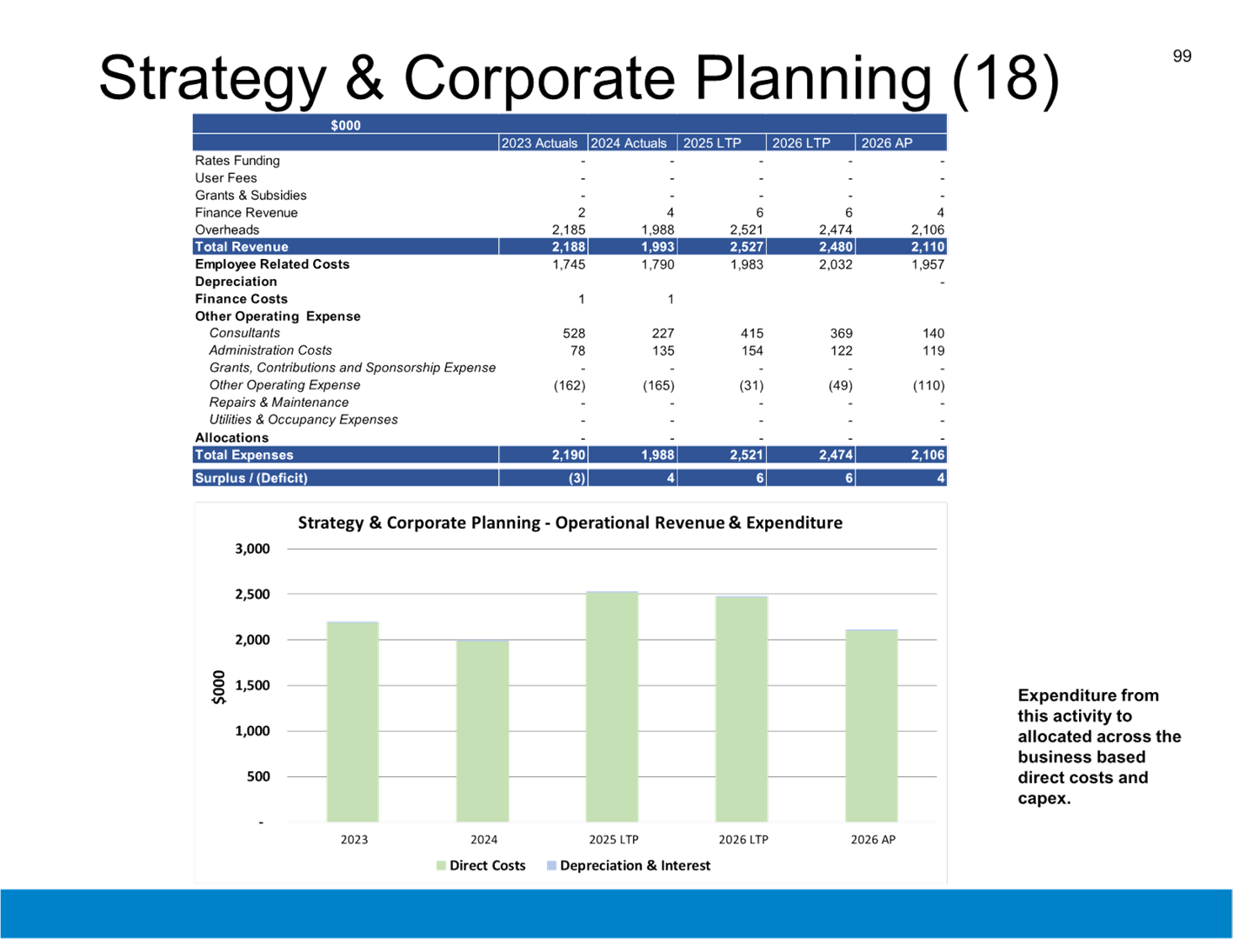
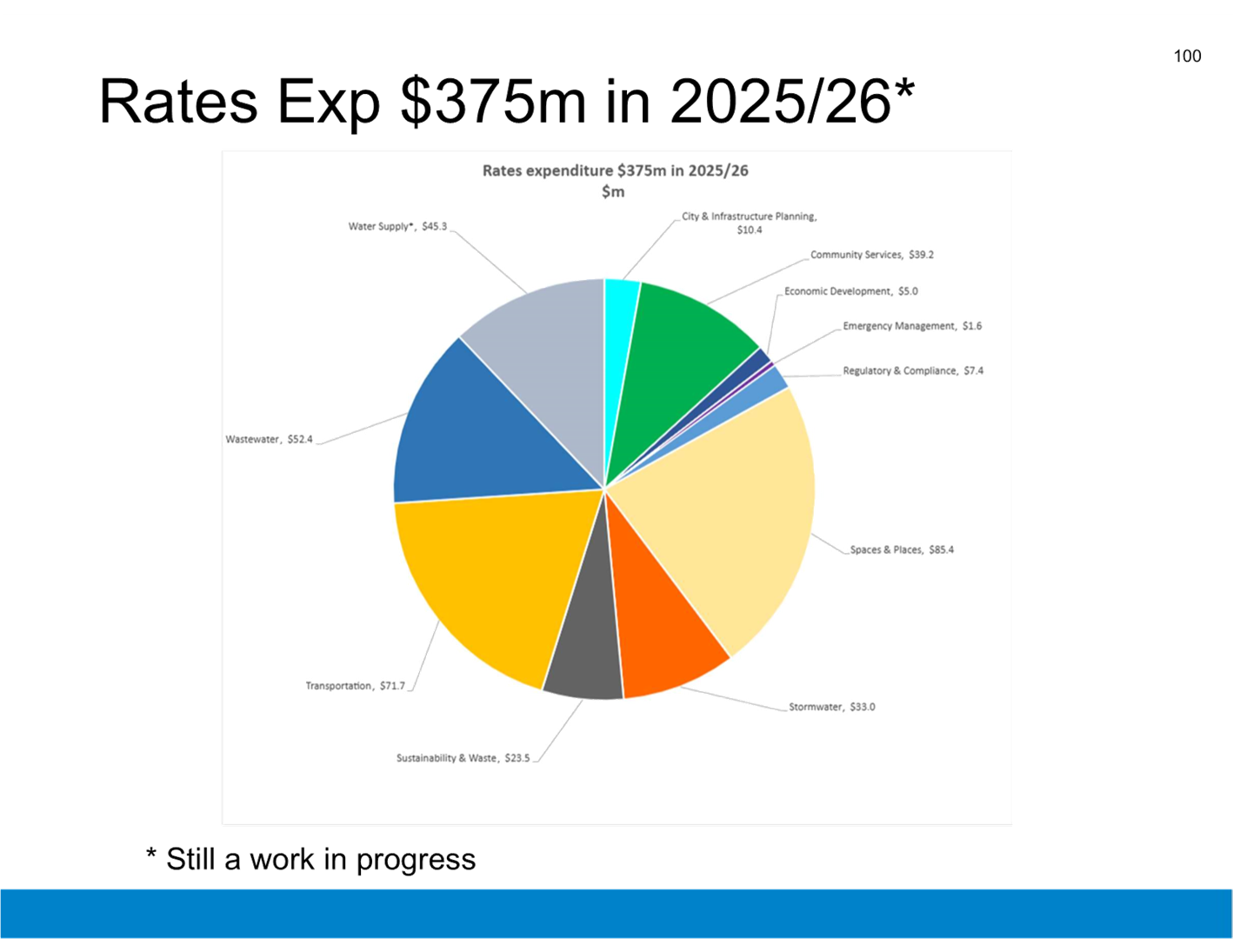
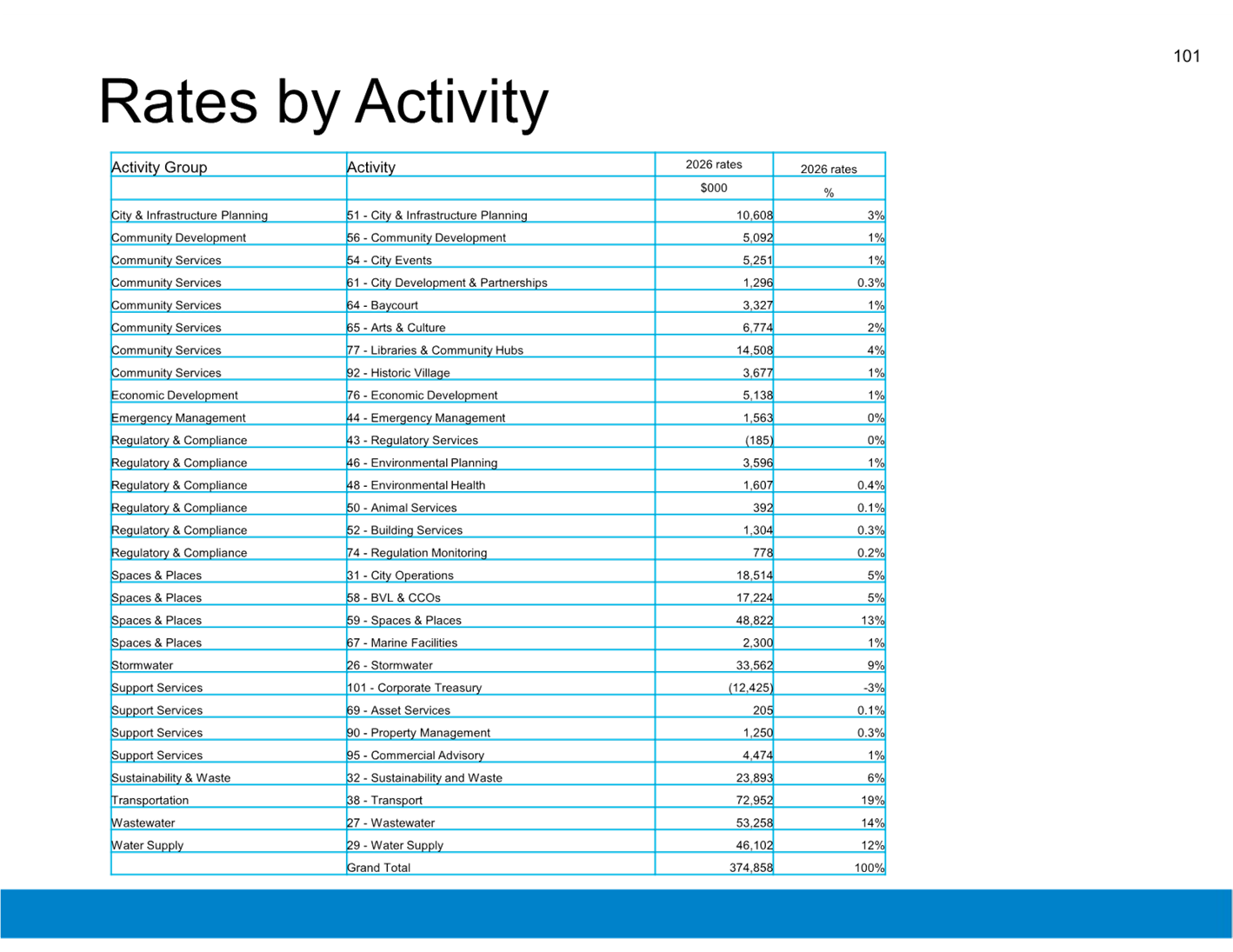
|
Ordinary Council meeting Agenda
|
24 February 2025
|
12 Discussion of late
items
|
Ordinary Council meeting Agenda
|
24 February 2025
|
13 Public excluded
session
Resolution to exclude
the public
|
Recommendations
That the public be
excluded from the following parts of the proceedings of this meeting.
The general subject
matter of each matter to be considered while the public is excluded, the
reason for passing this resolution in relation to each matter, and the
specific grounds under section 48 of the Local Government Official
Information and Meetings Act 1987 for the passing of this resolution are as
follows:
|
General subject of each matter to be
considered
|
Reason for passing this resolution in
relation to each matter
|
Ground(s) under section 48 for the
passing of this resolution
|
|
13.1 - Asset Realisation Reserve - 376
No.1 Road, Te Puke (Orchard Block) Divestment Objectives and Disposal
Classification
|
s7(2)(i) - The withholding of the information is
necessary to enable Council to carry on, without prejudice or disadvantage,
negotiations (including commercial and industrial negotiations)
|
s48(1)(a) - the public conduct of the relevant
part of the proceedings of the meeting would be likely to result in the
disclosure of information for which good reason for withholding would exist
under section 6 or section 7
|
|
13.2 - Asset Realisation Reserve -
Kairua Road - Divestment Objectives and Disposal Classification
|
s7(2)(i) - The withholding of the information is
necessary to enable Council to carry on, without prejudice or disadvantage,
negotiations (including commercial and industrial negotiations)
|
s48(1)(a) - the public conduct of the relevant
part of the proceedings of the meeting would be likely to result in the
disclosure of information for which good reason for withholding would exist
under section 6 or section 7
|
|
|
Ordinary Council meeting Agenda
|
24 February 2025
|
14 Closing karakia































































































































